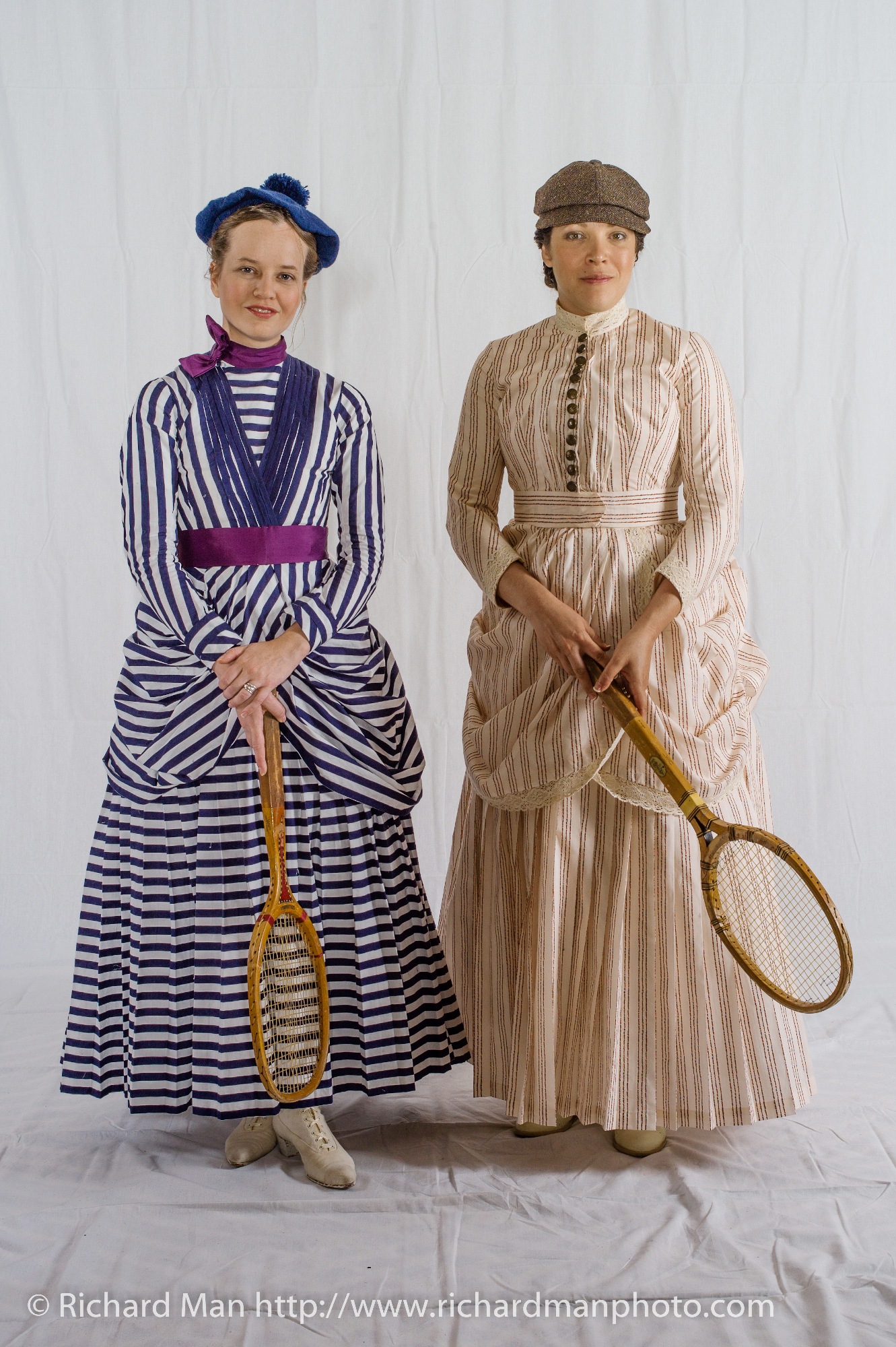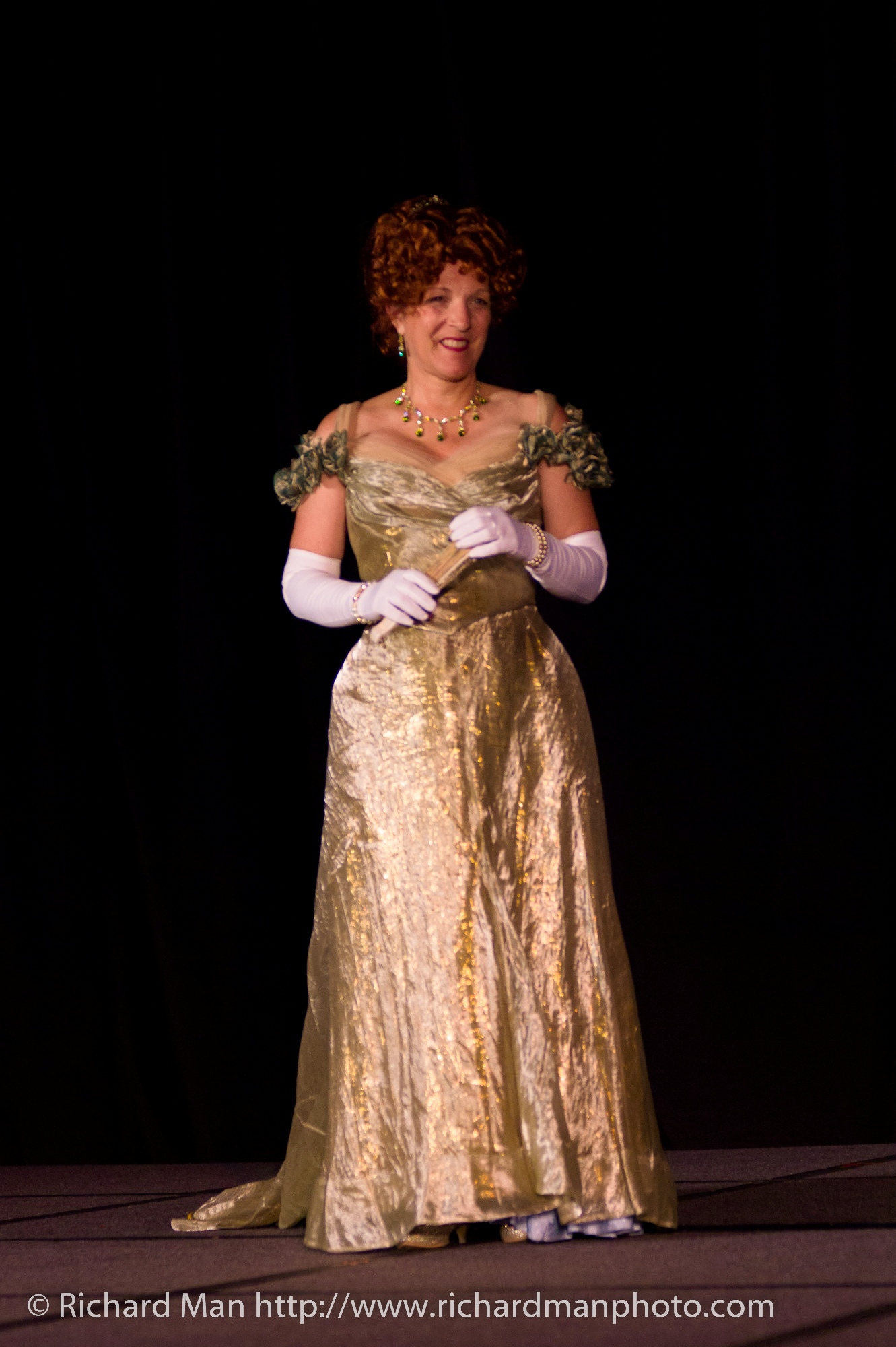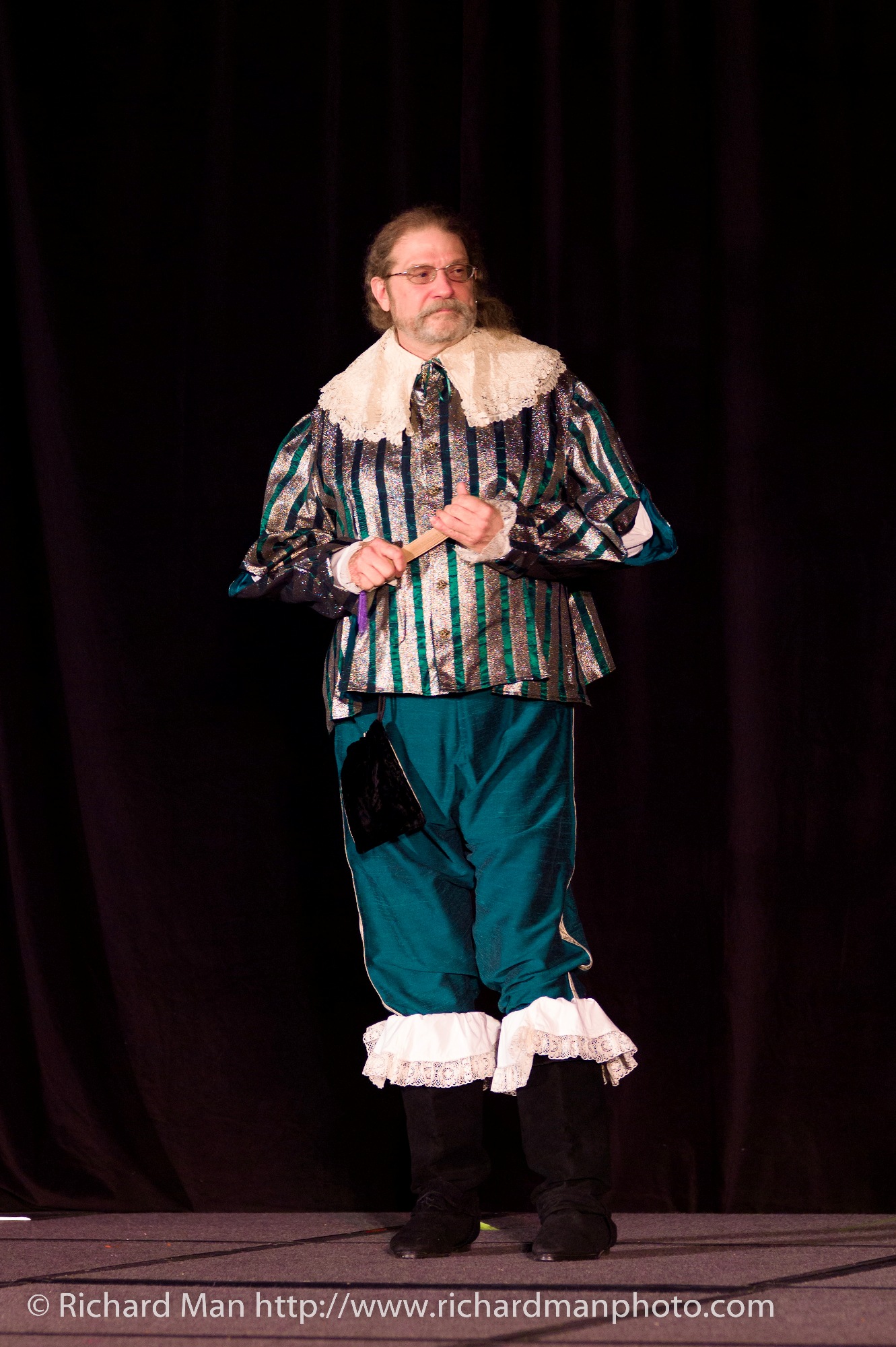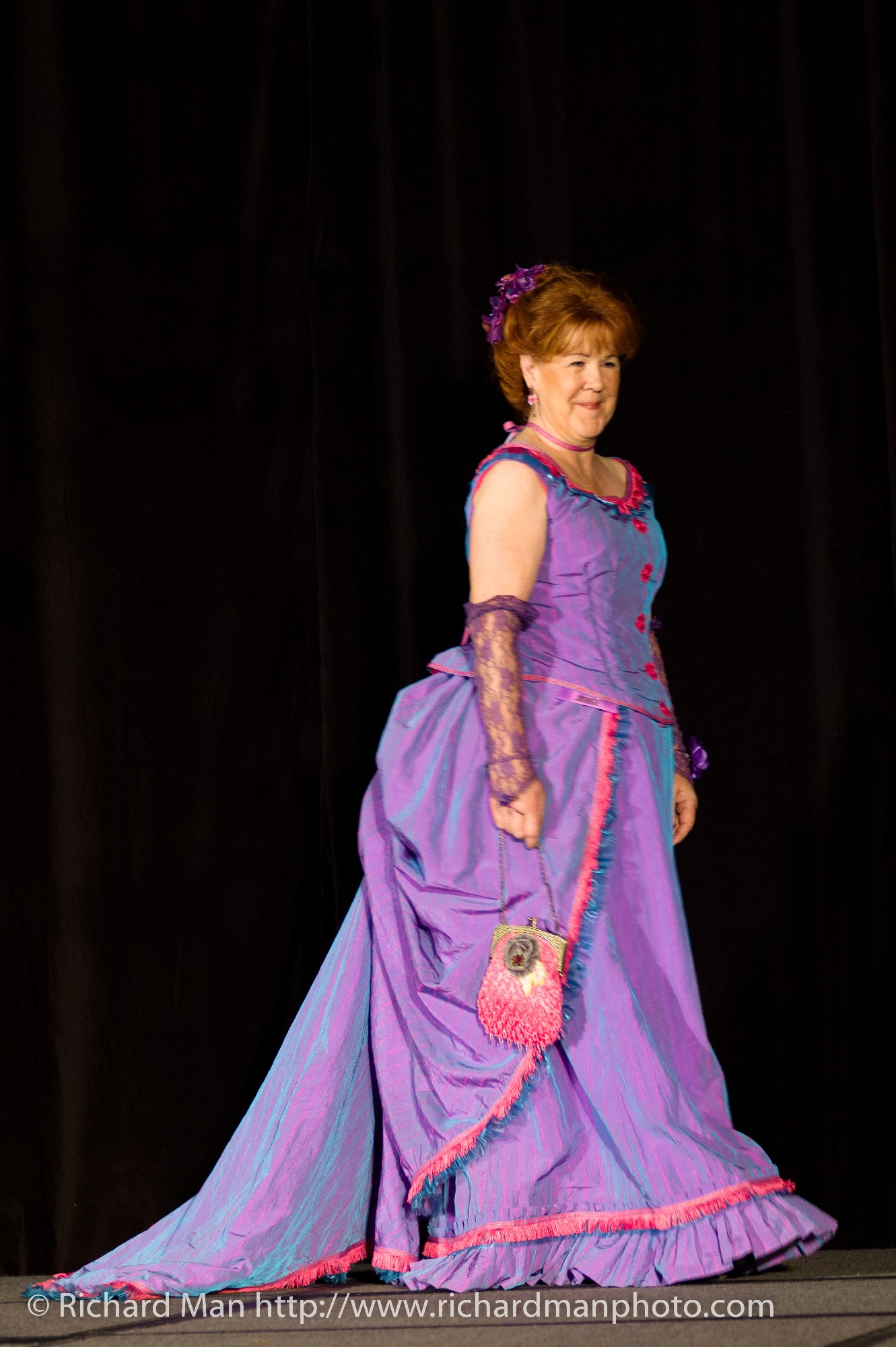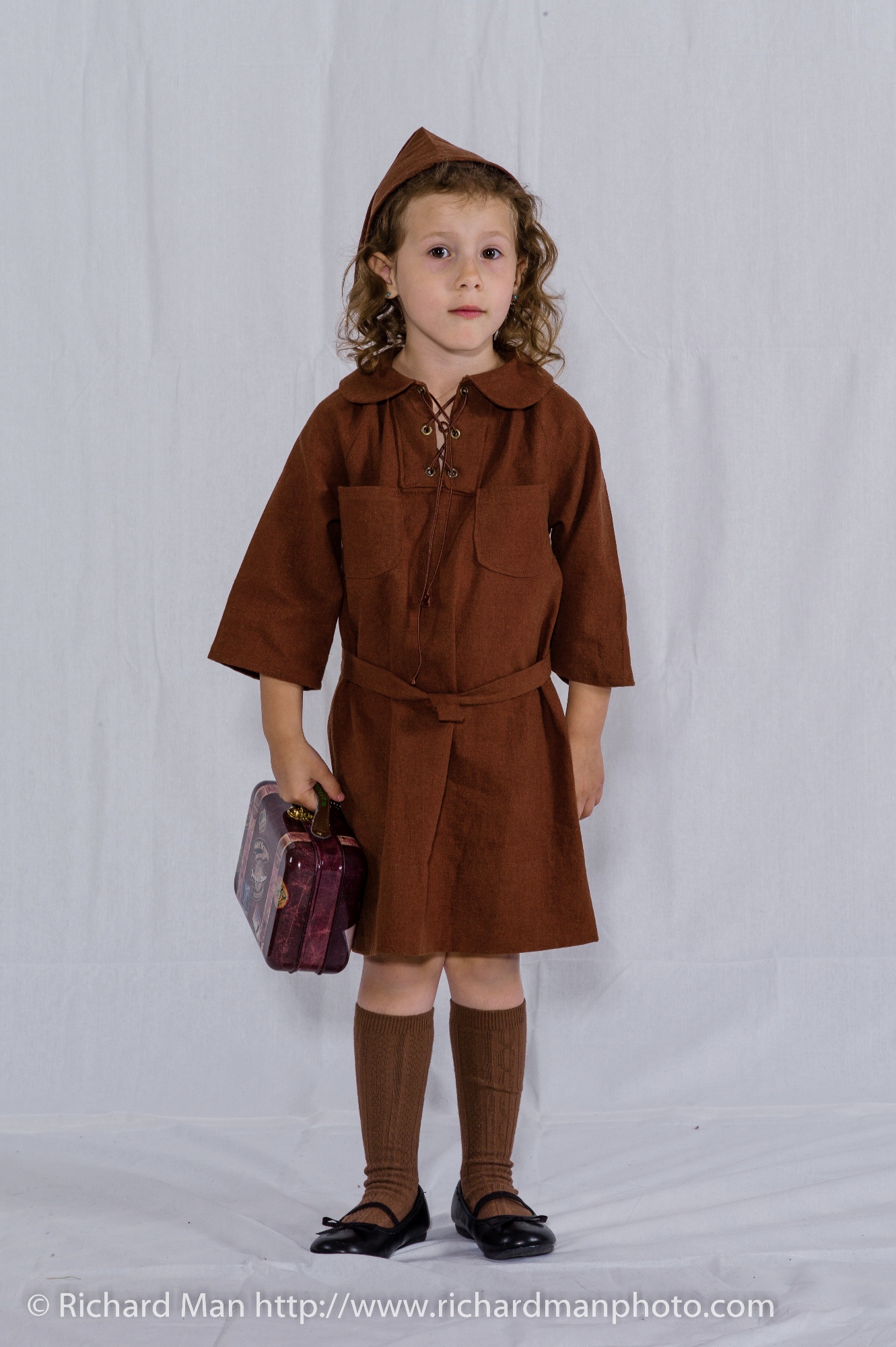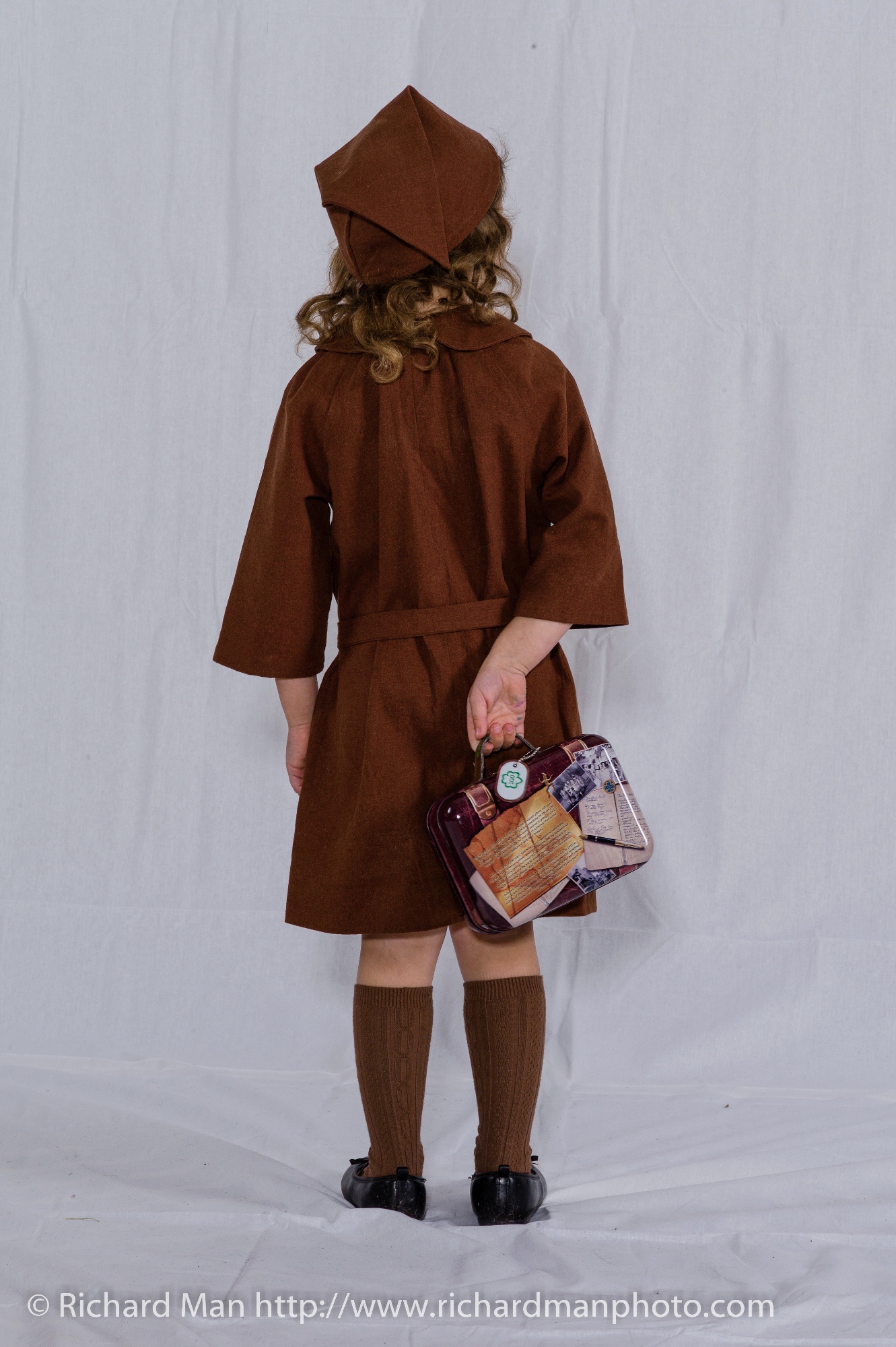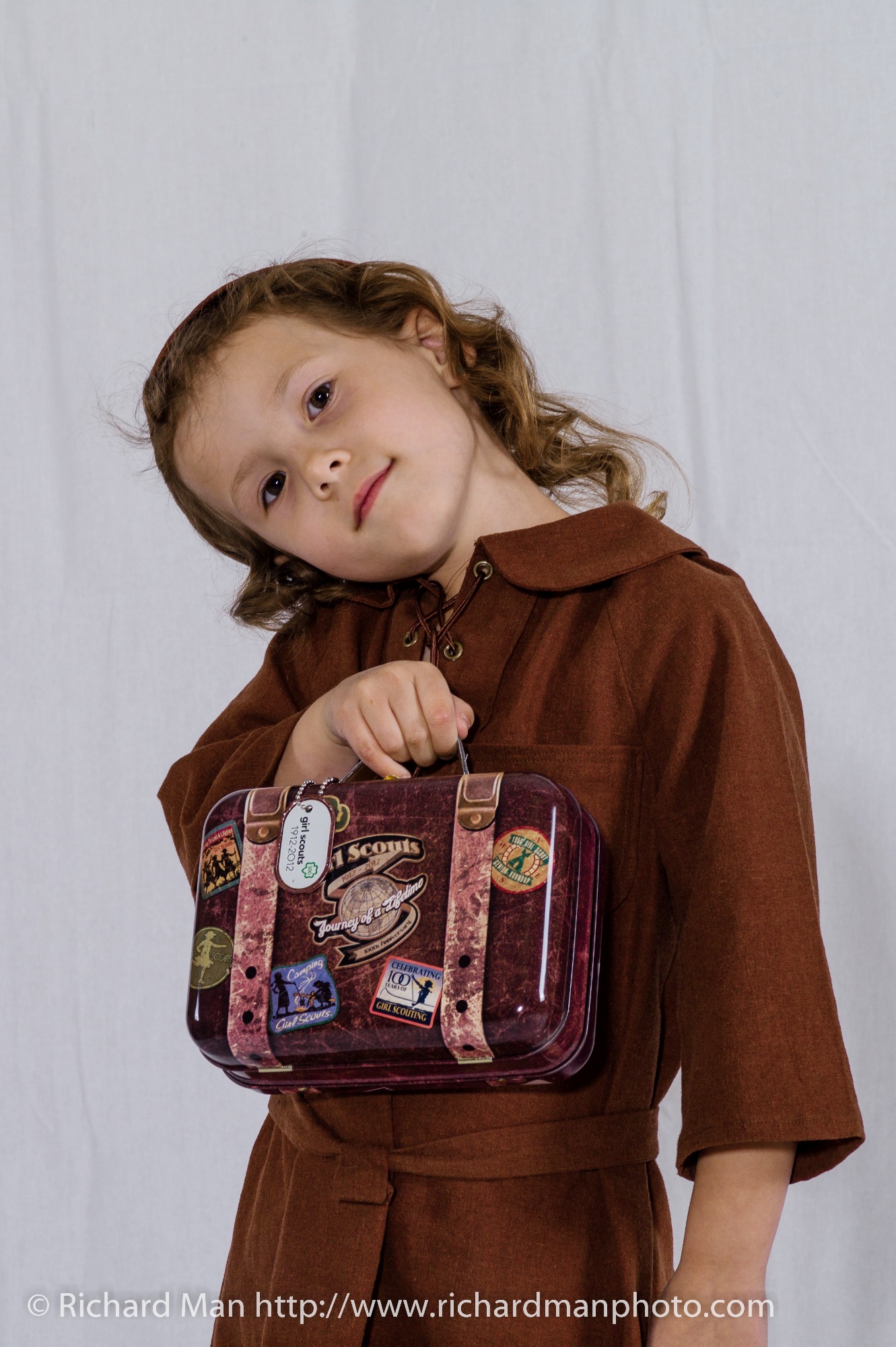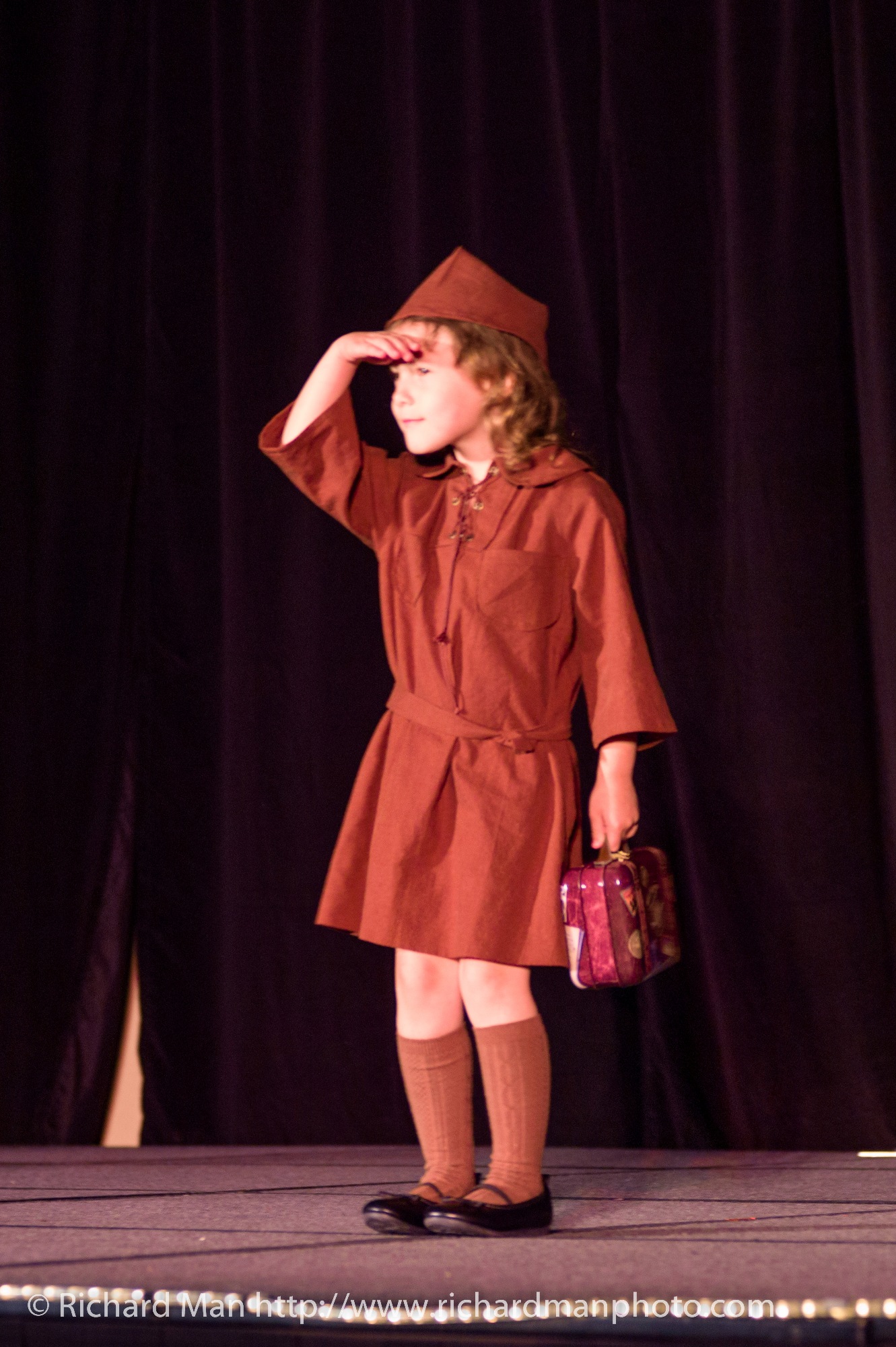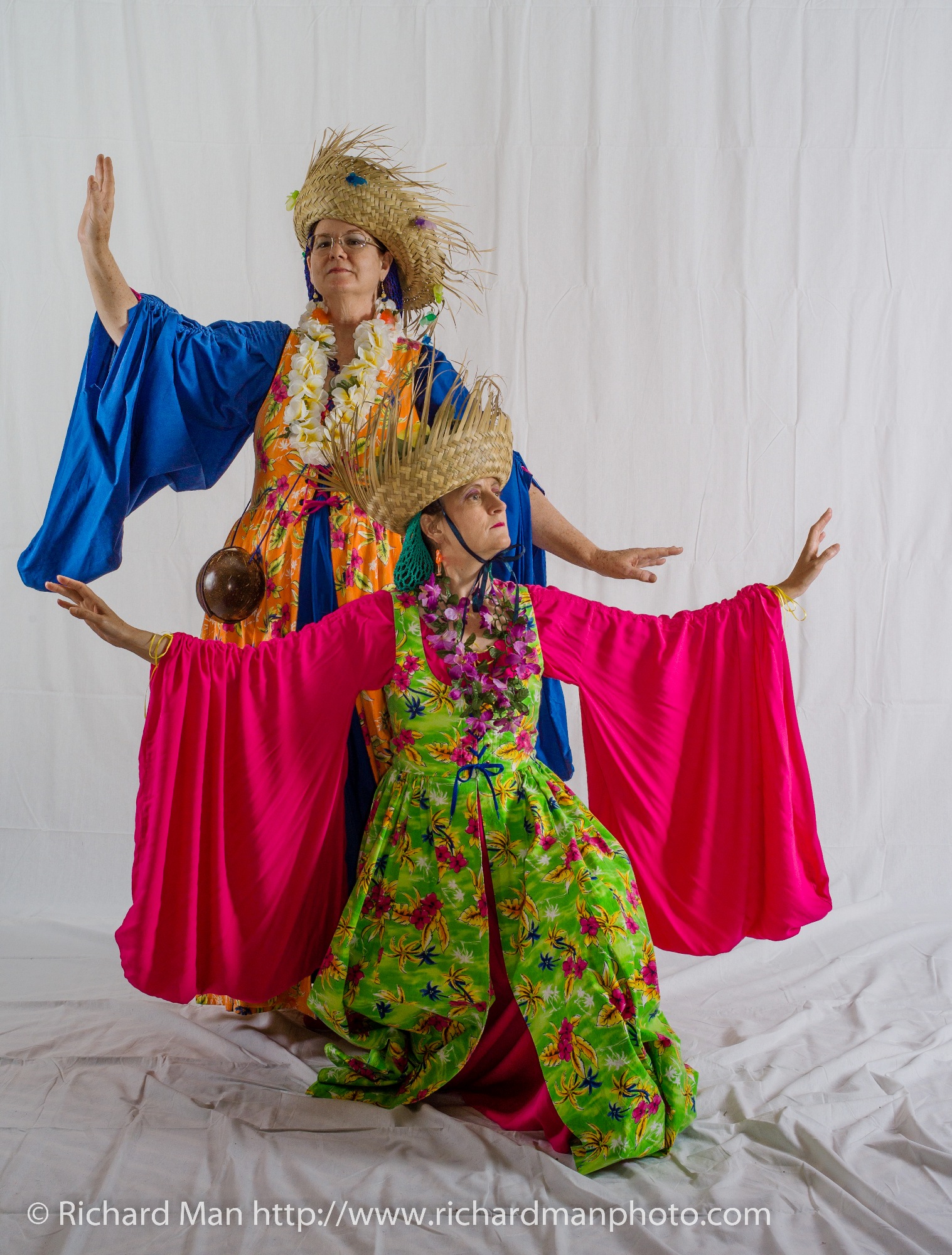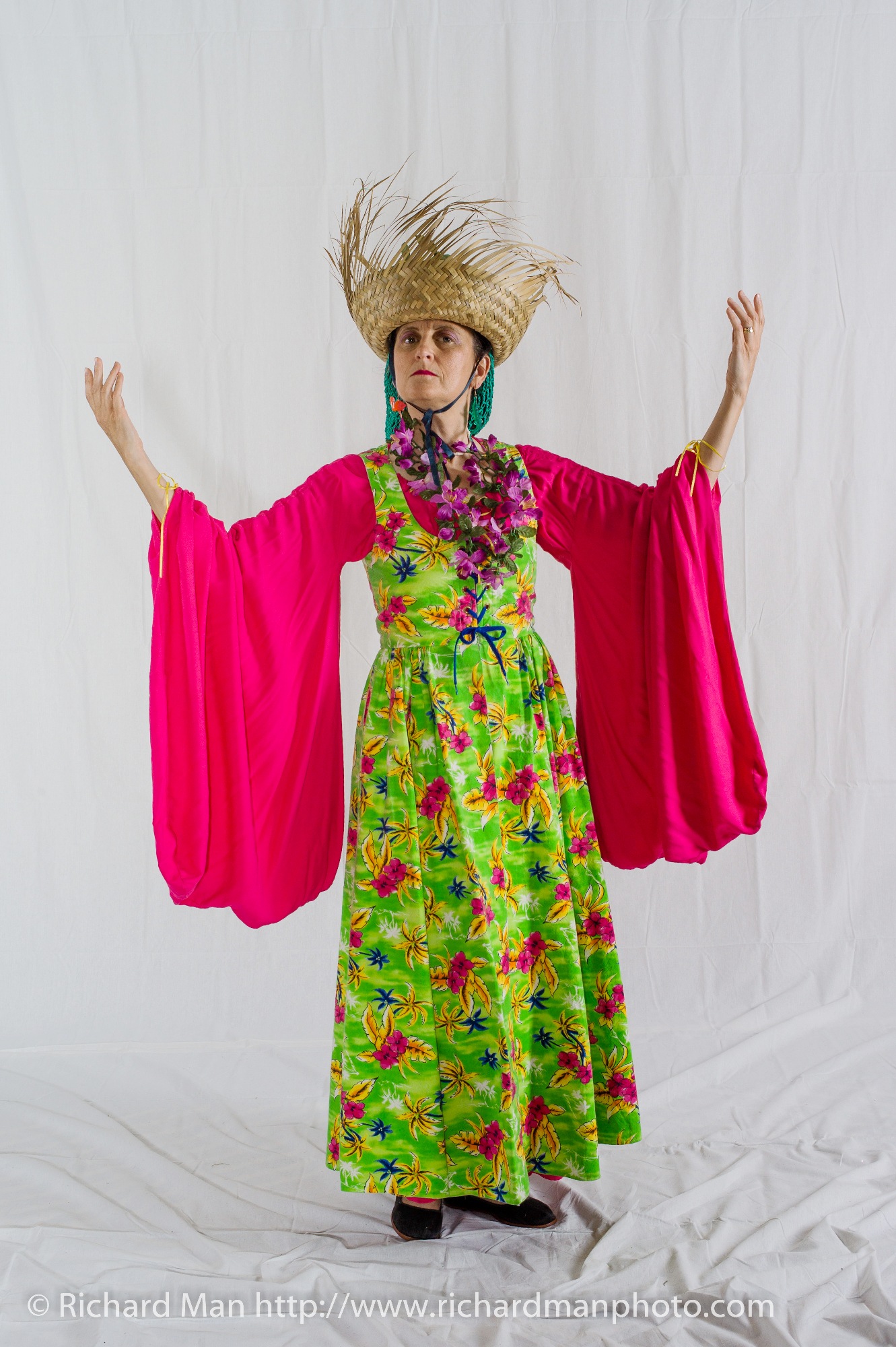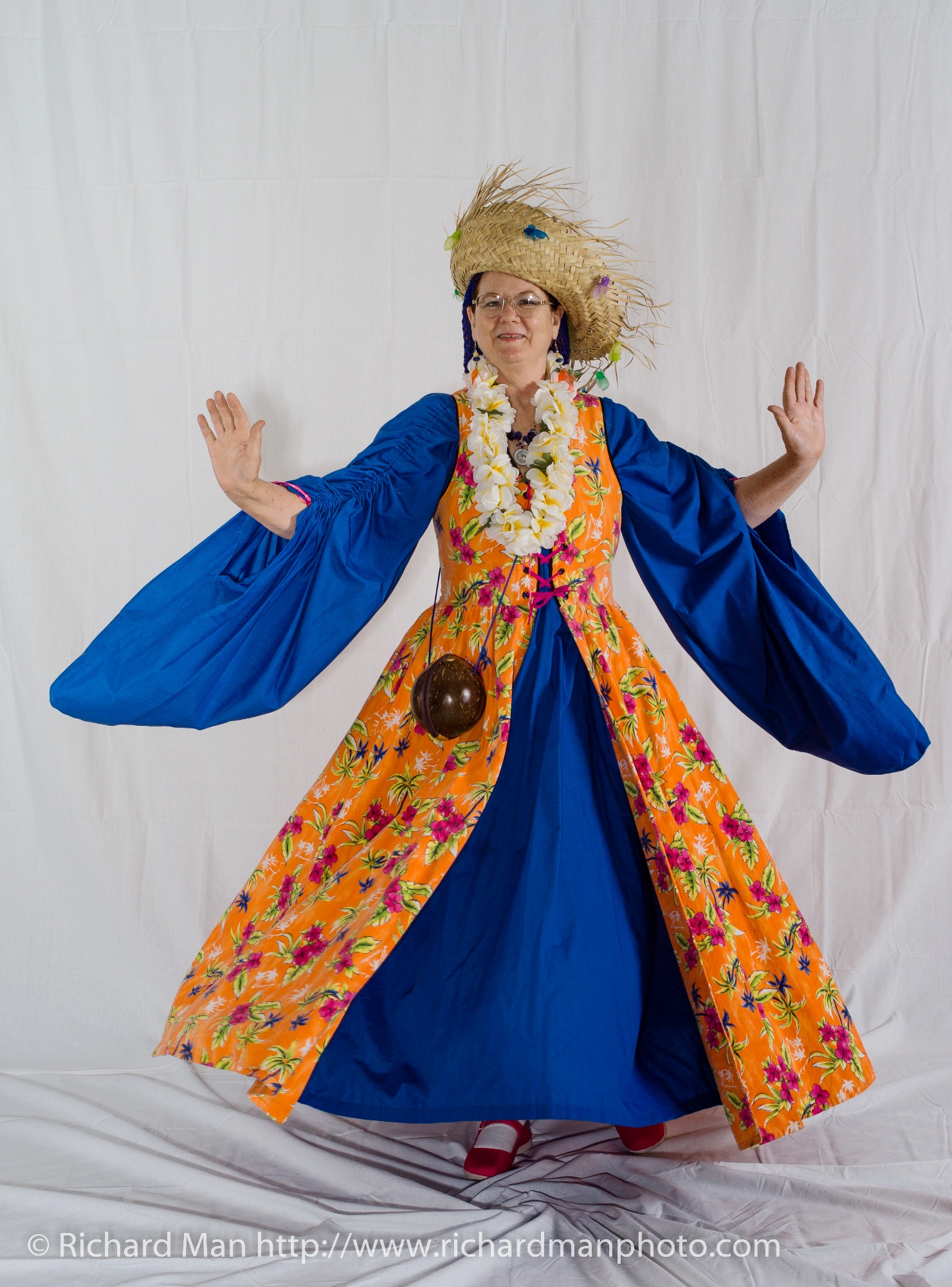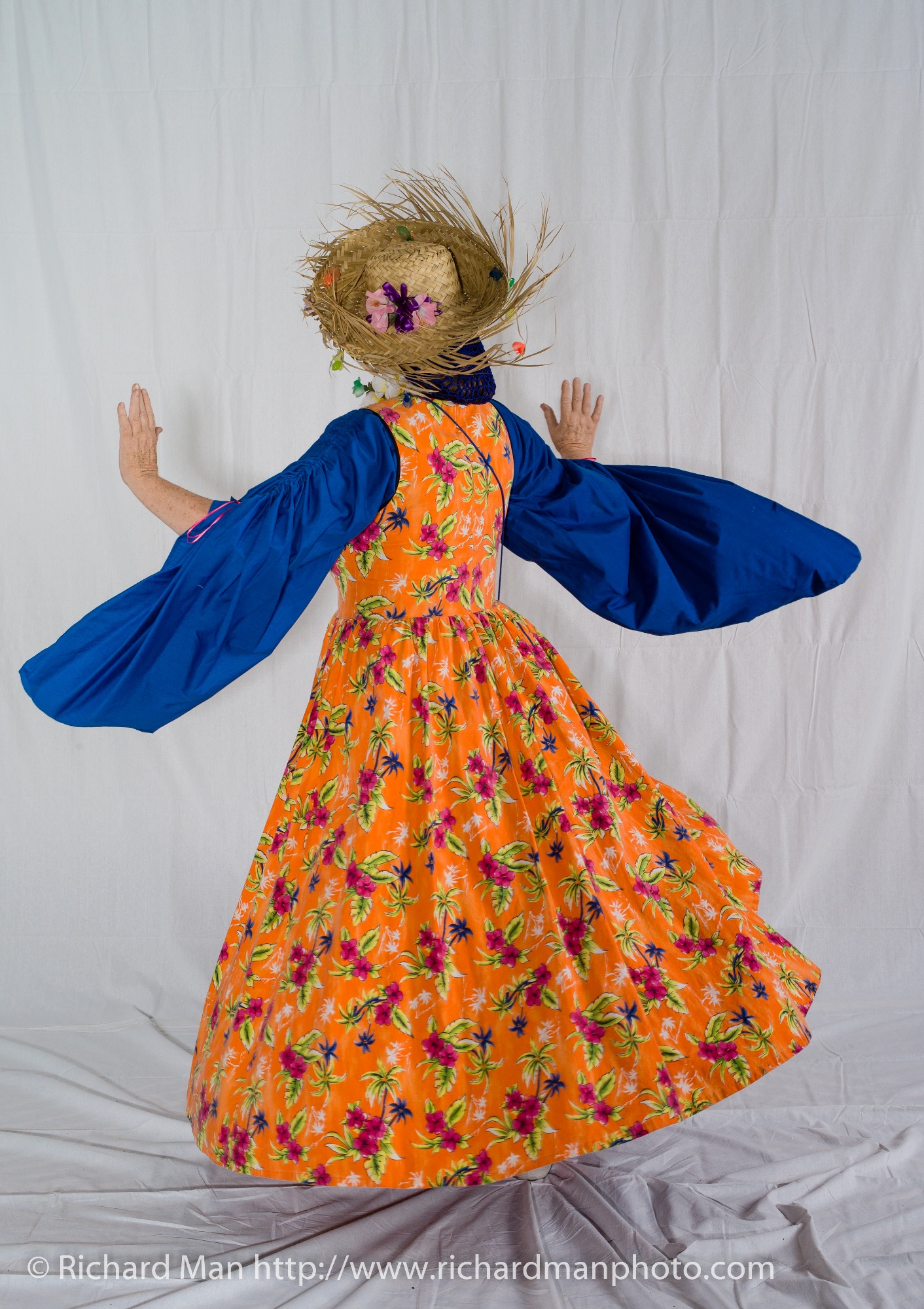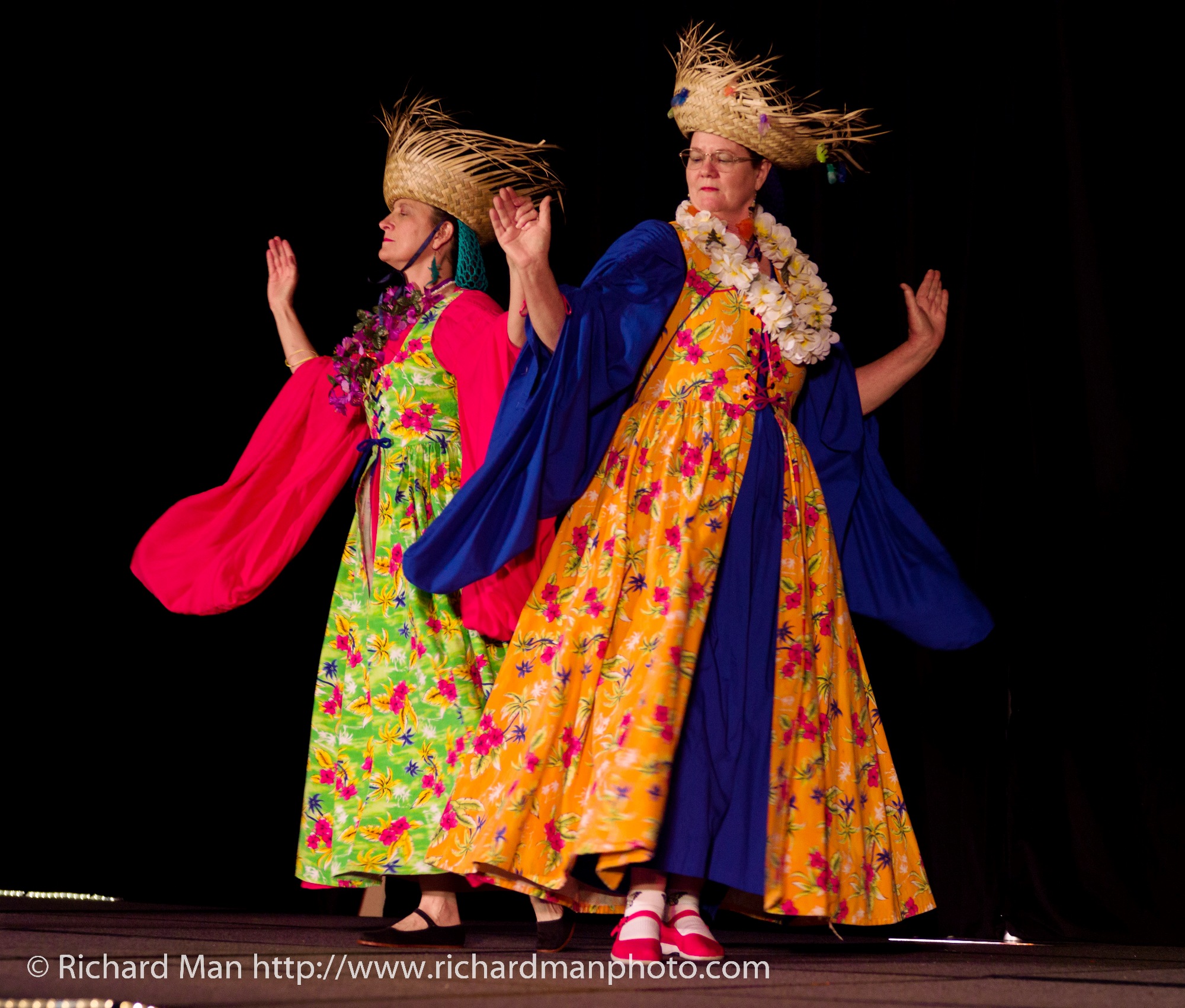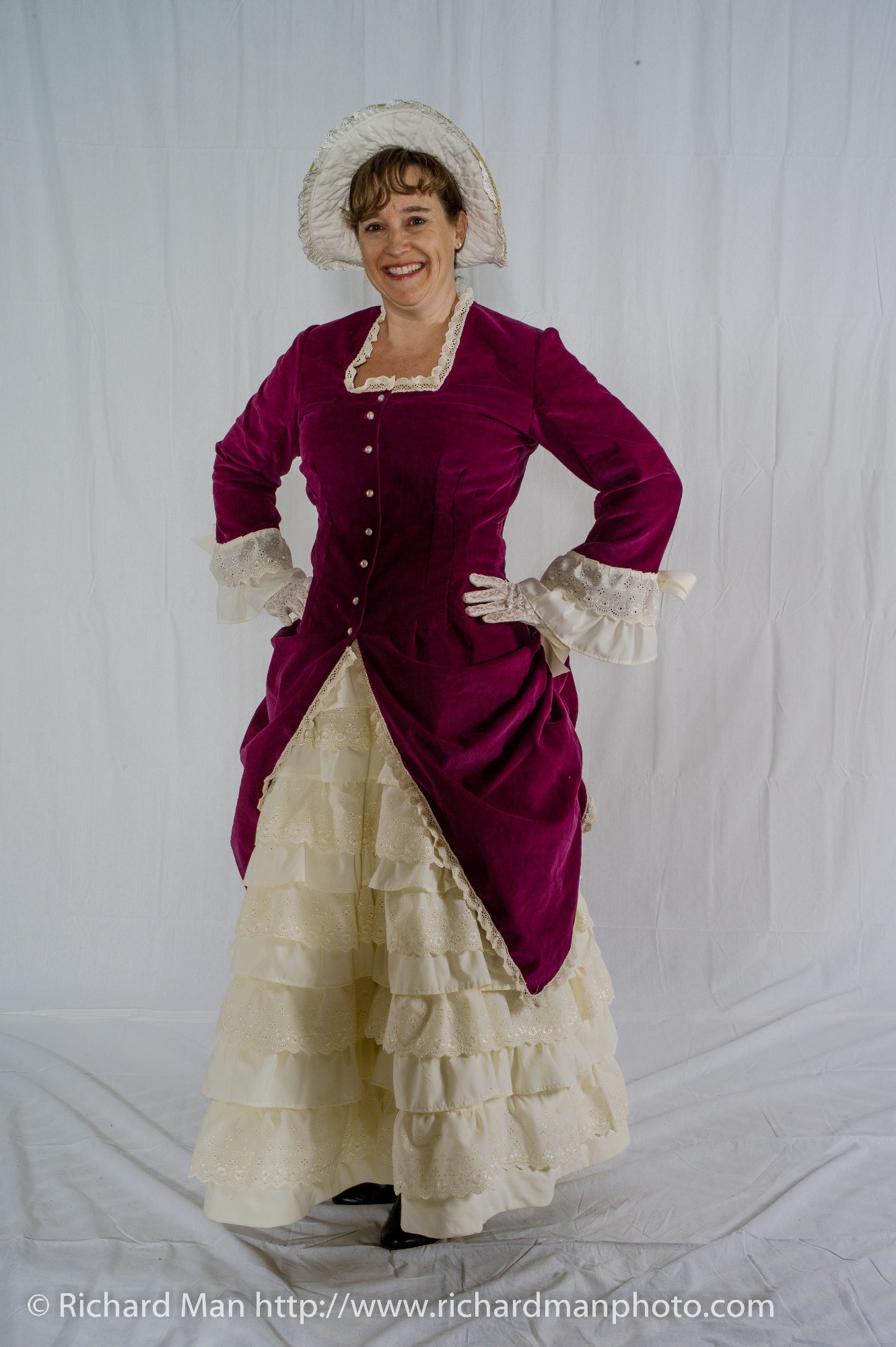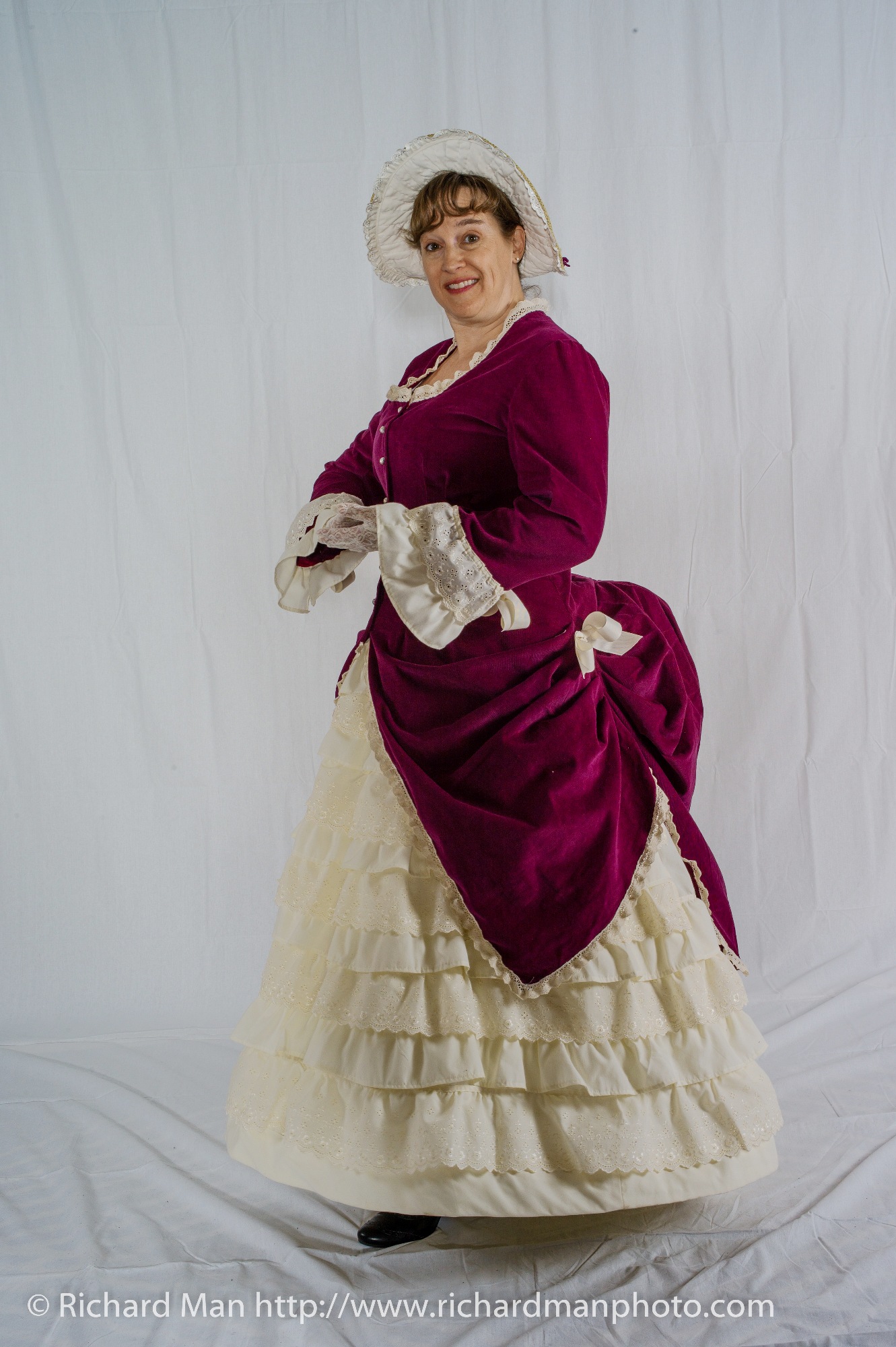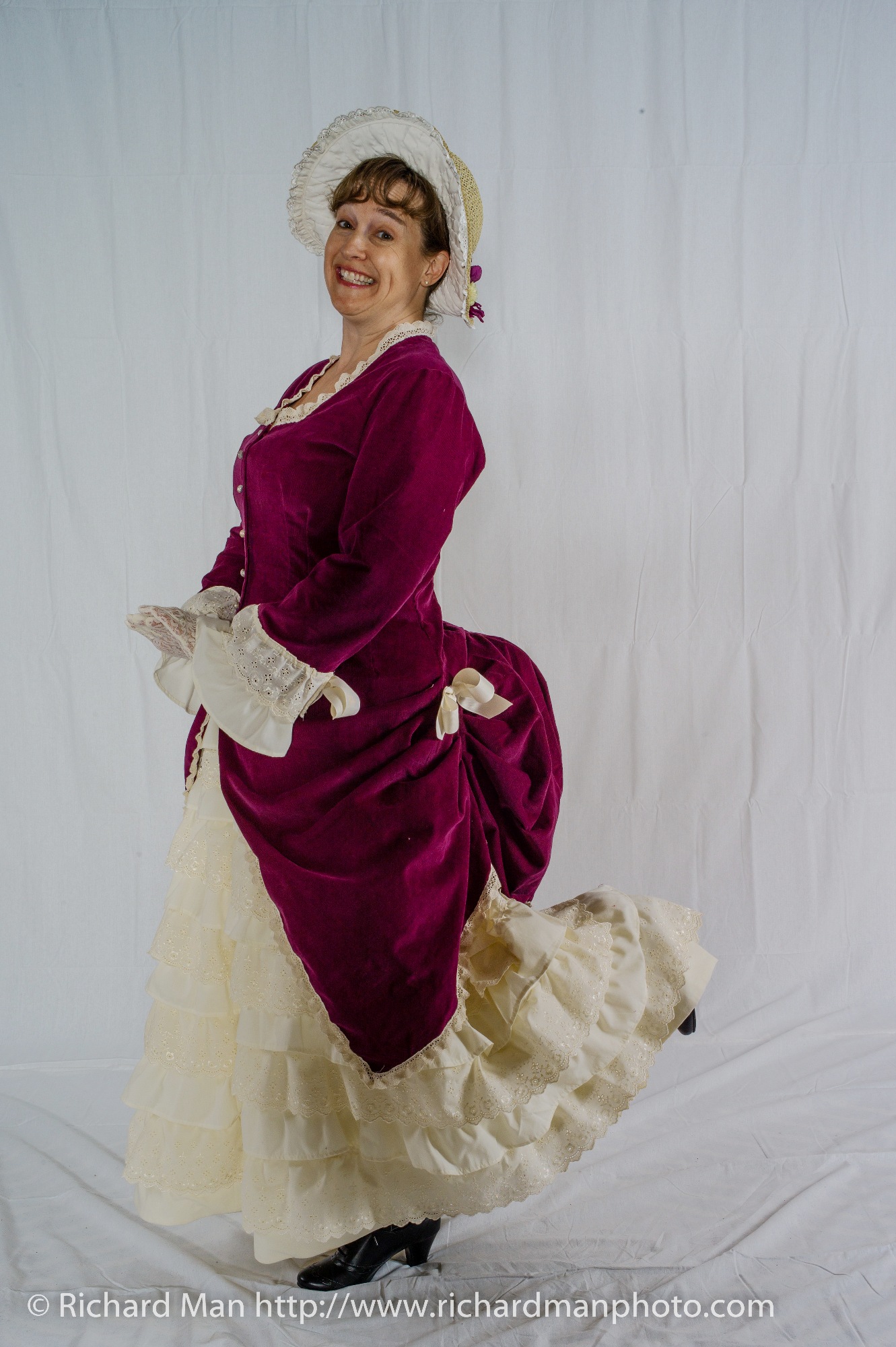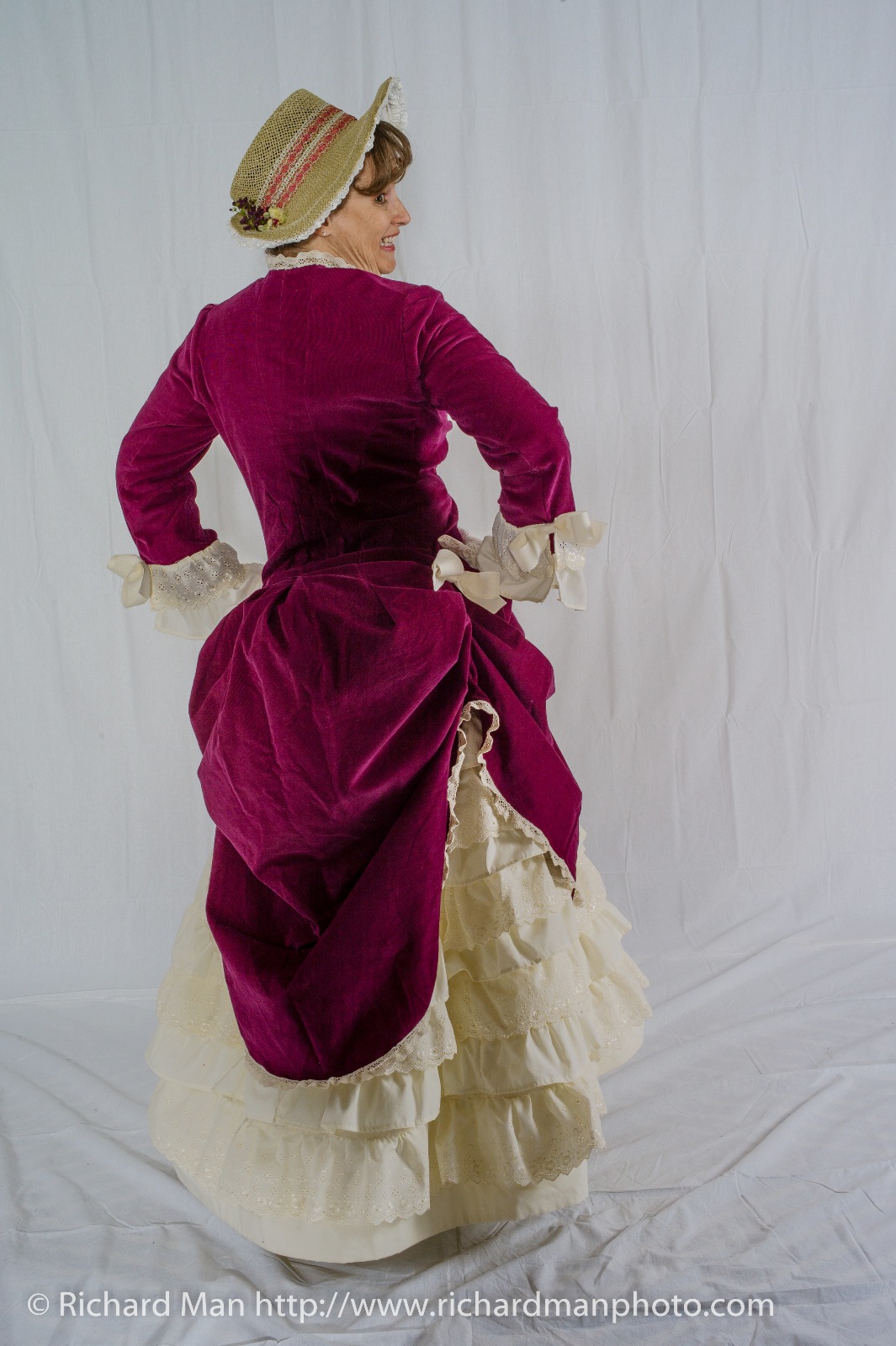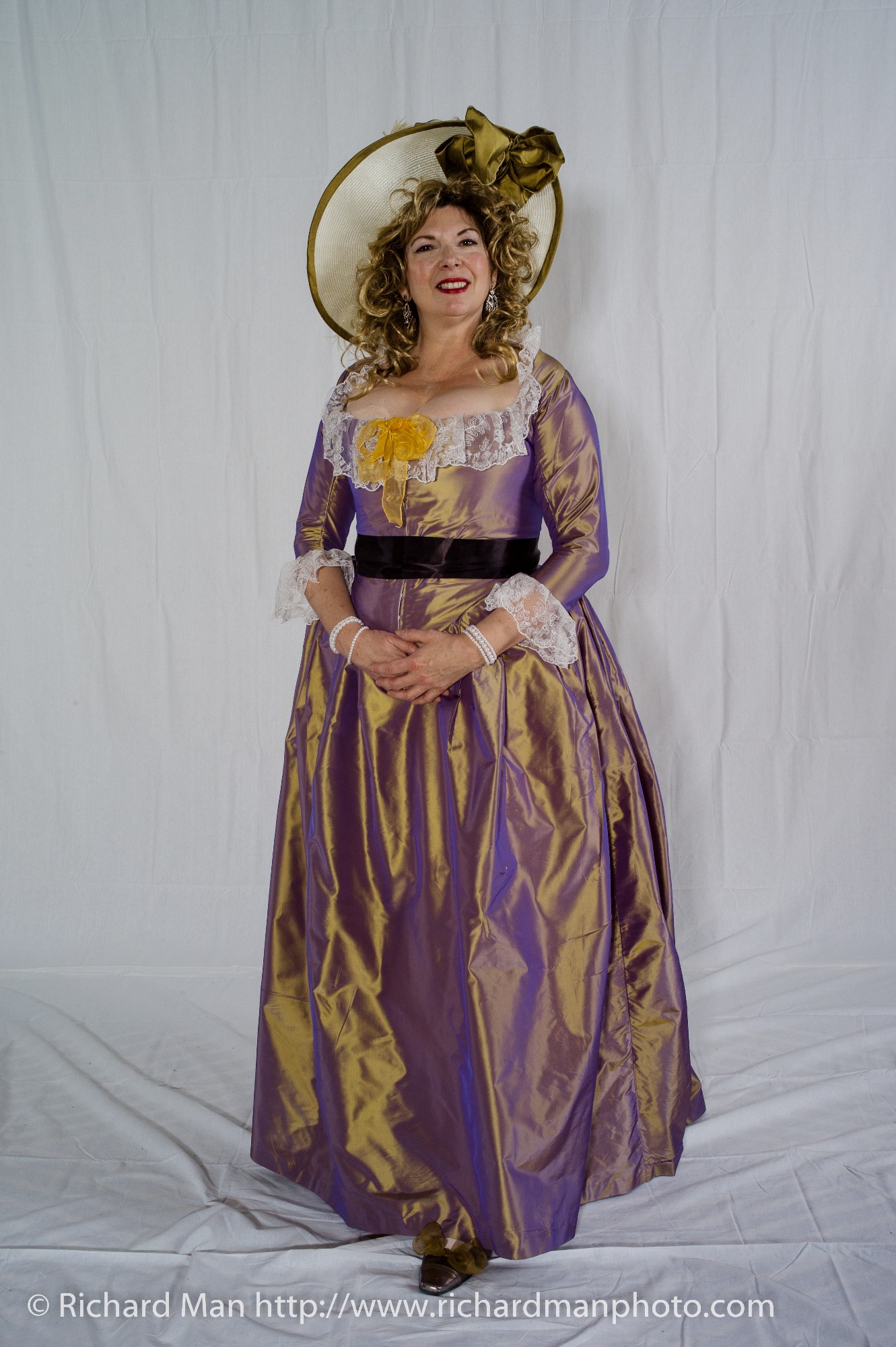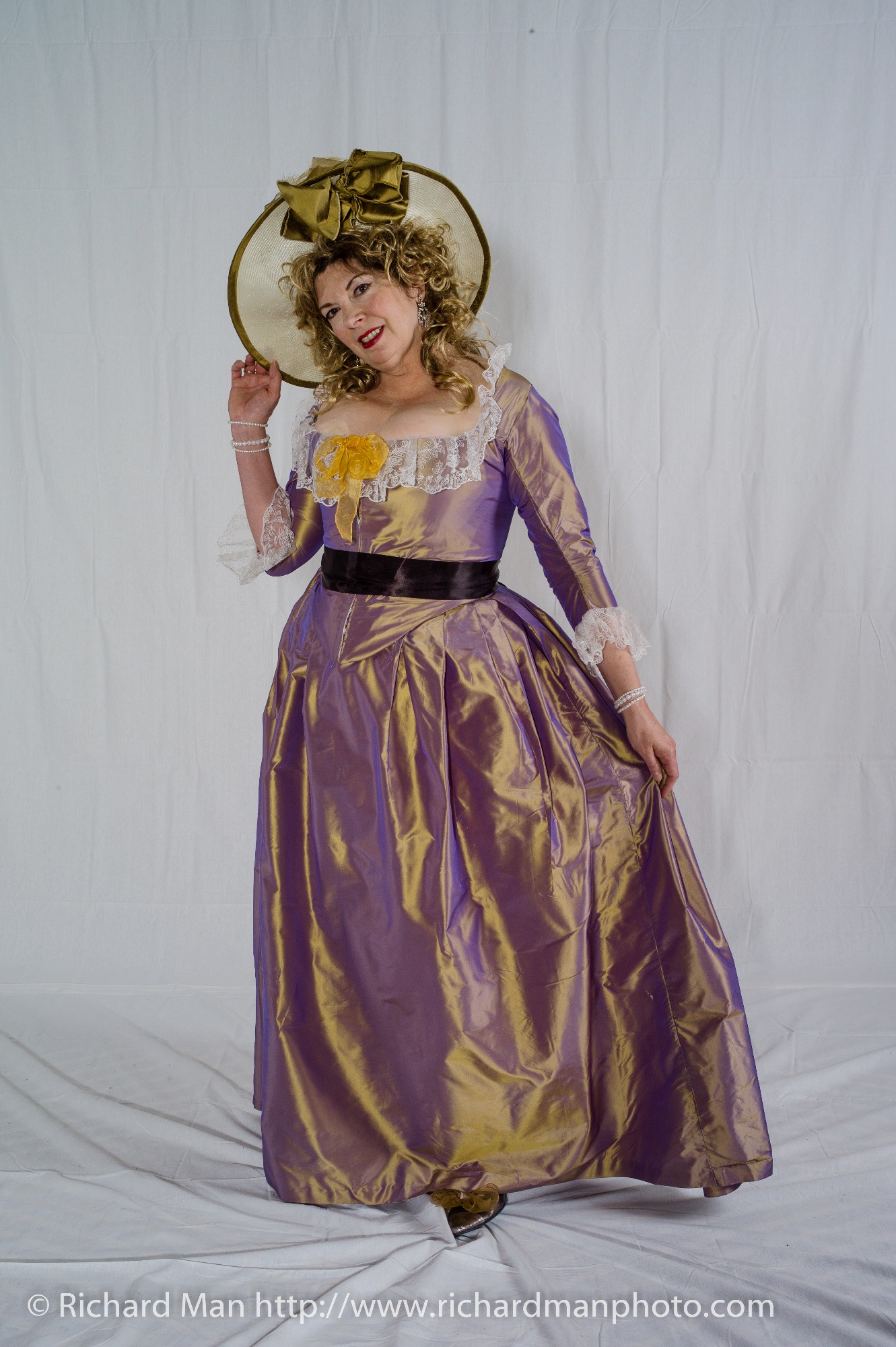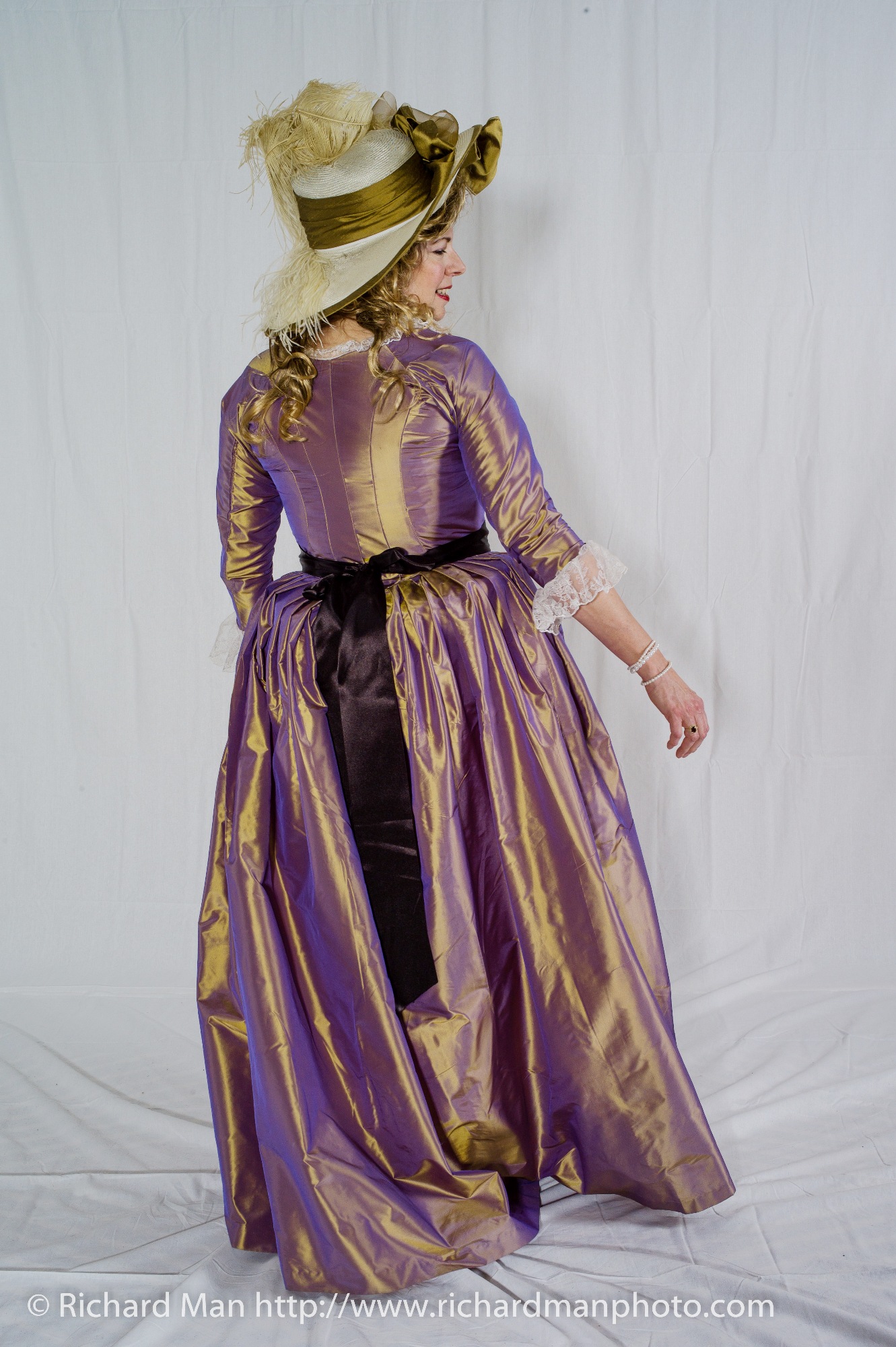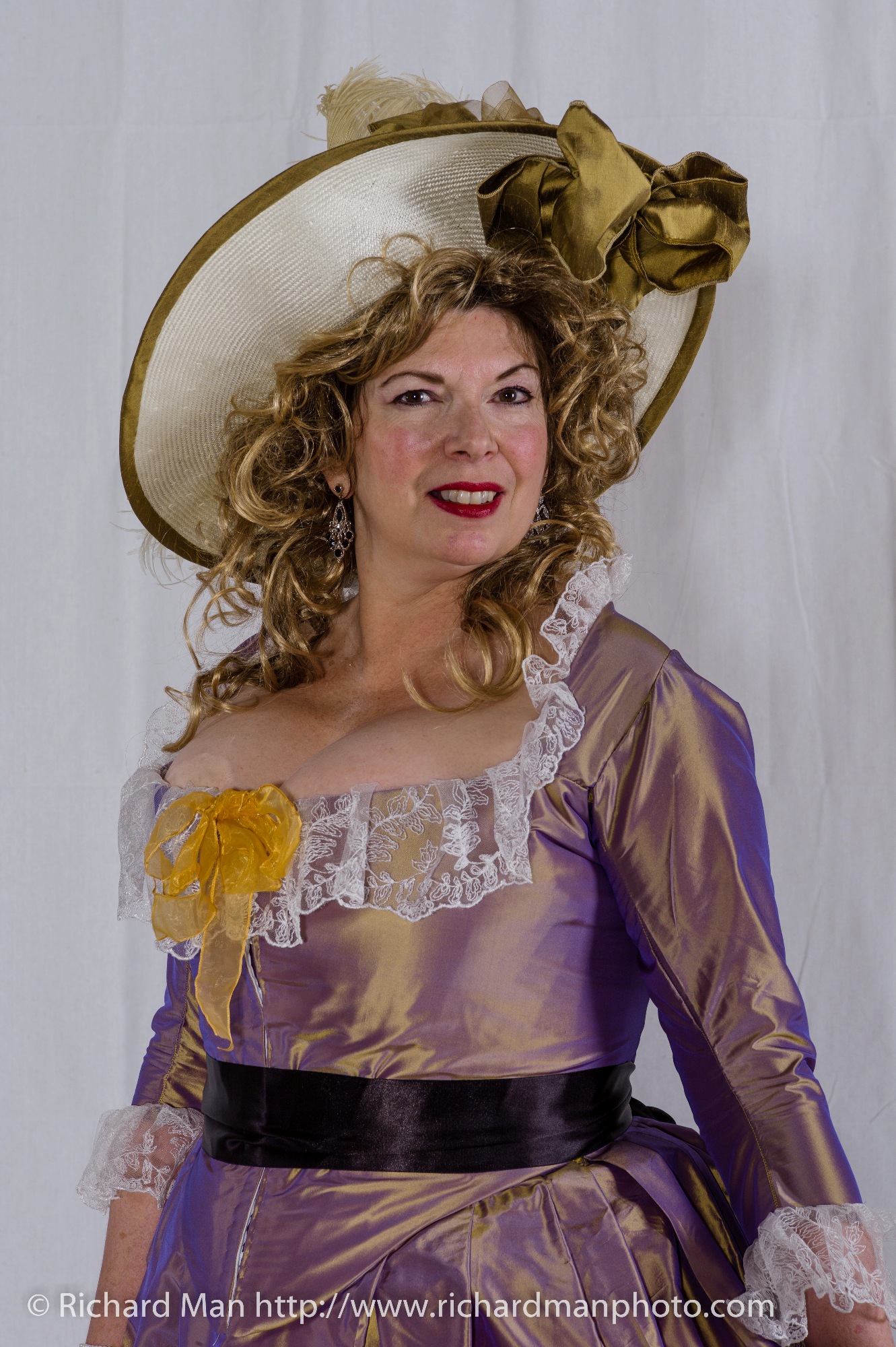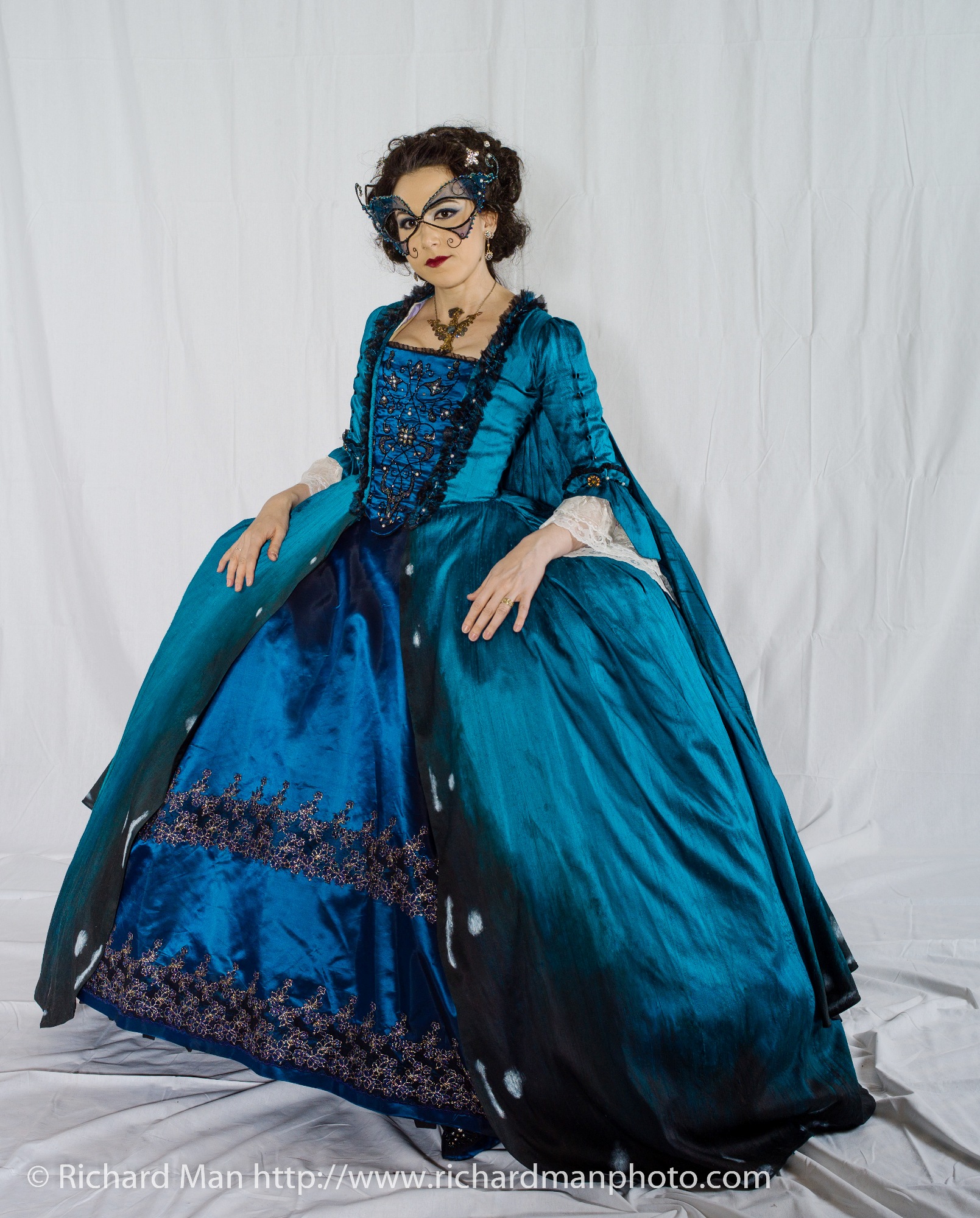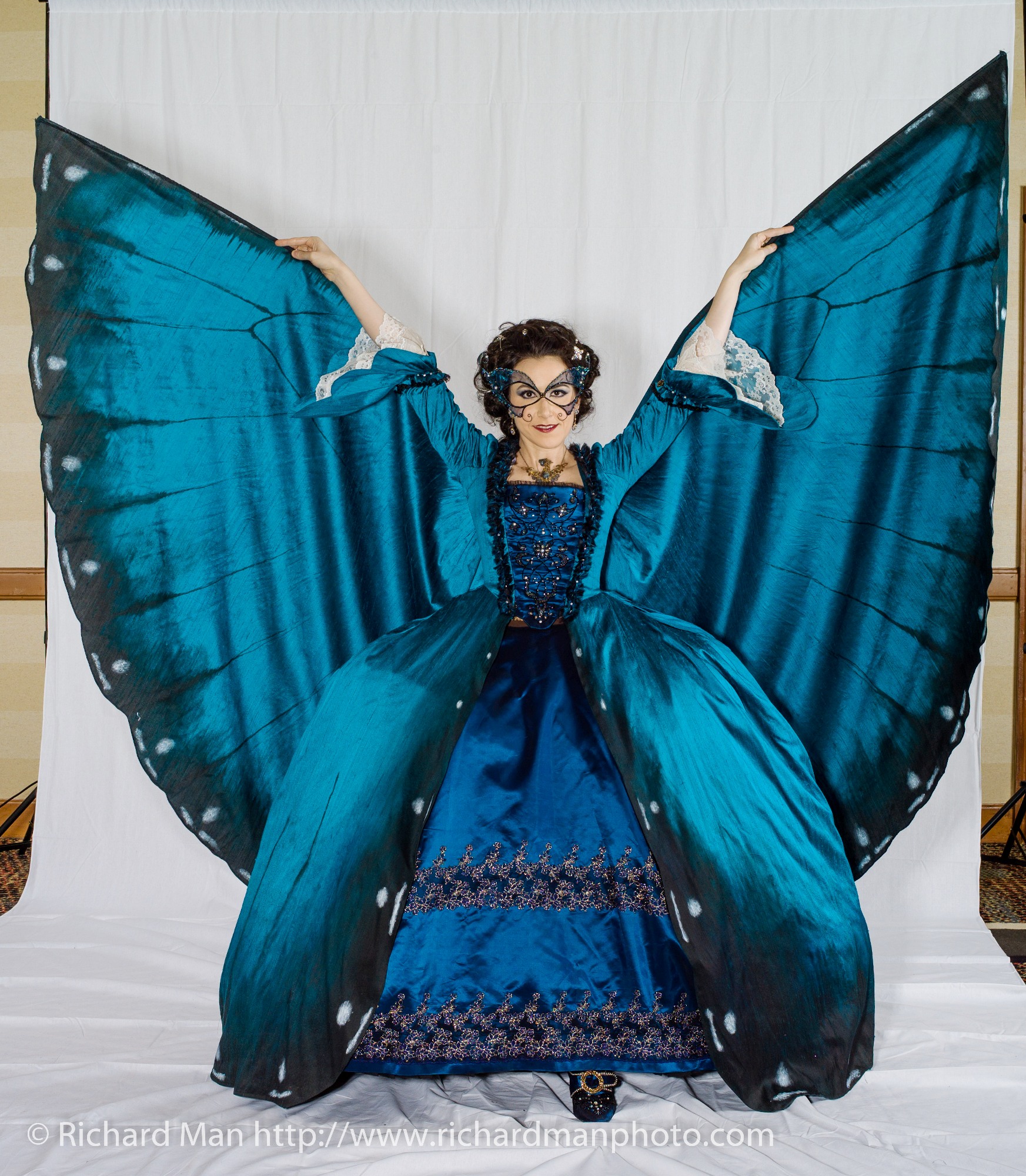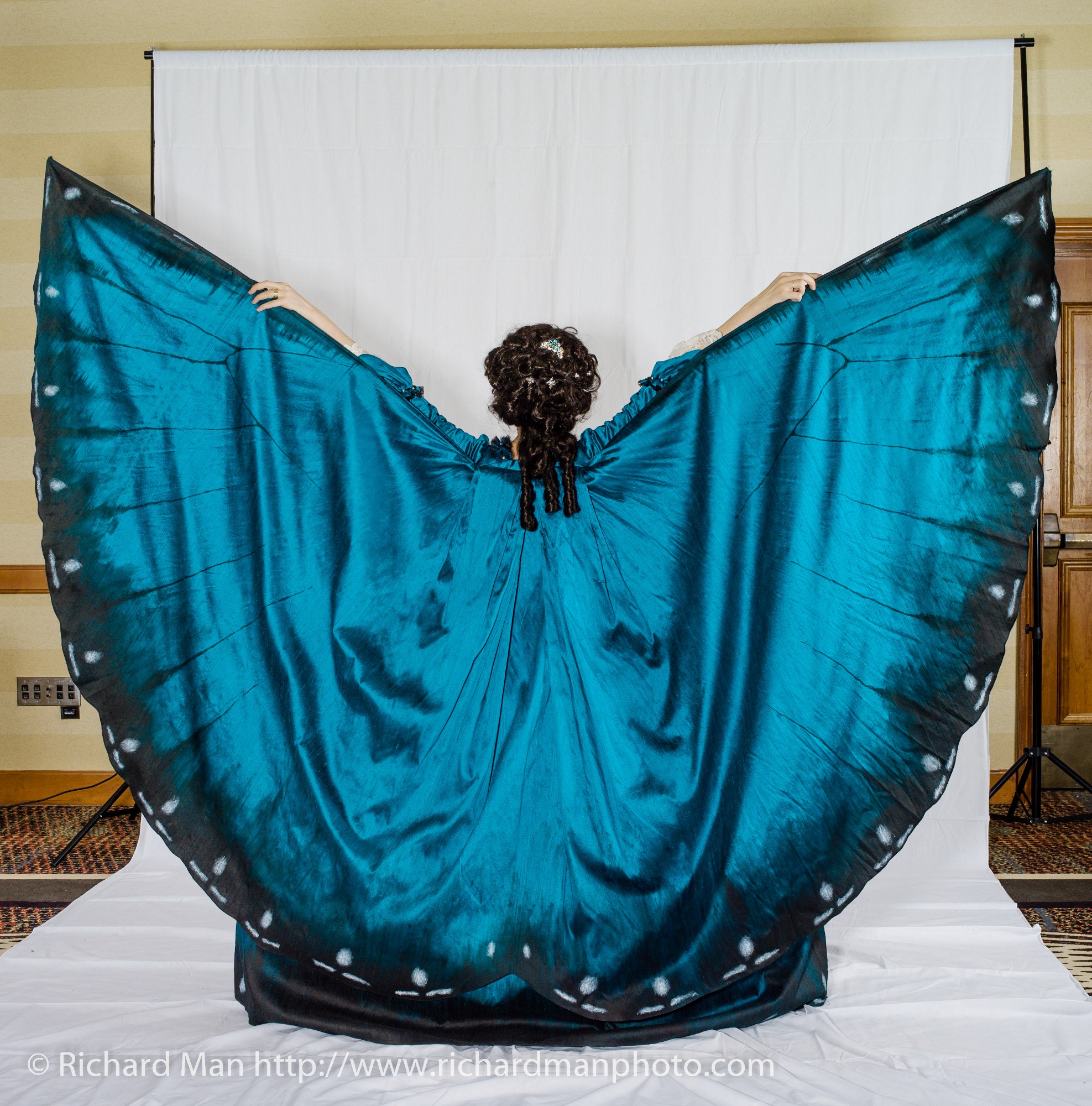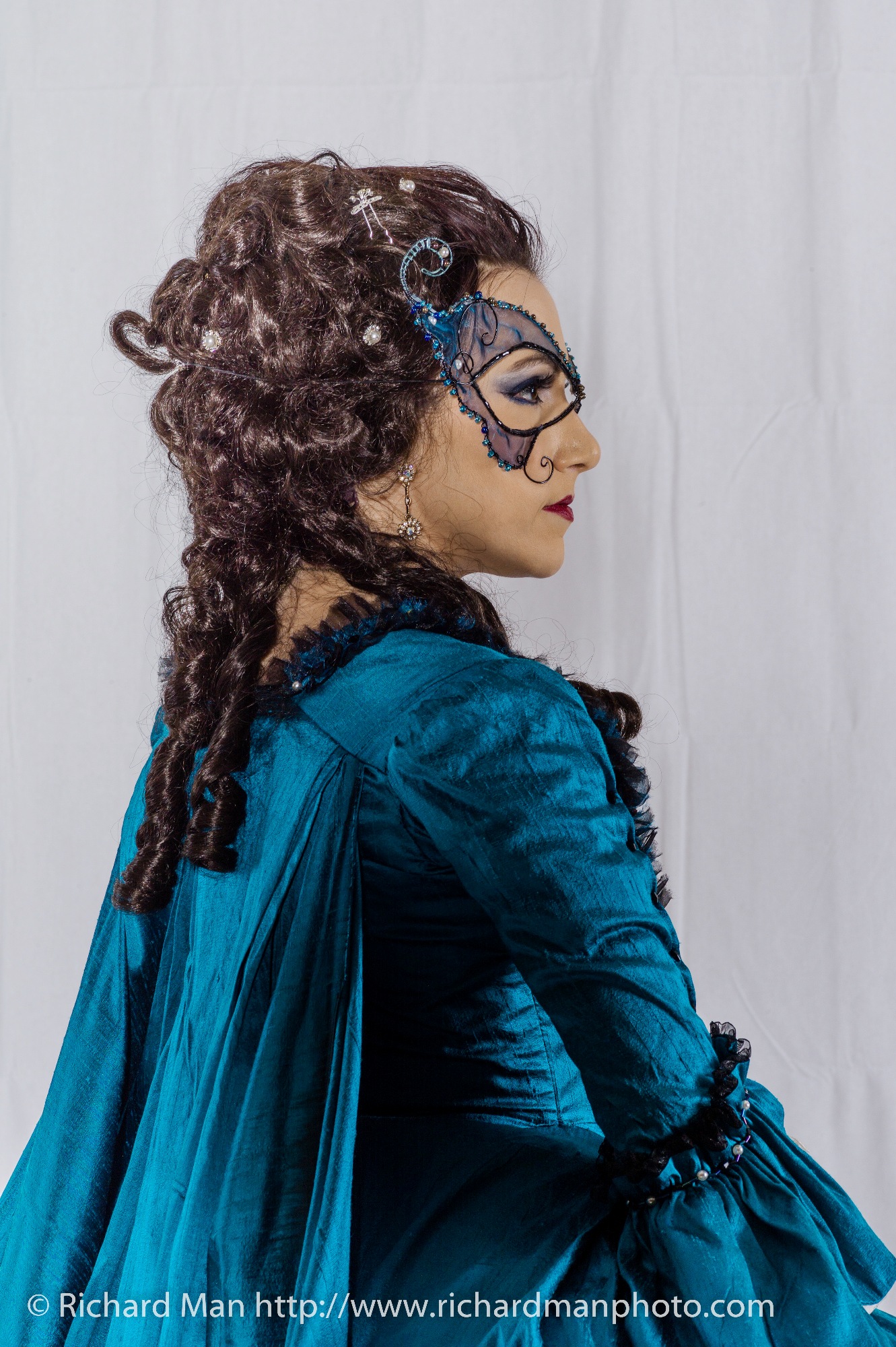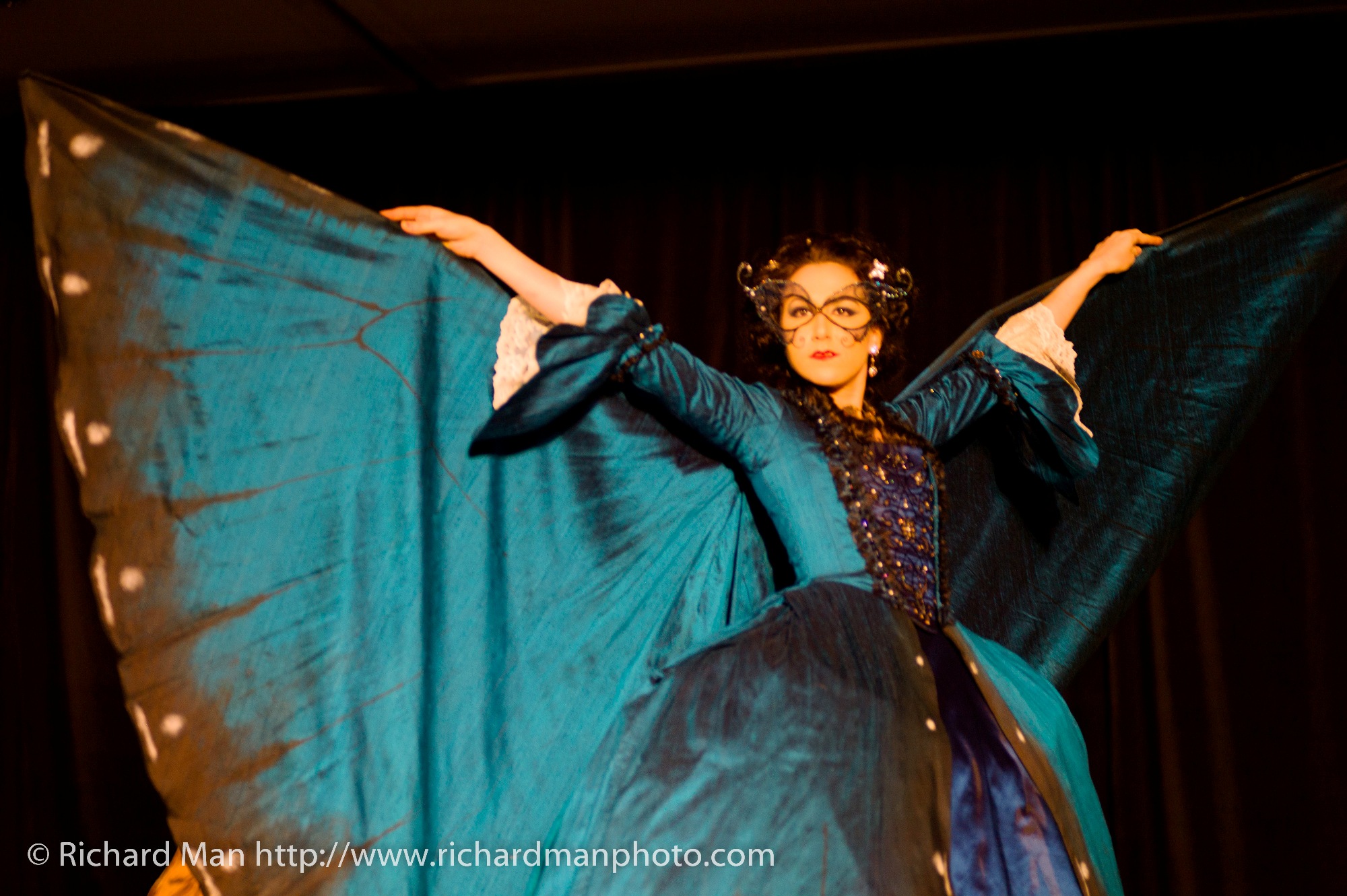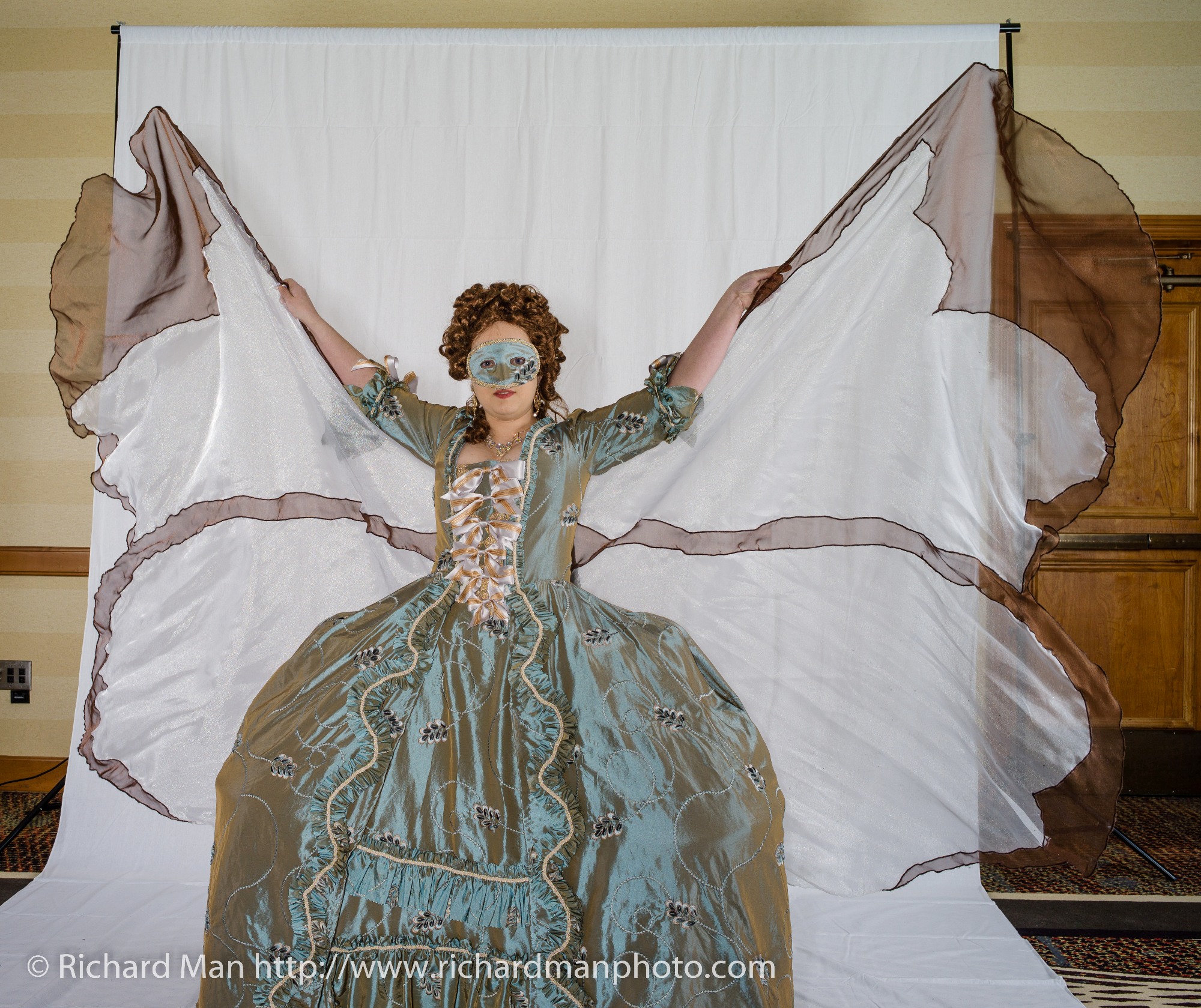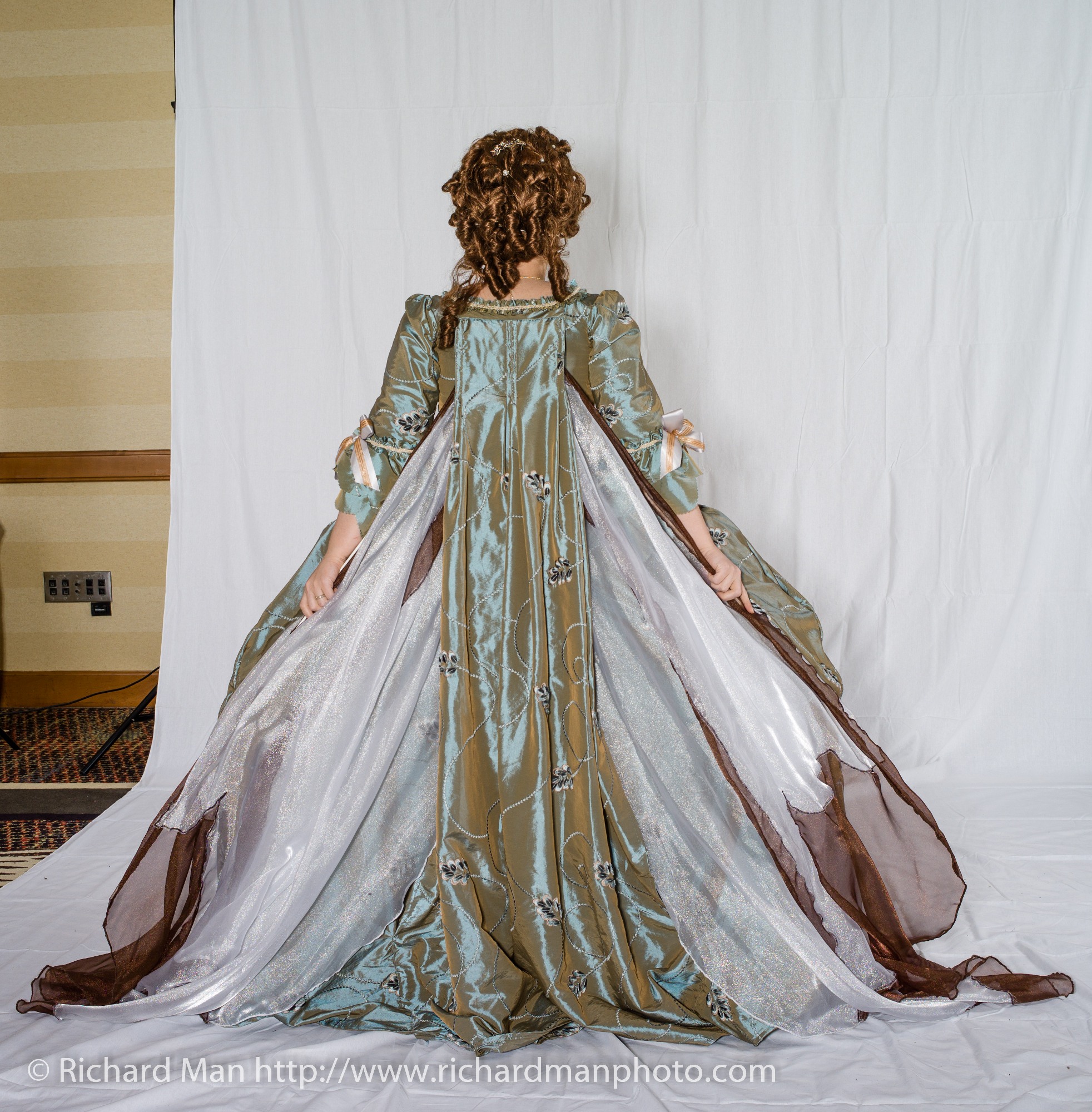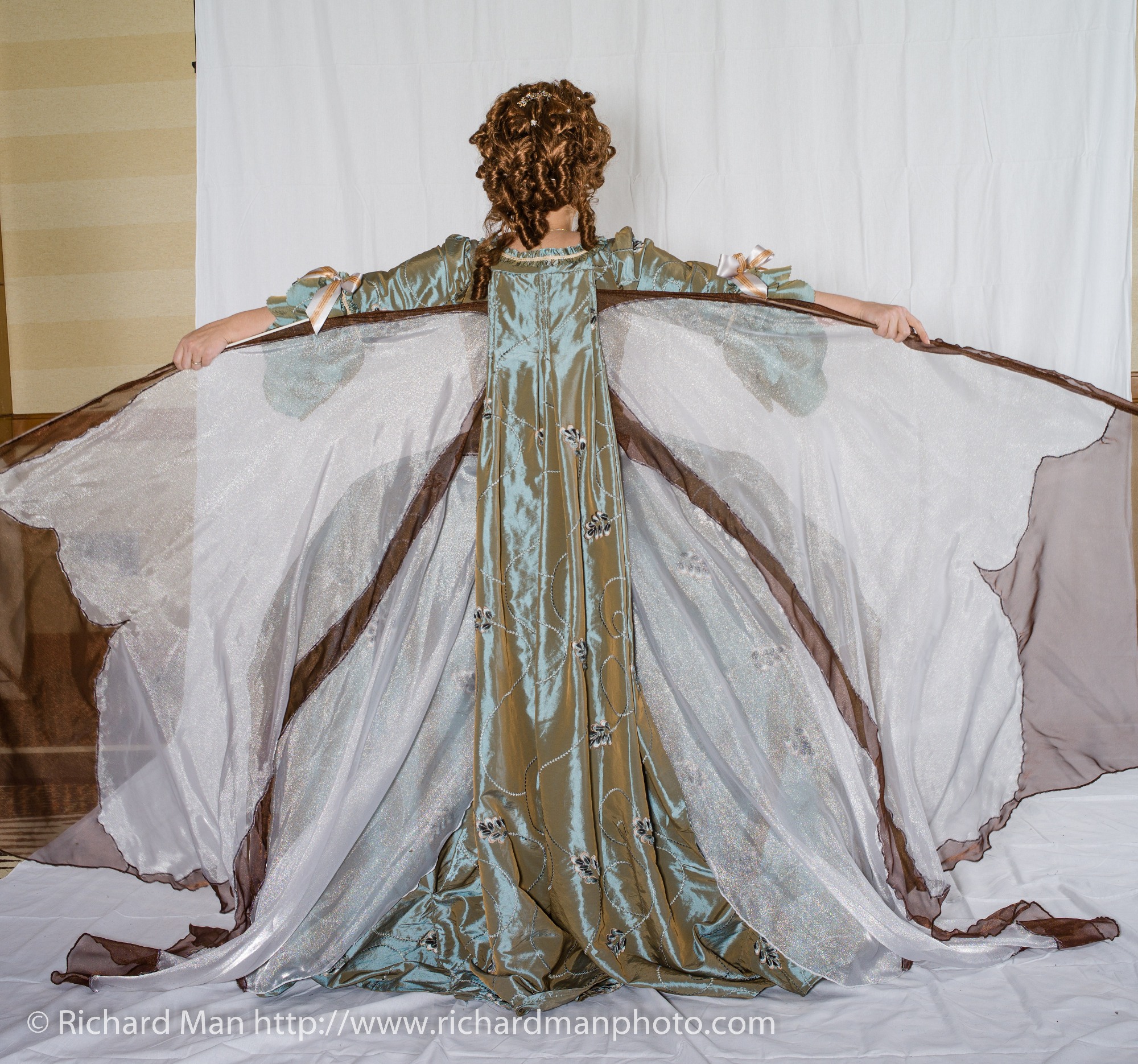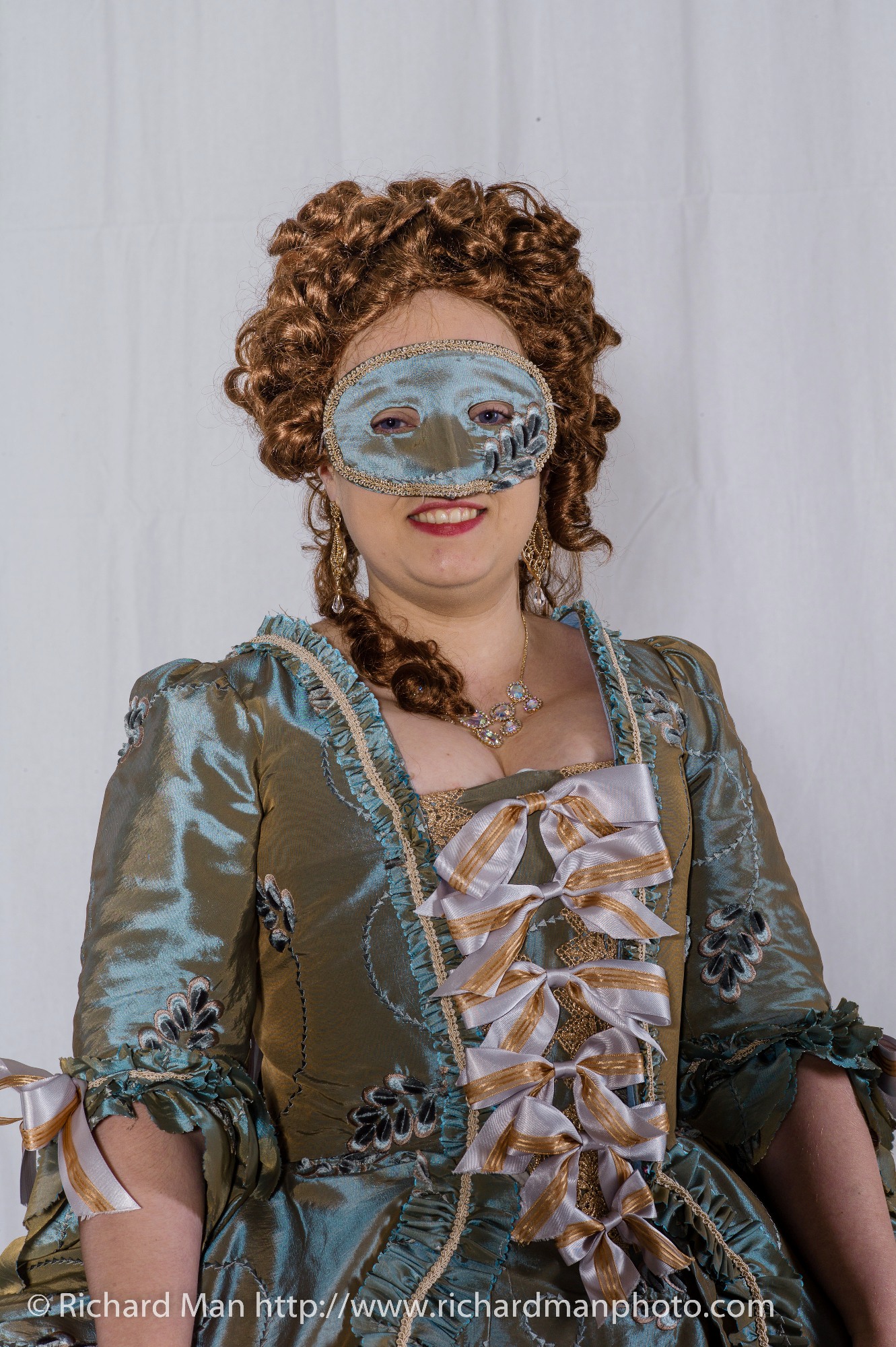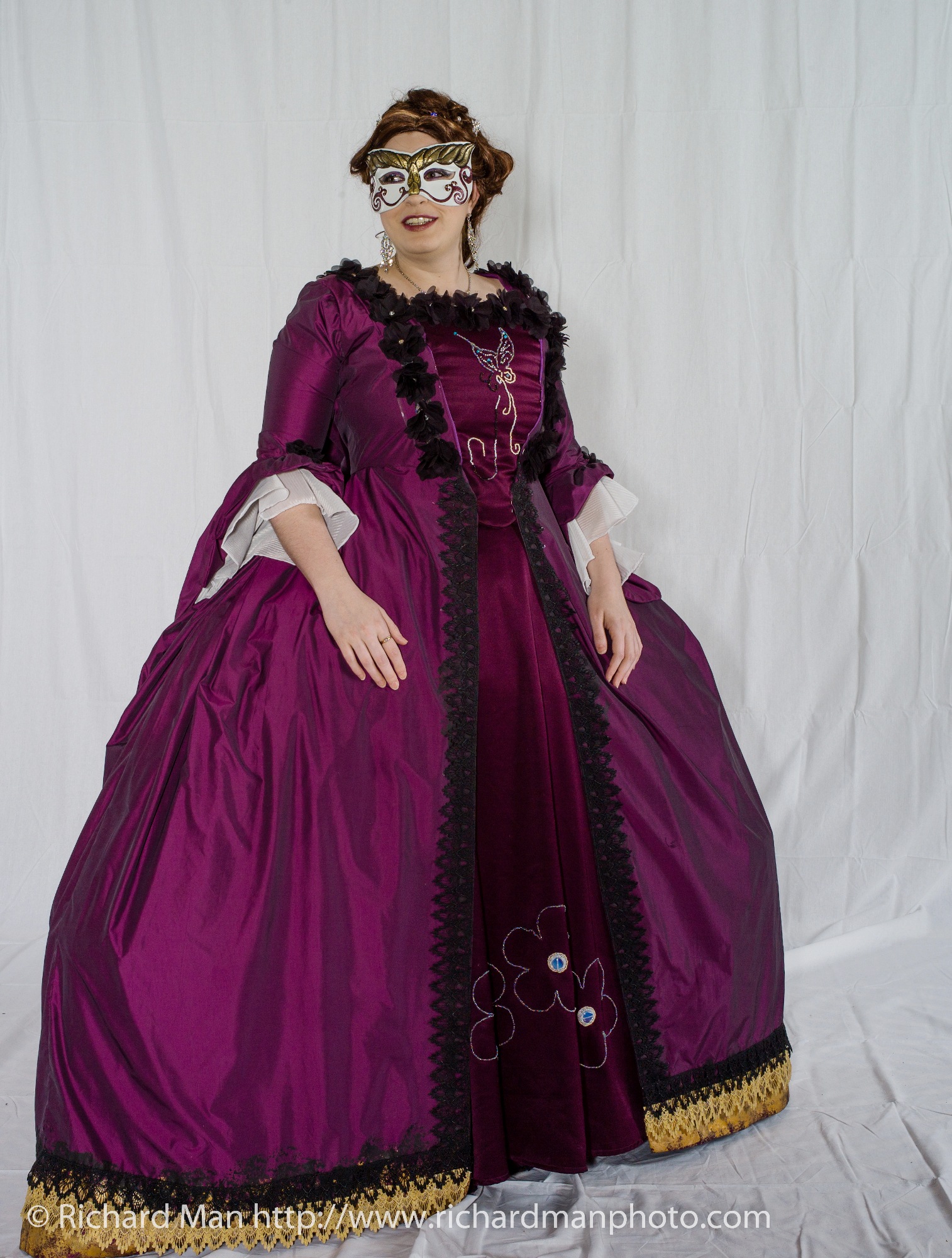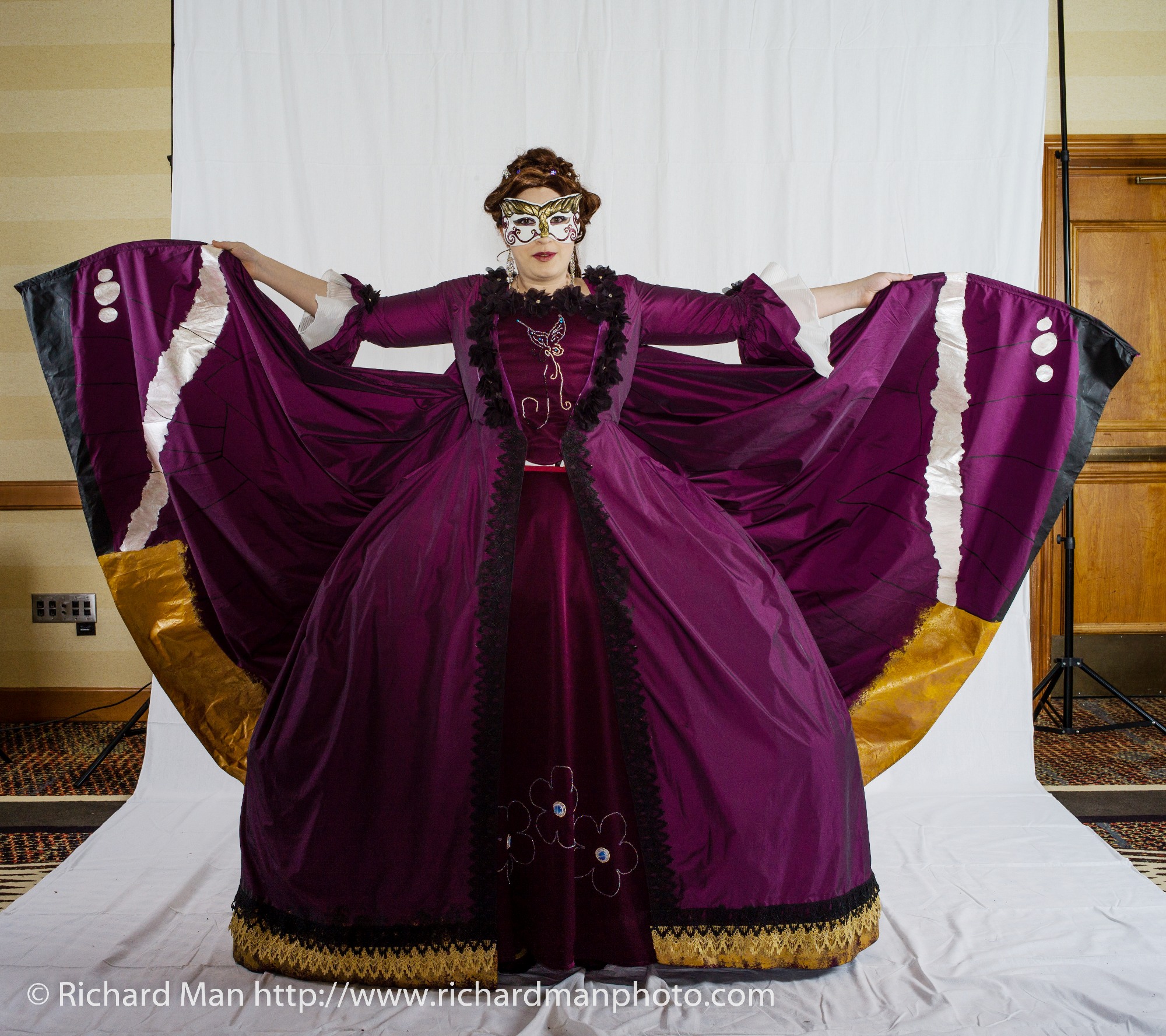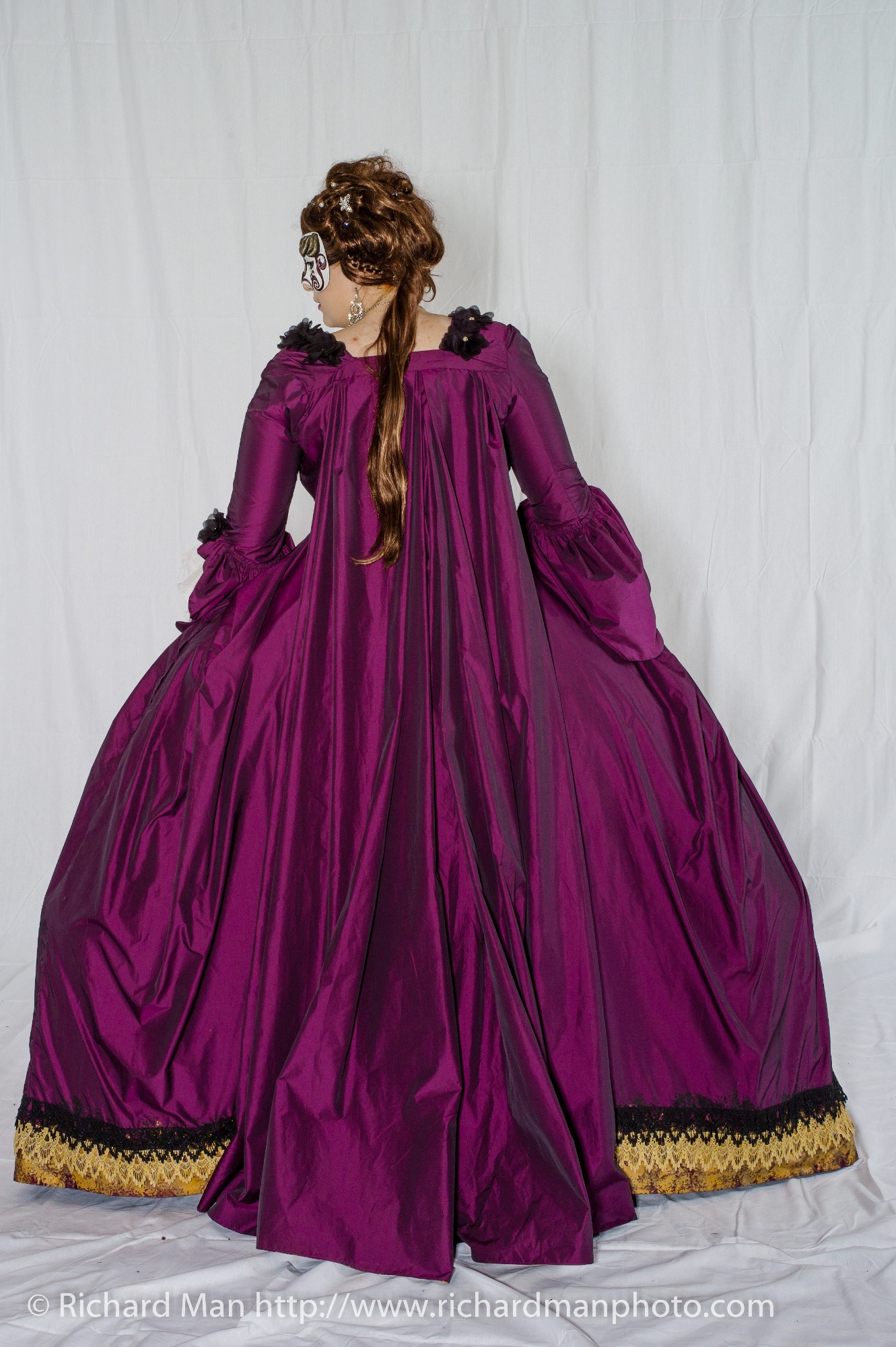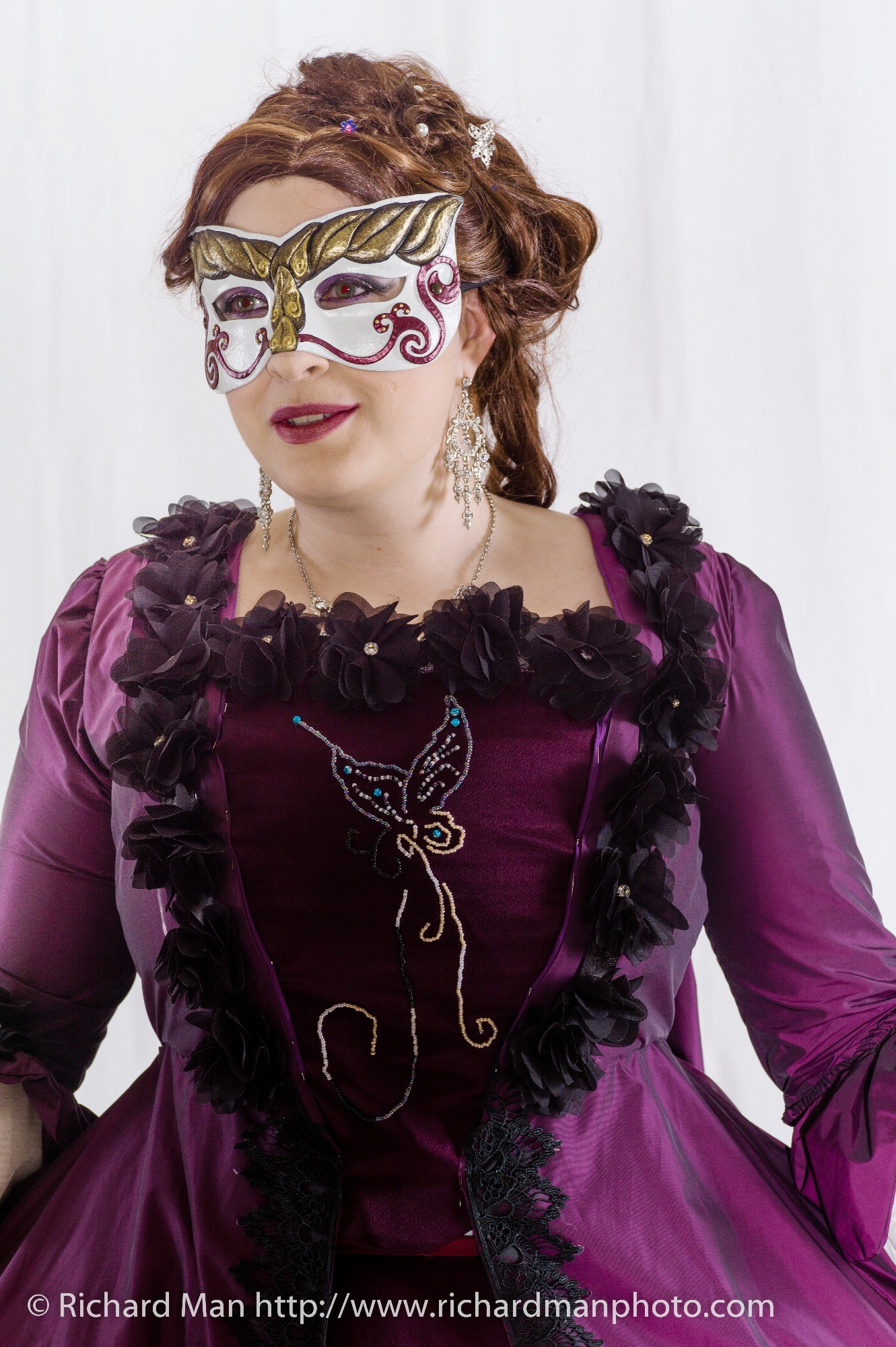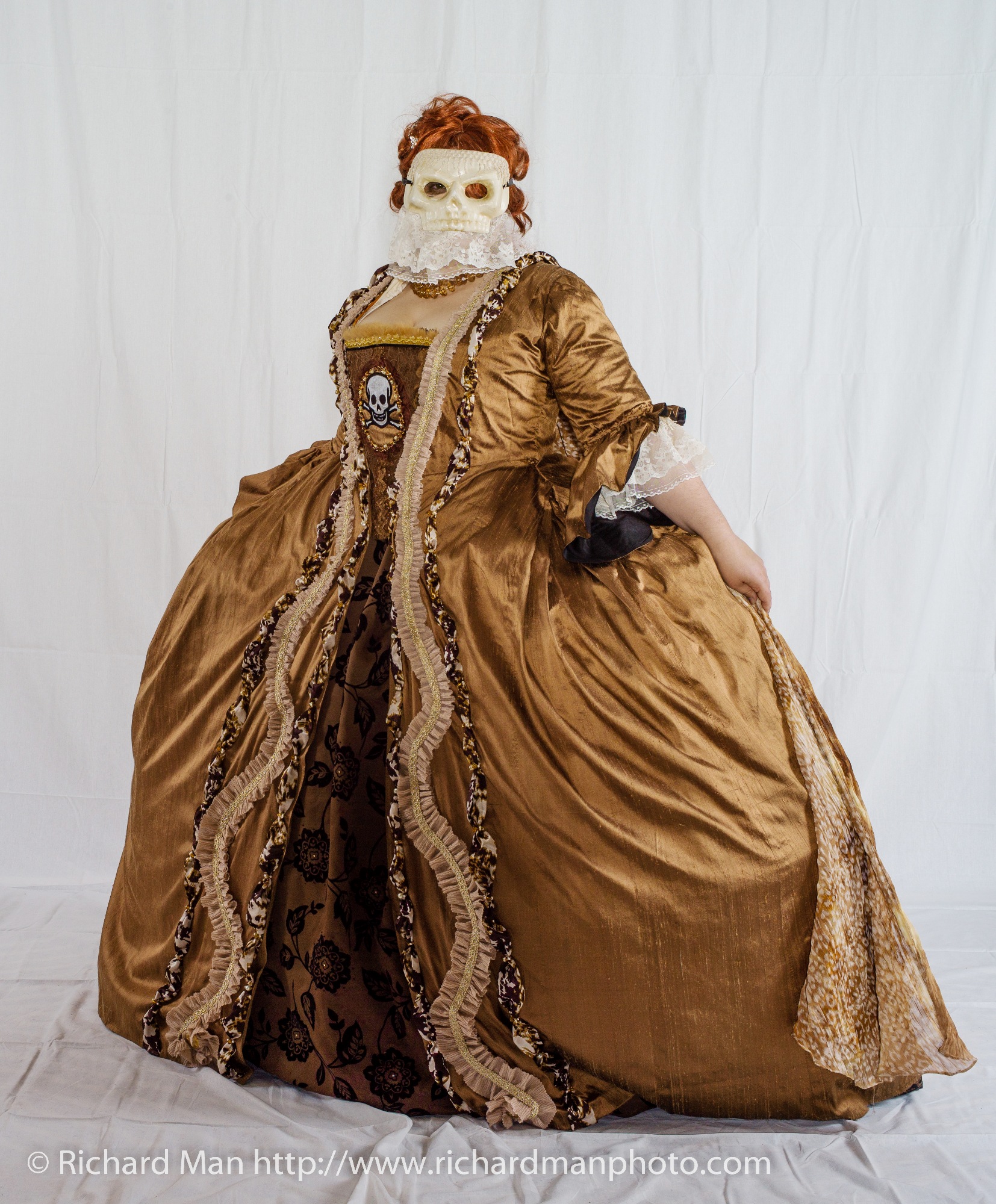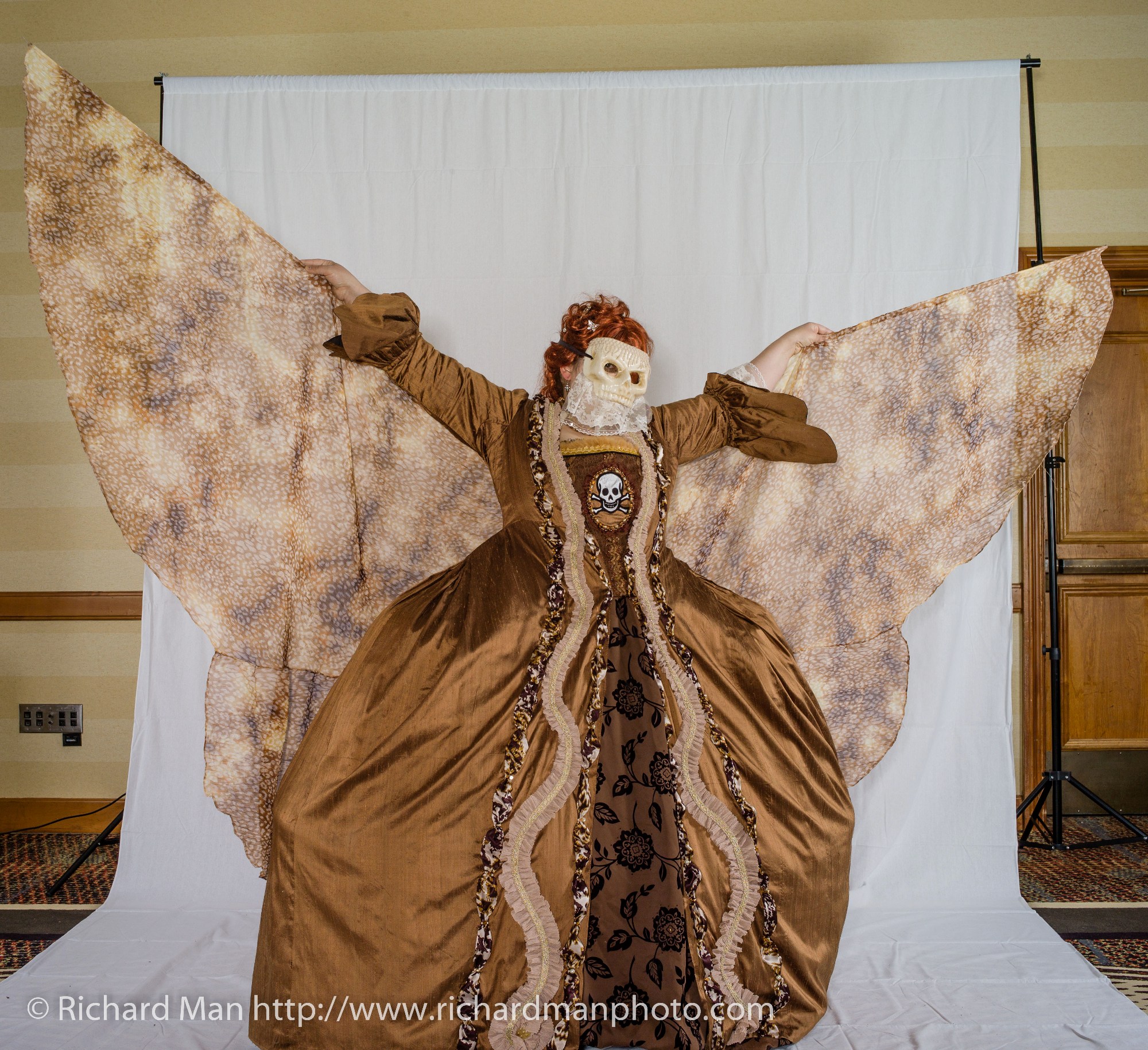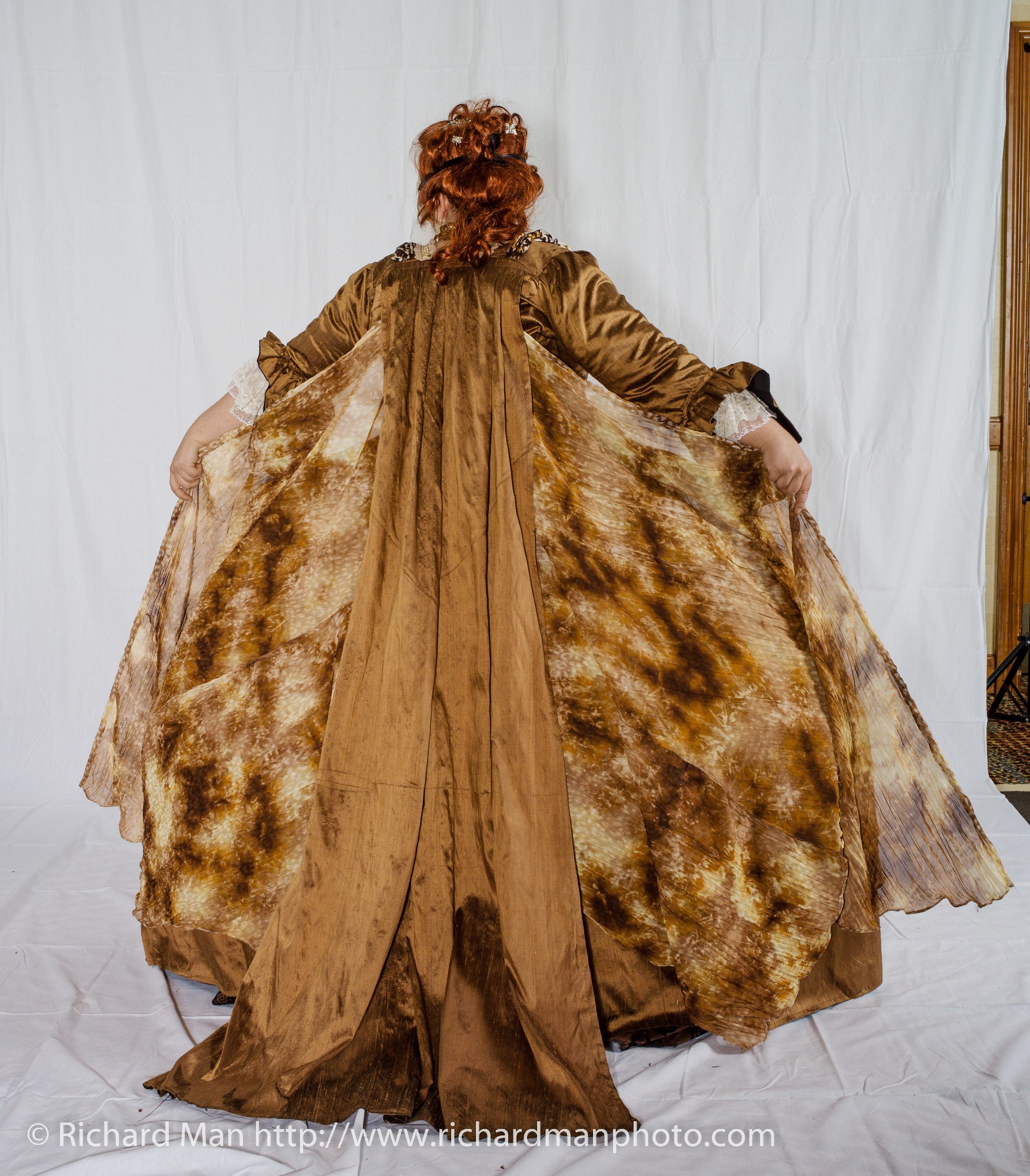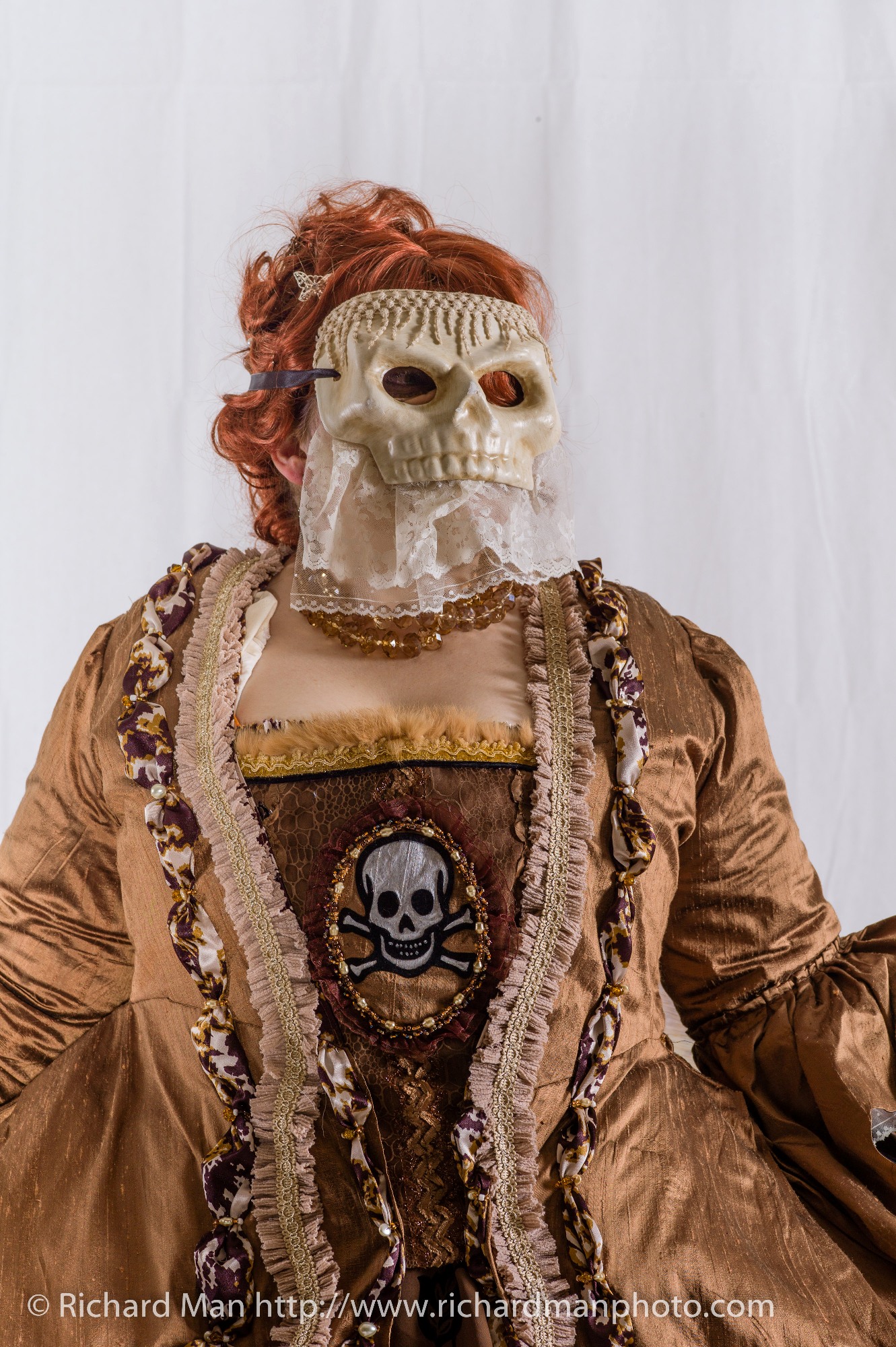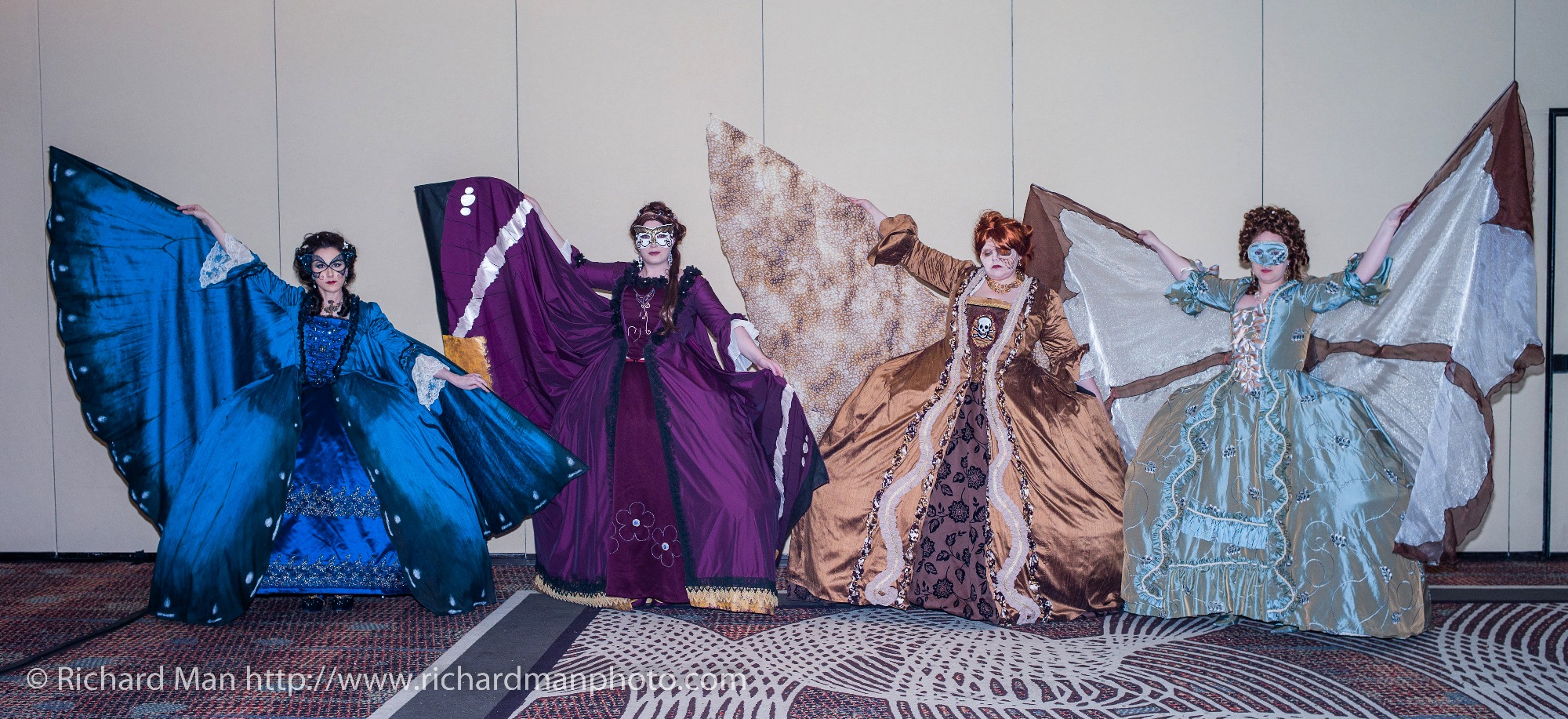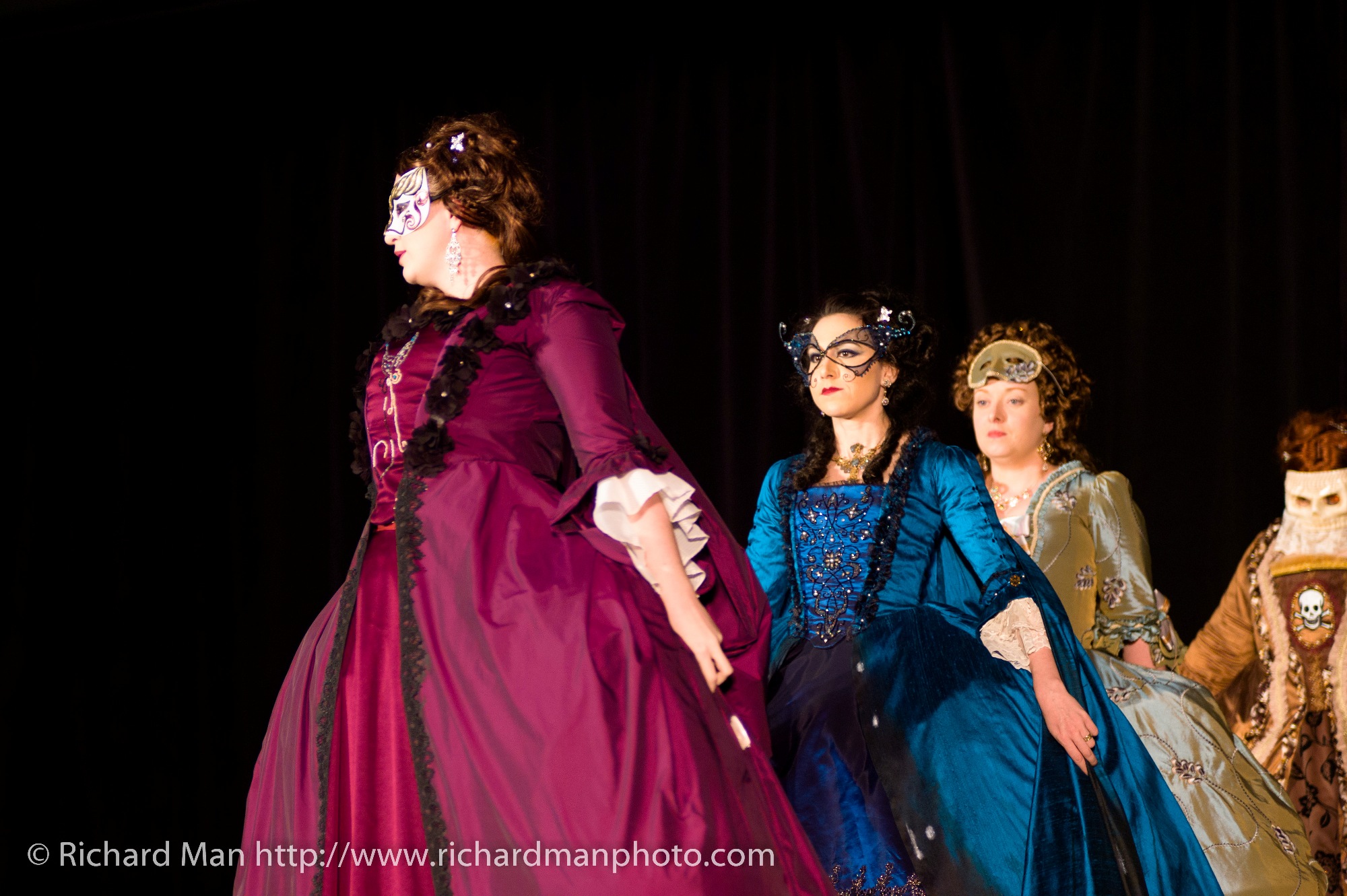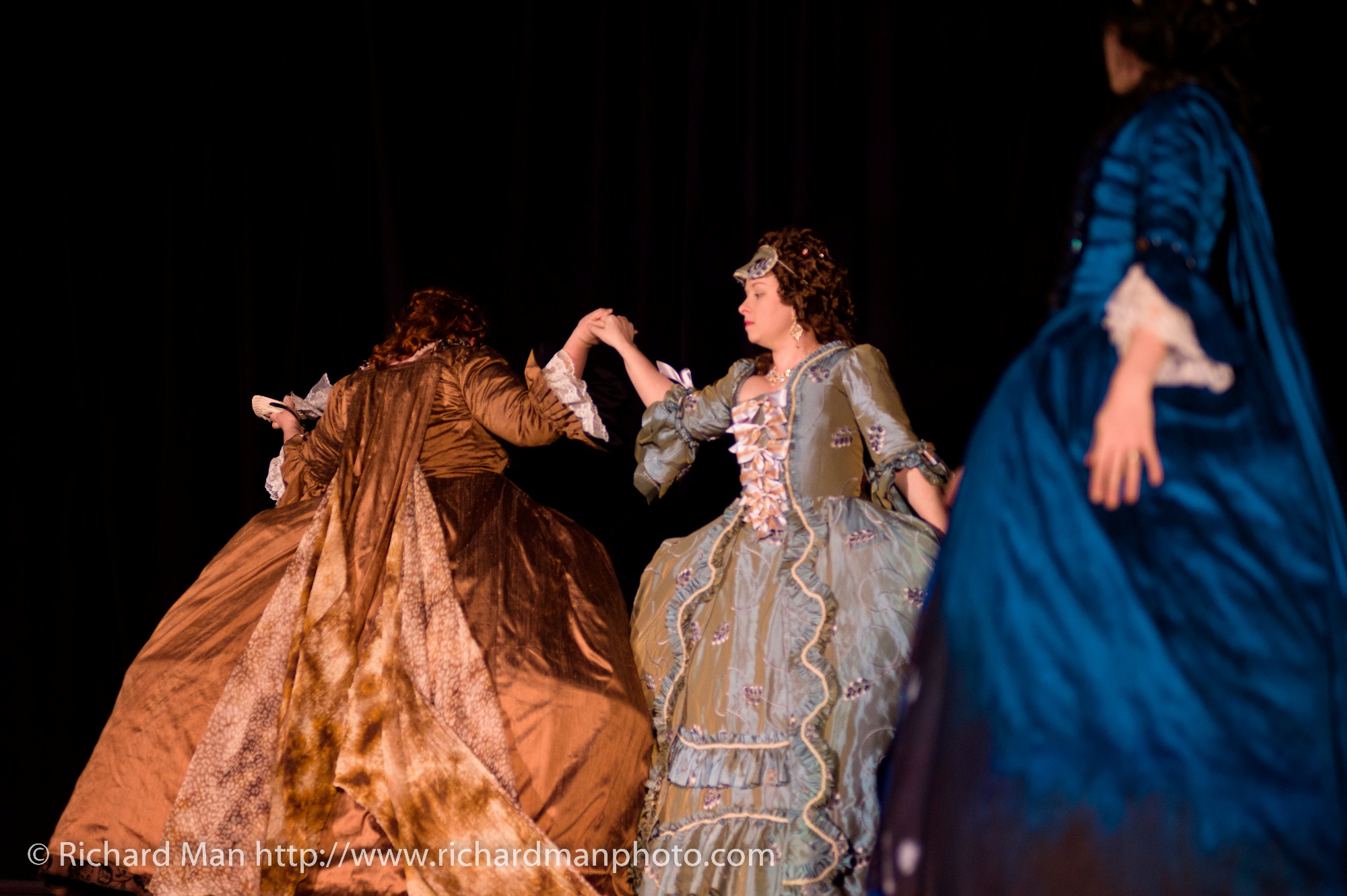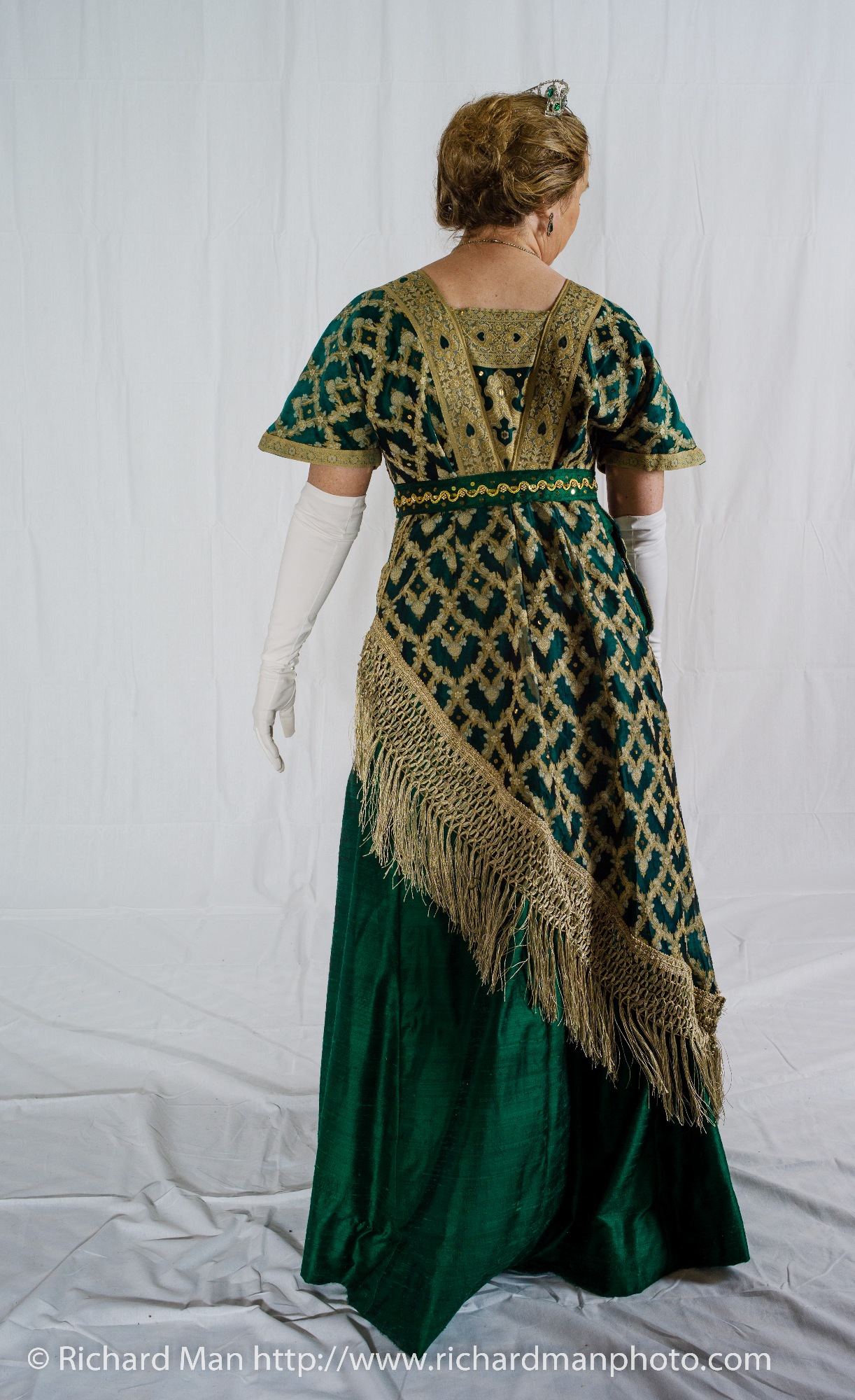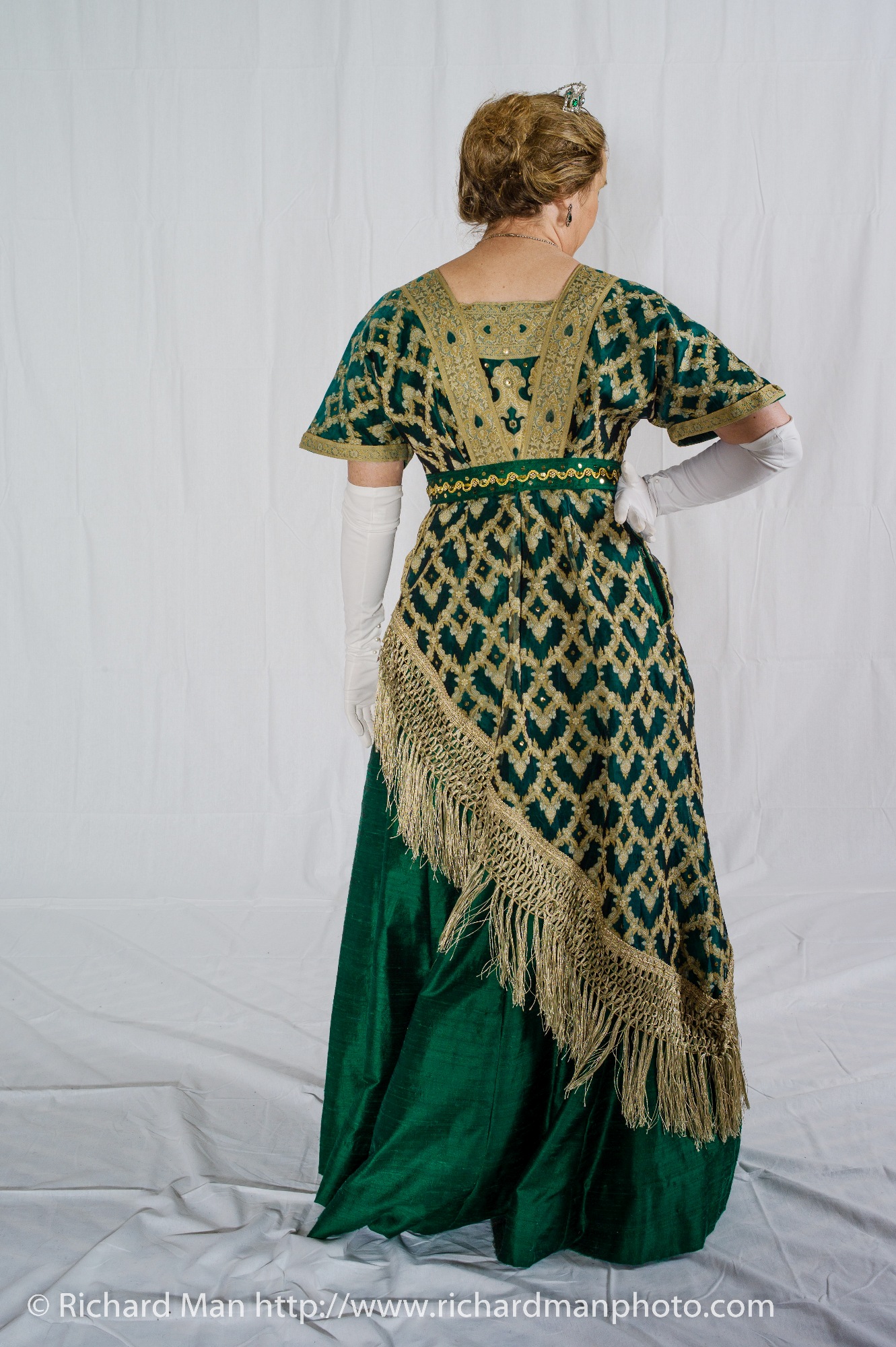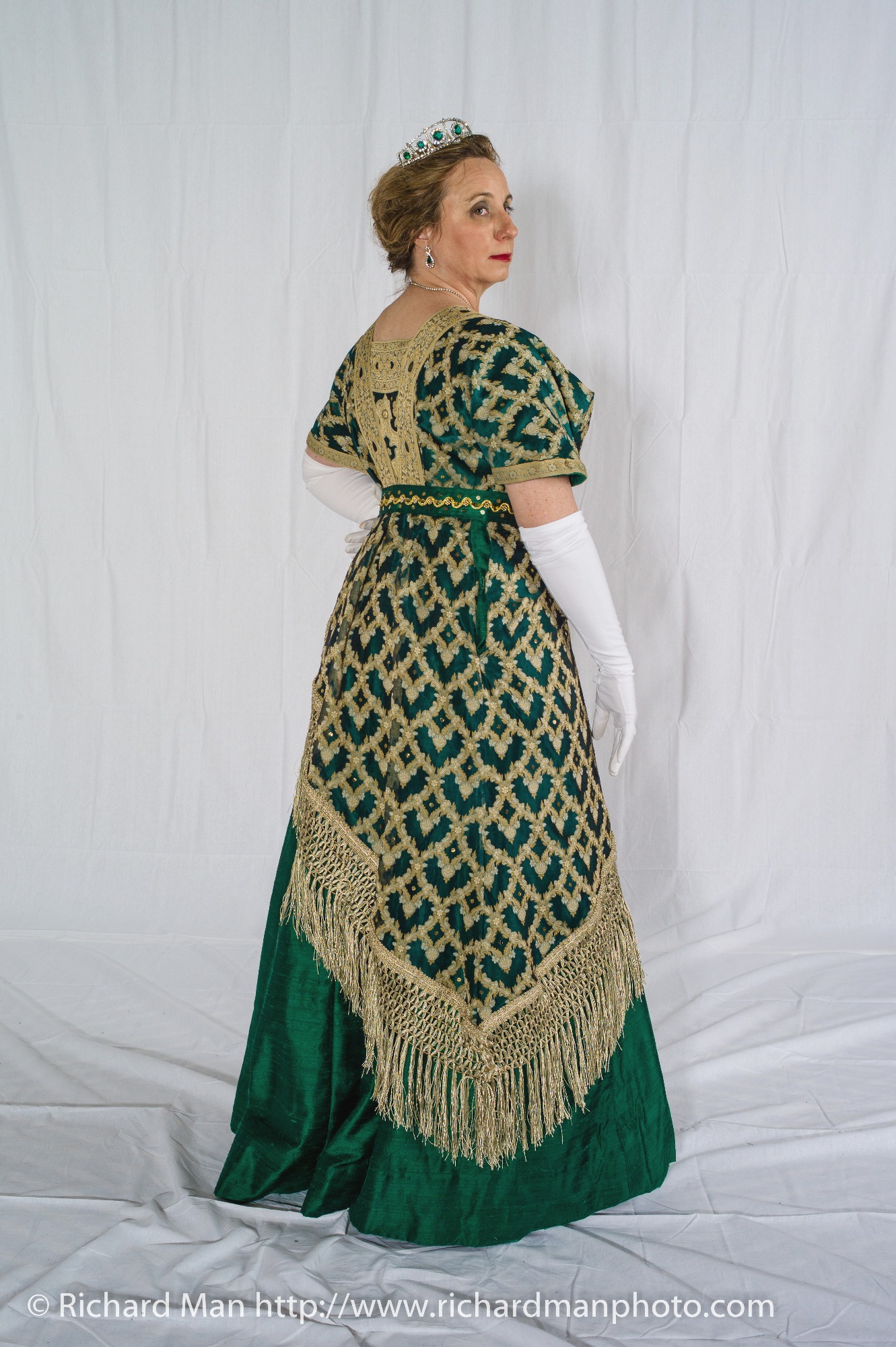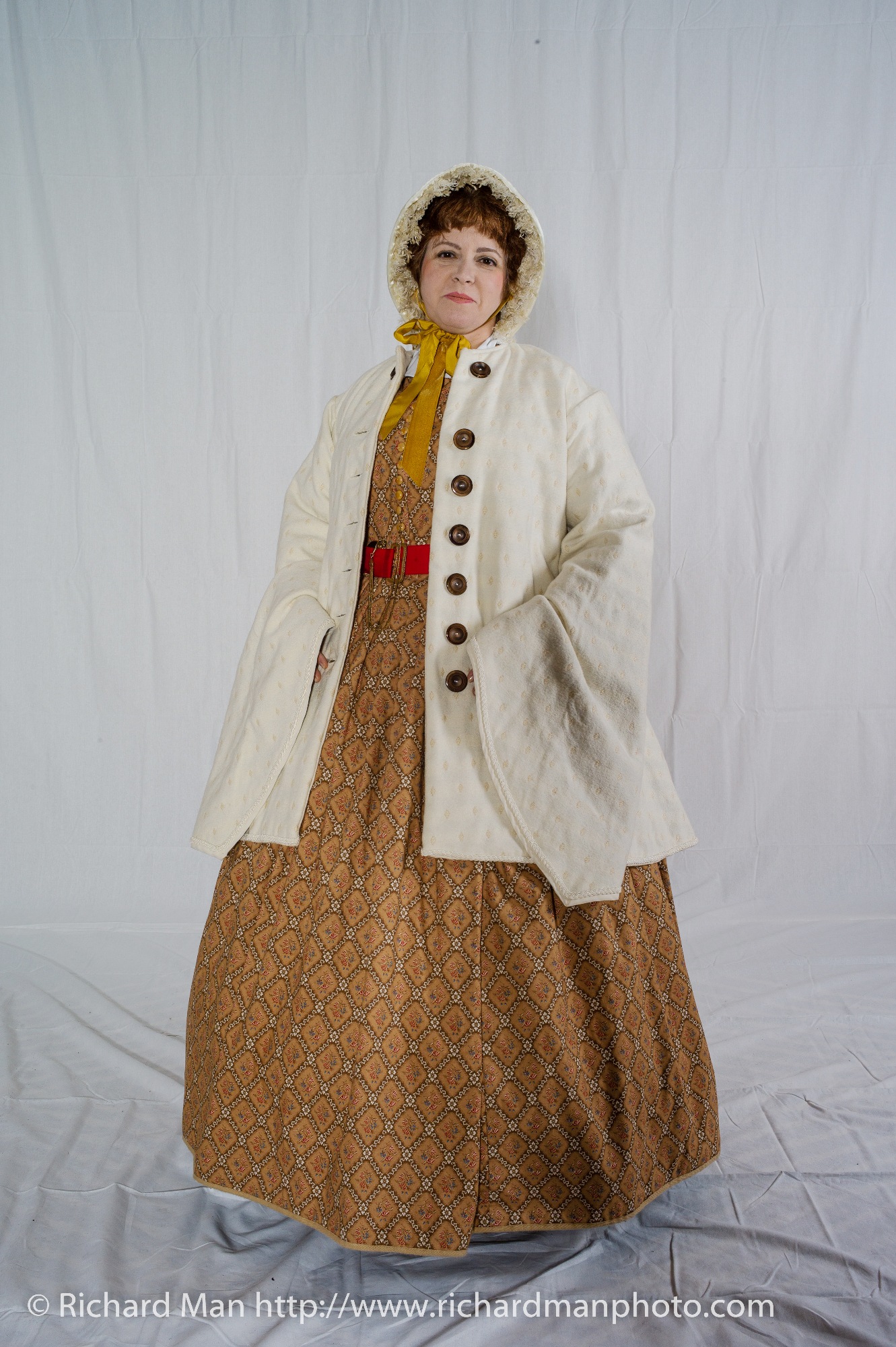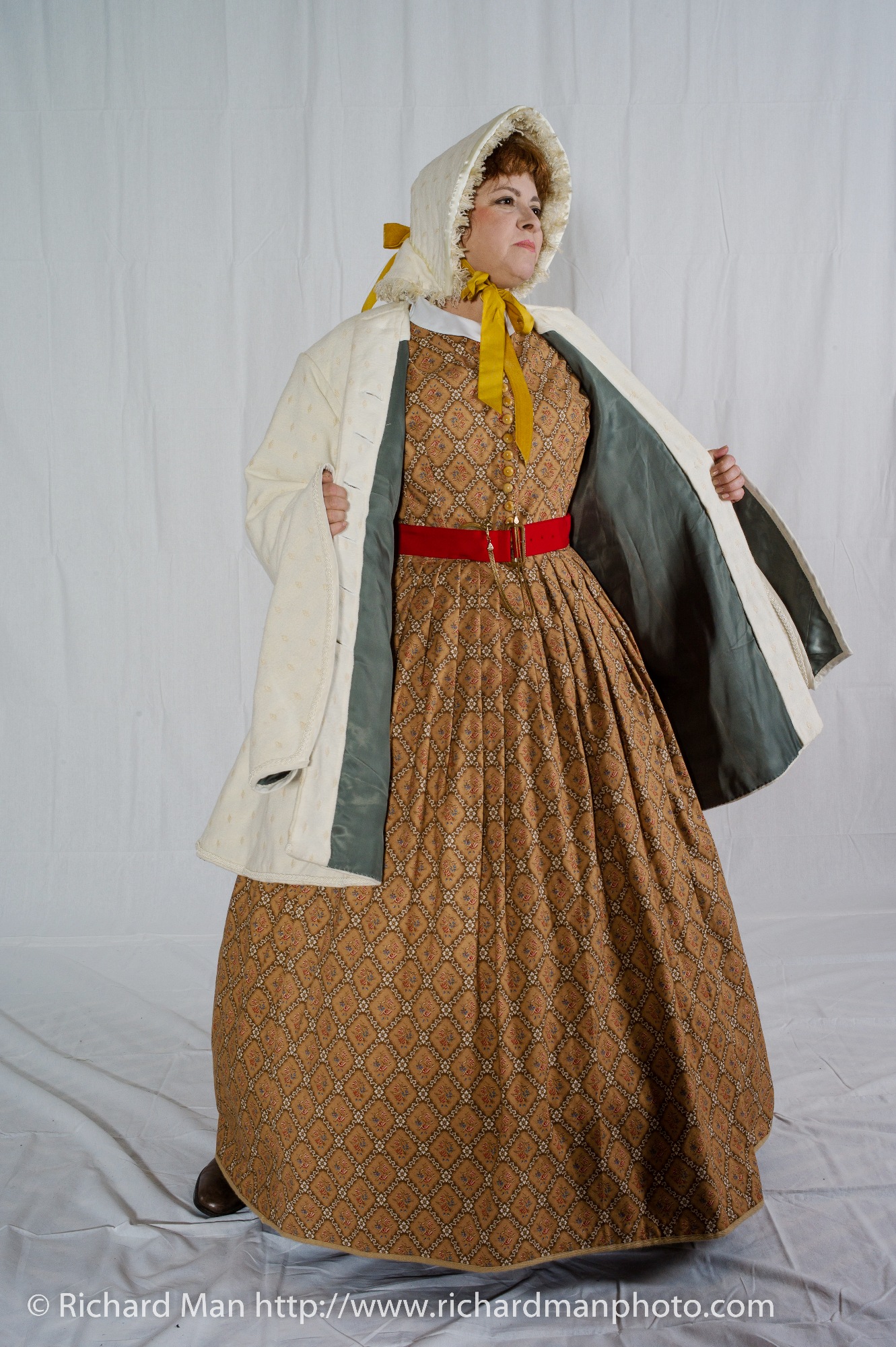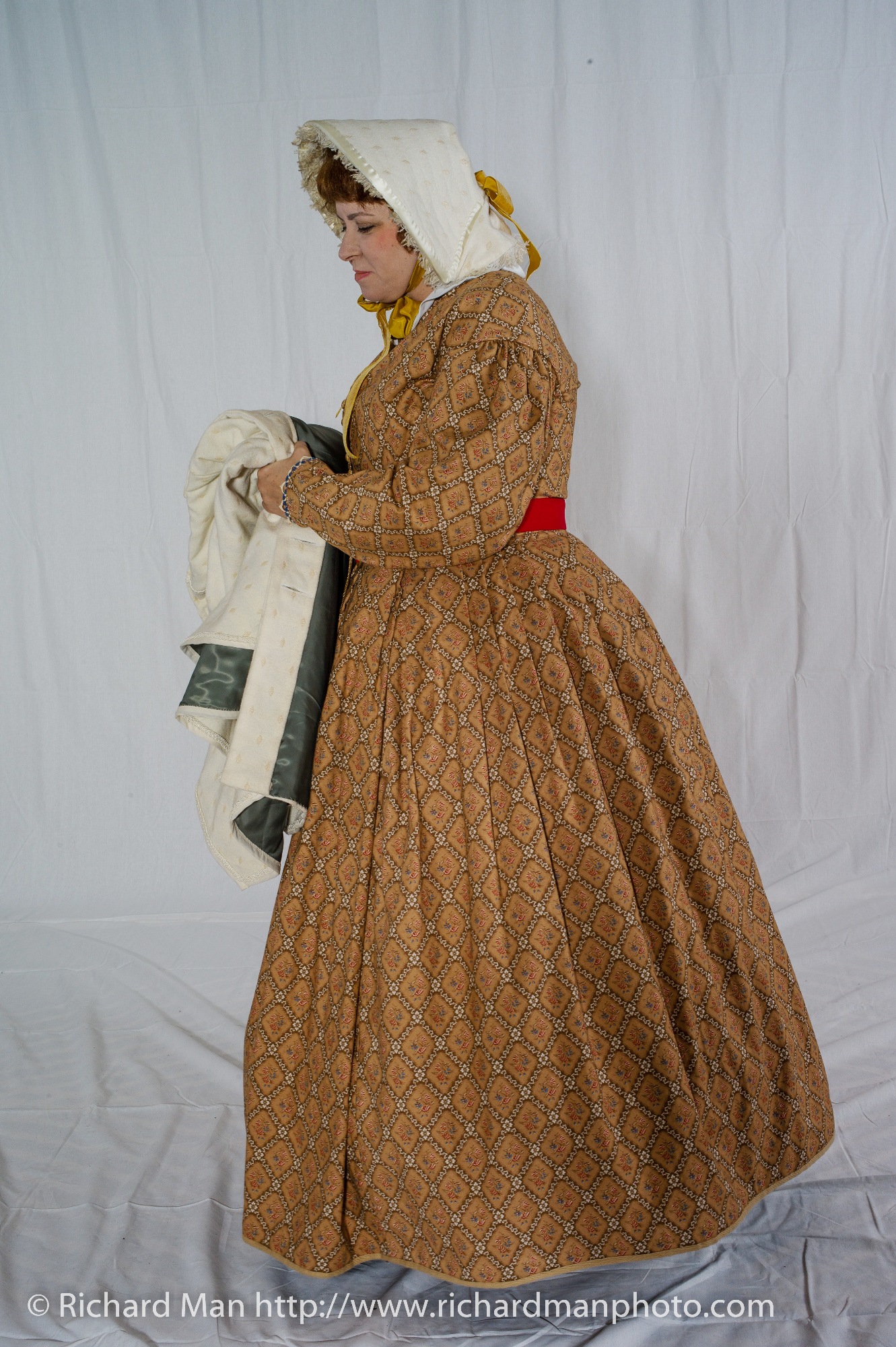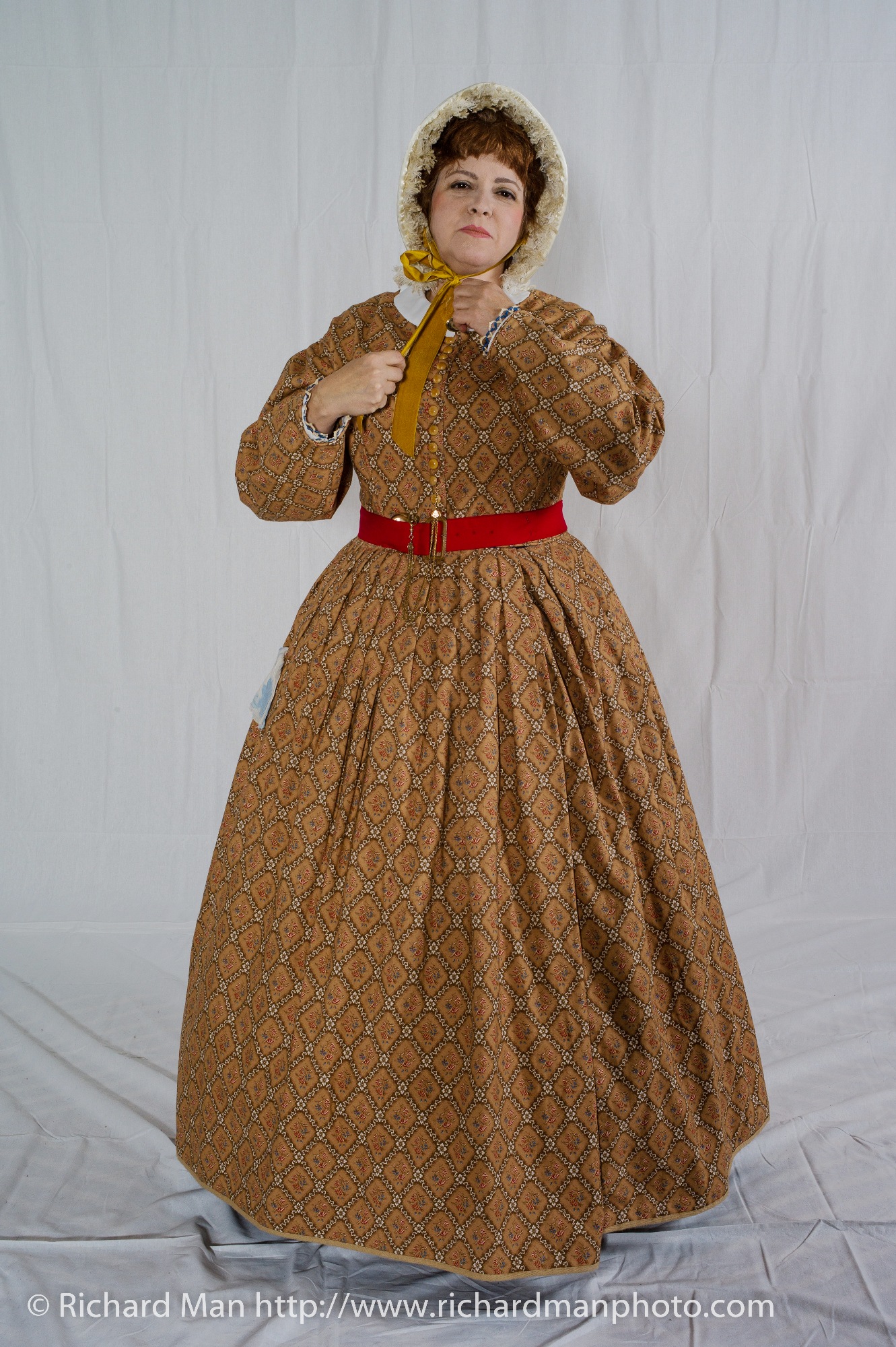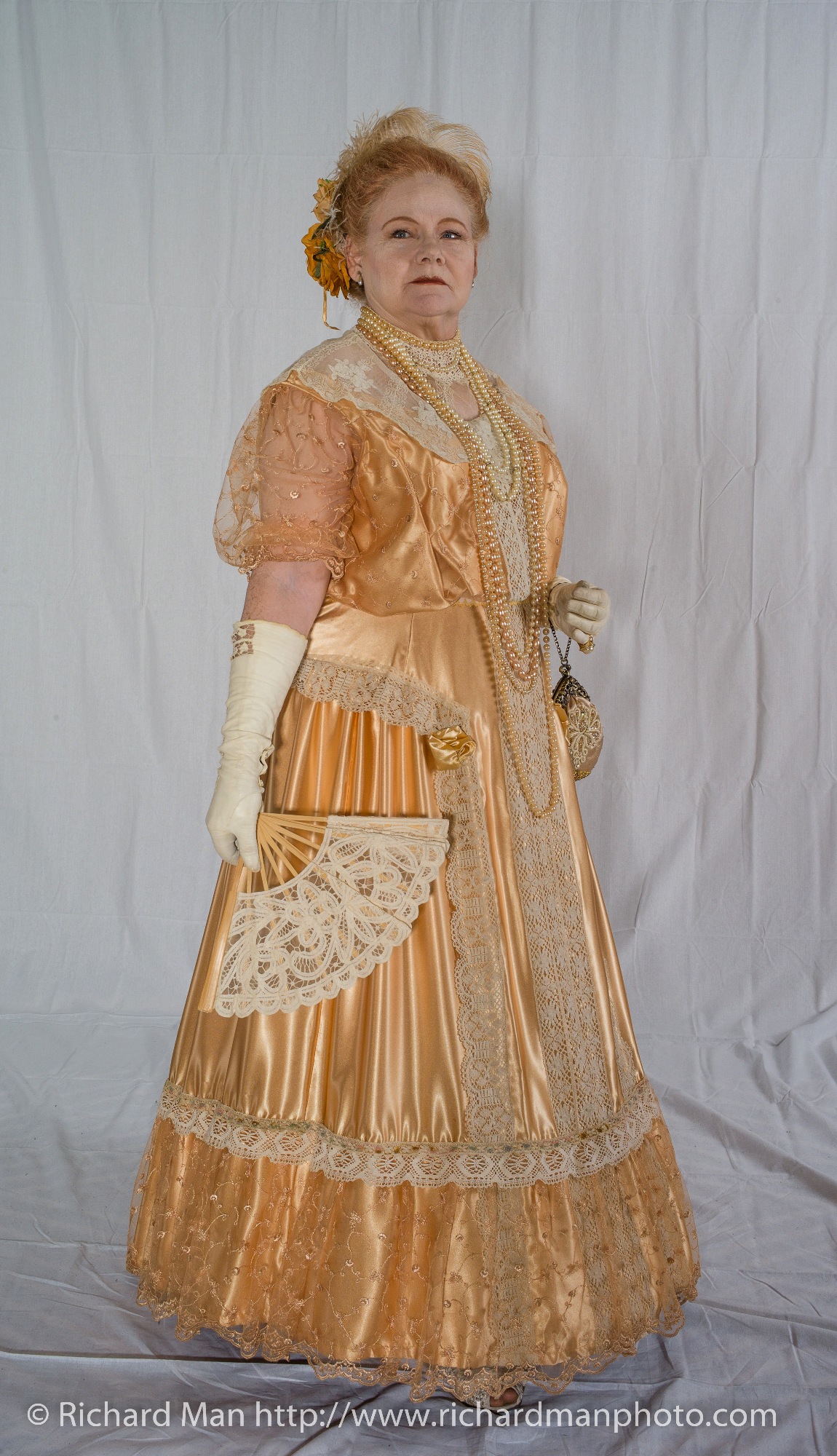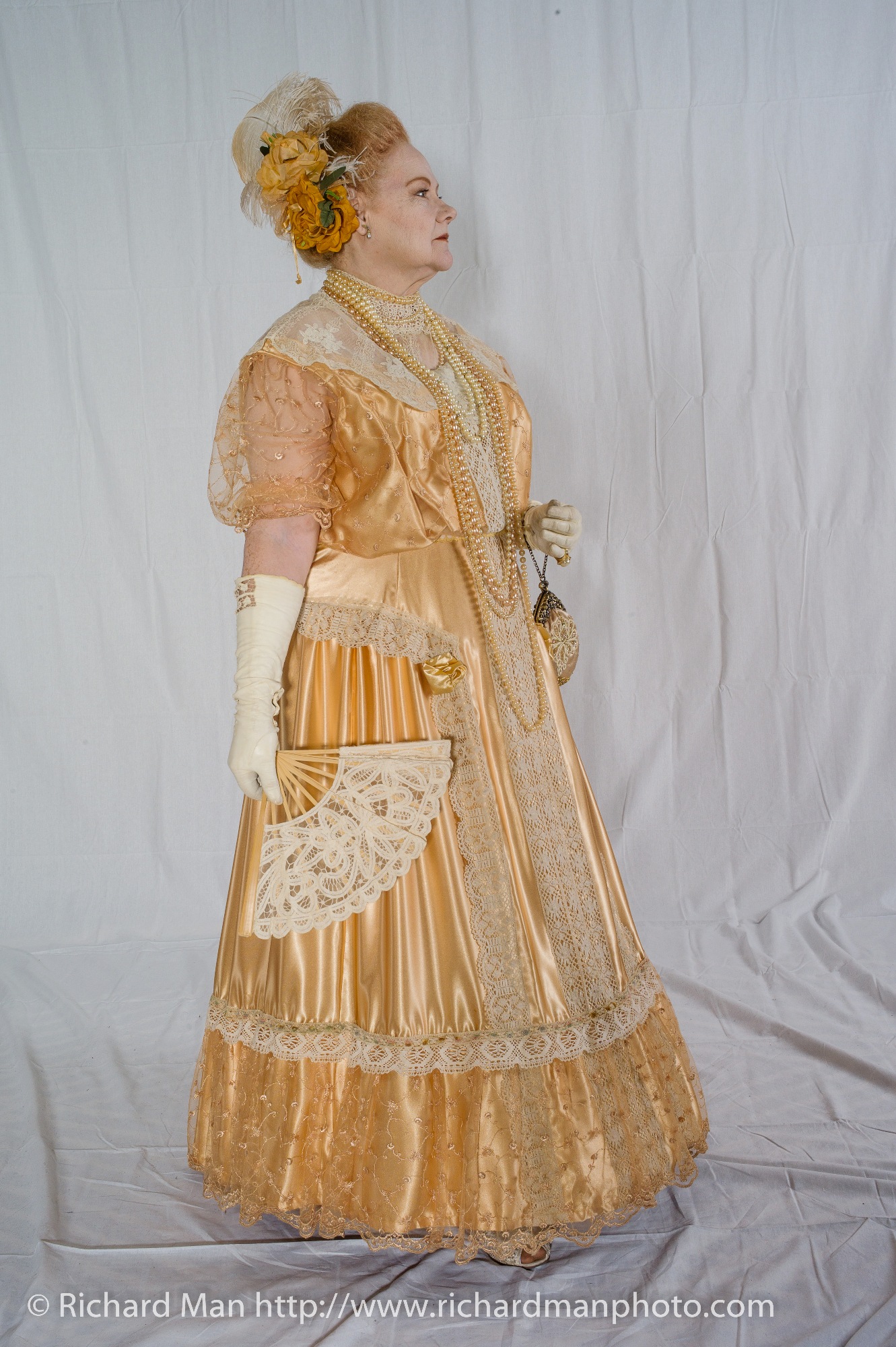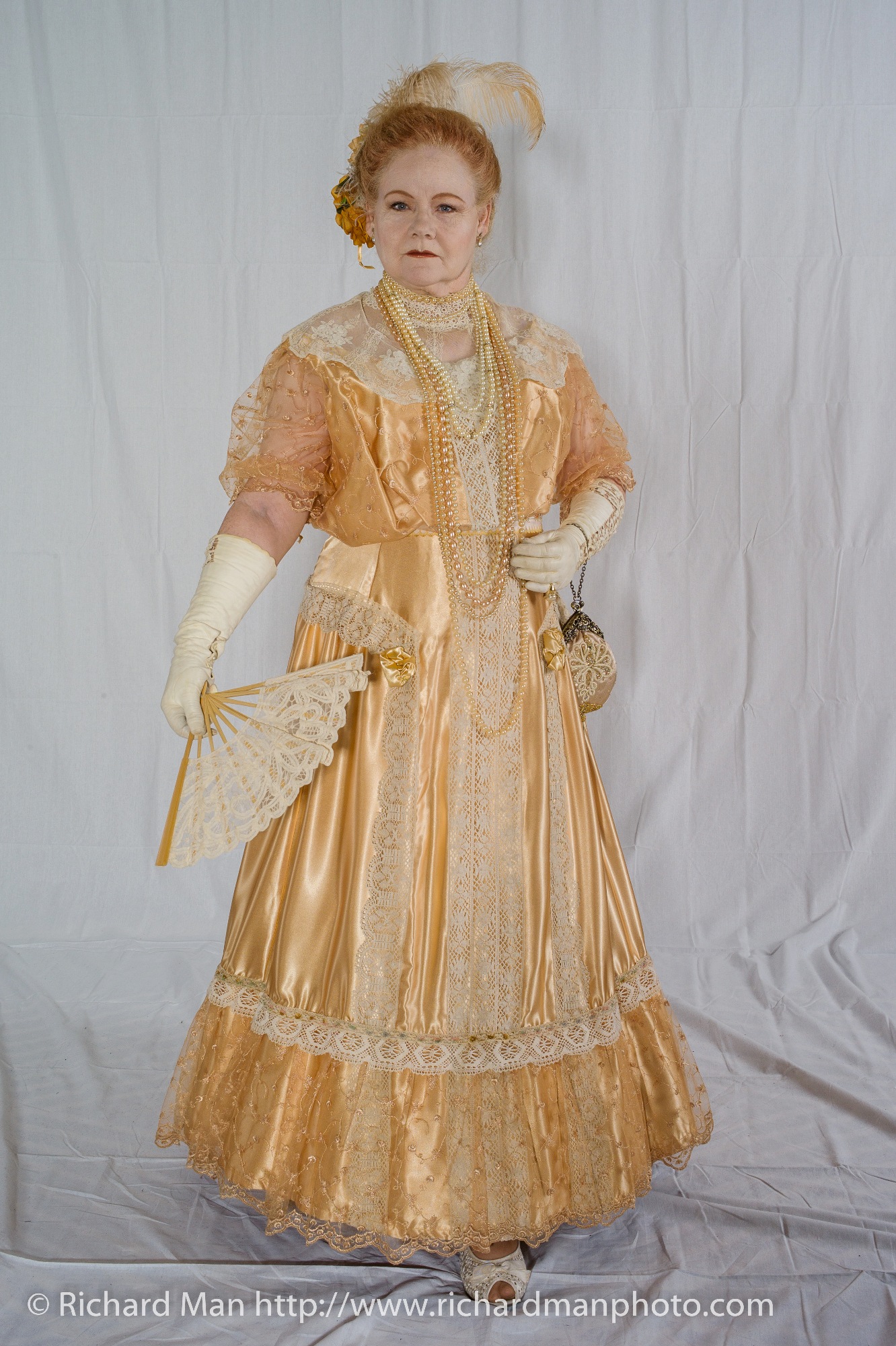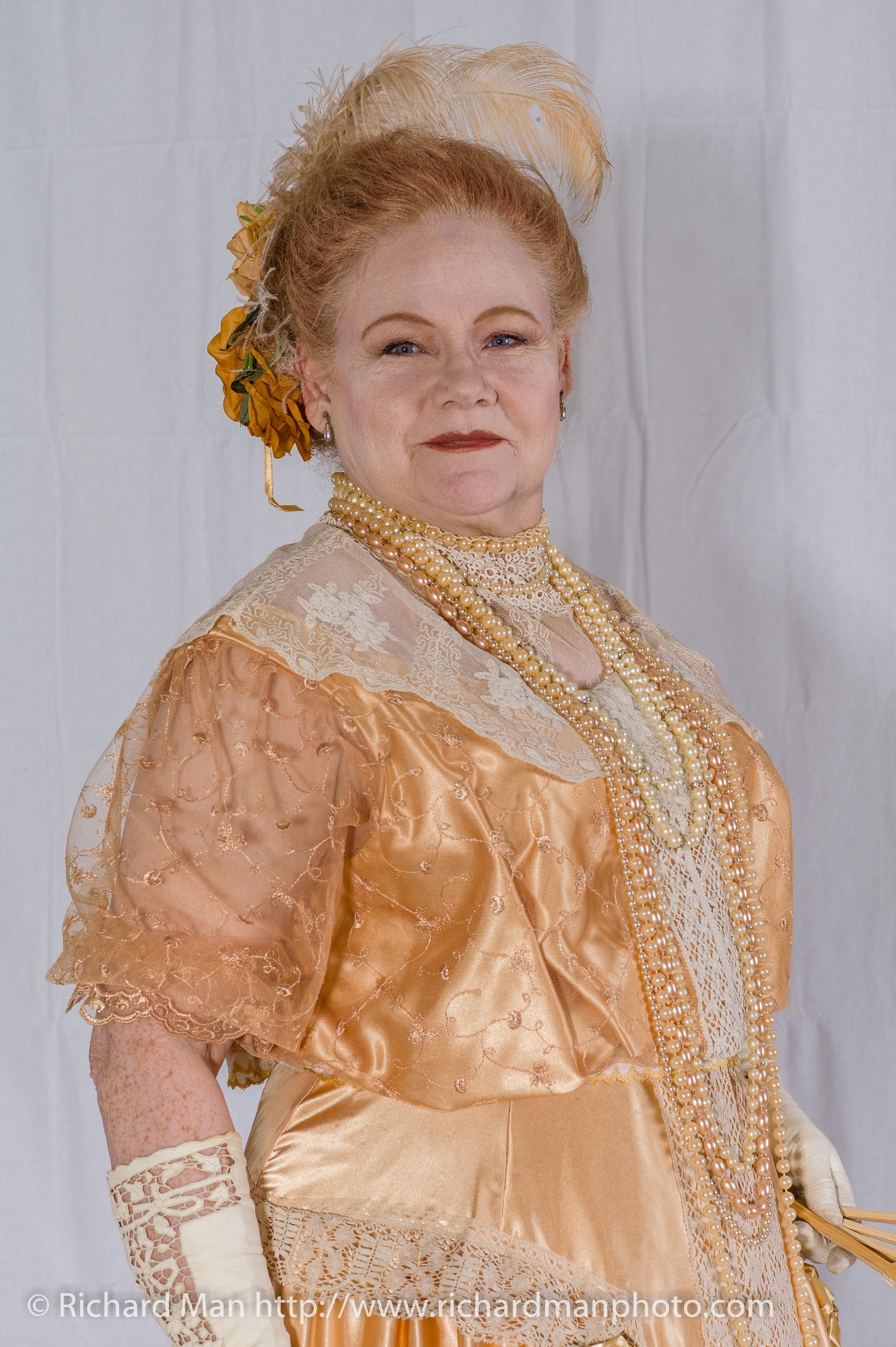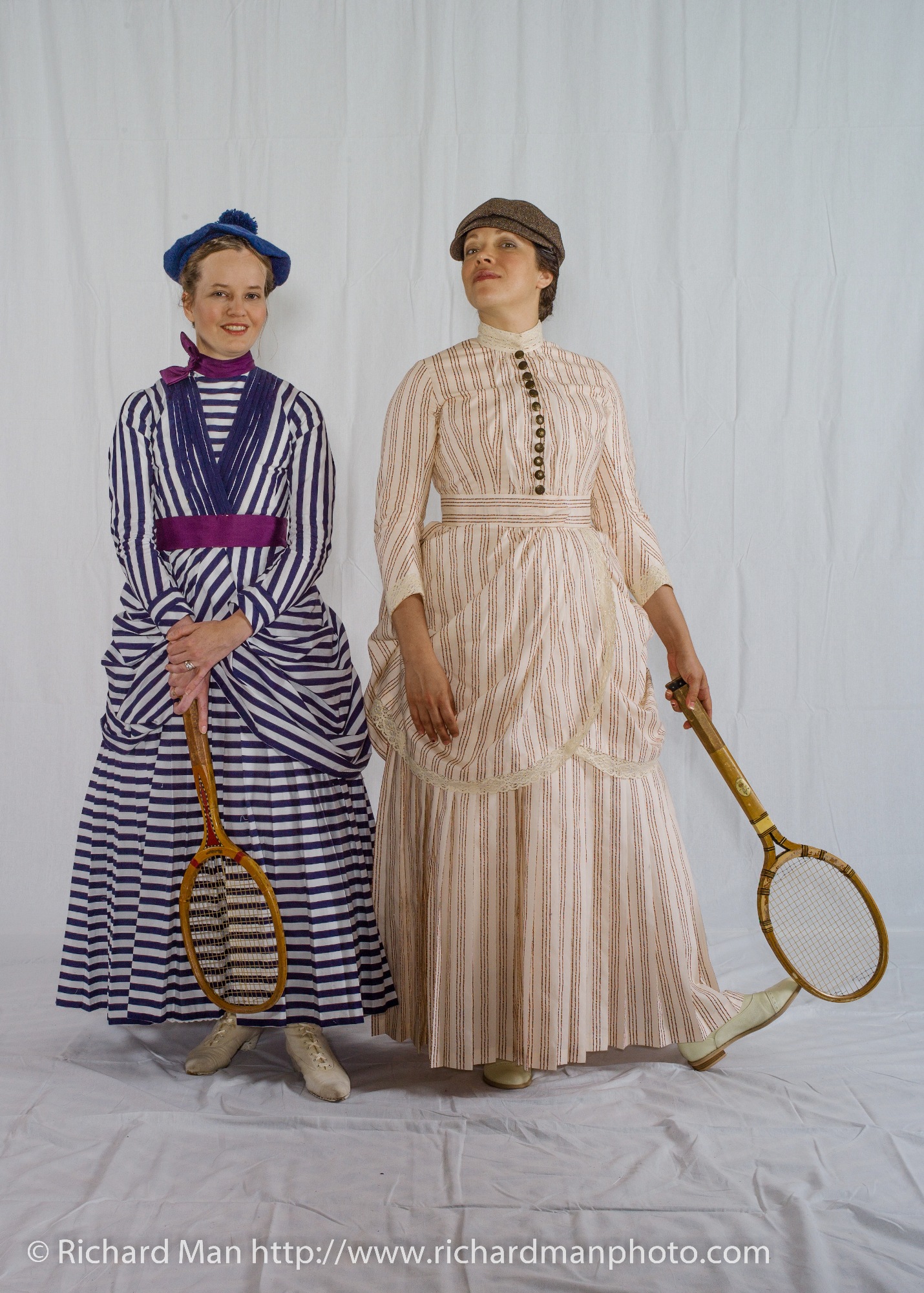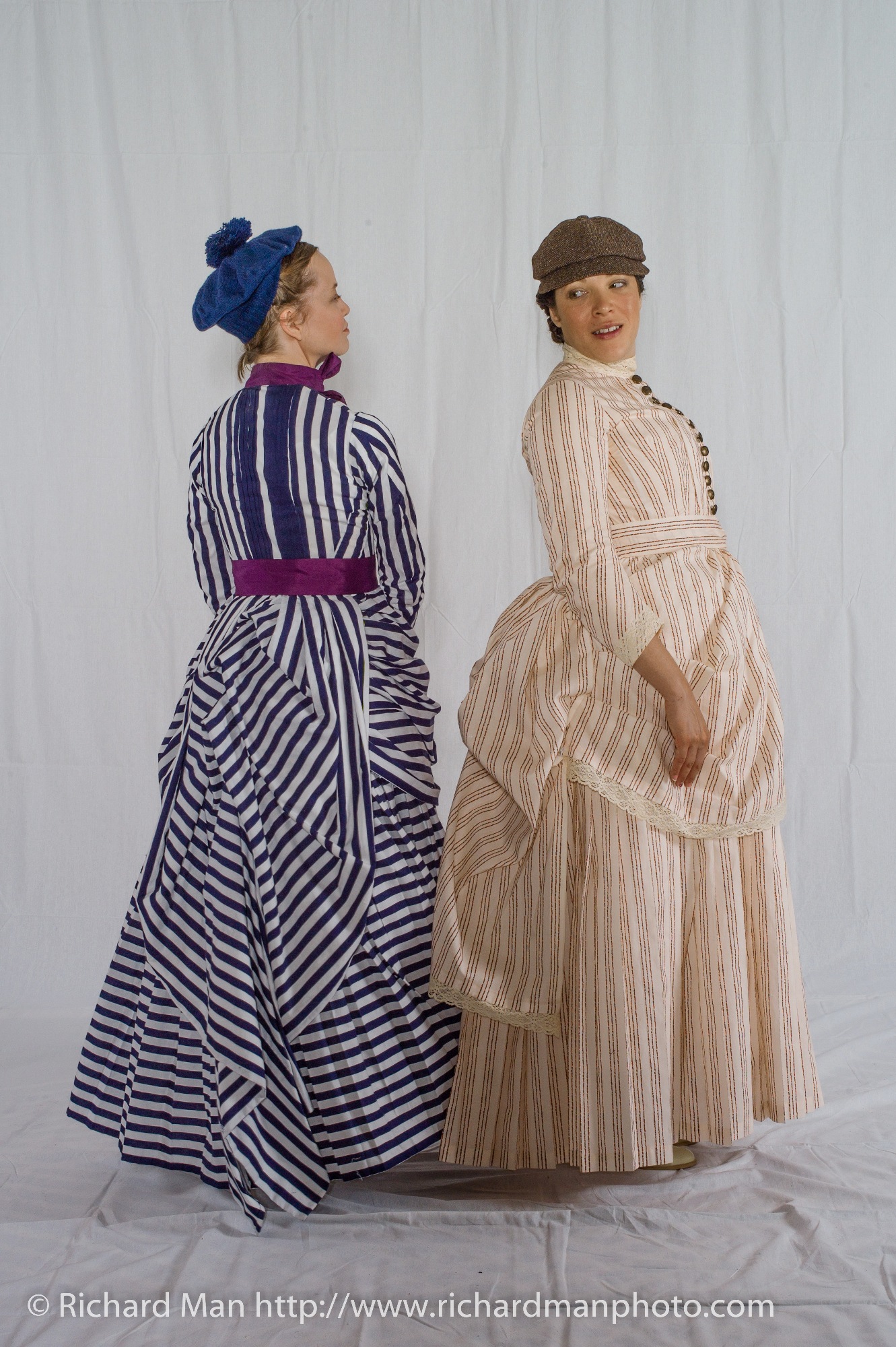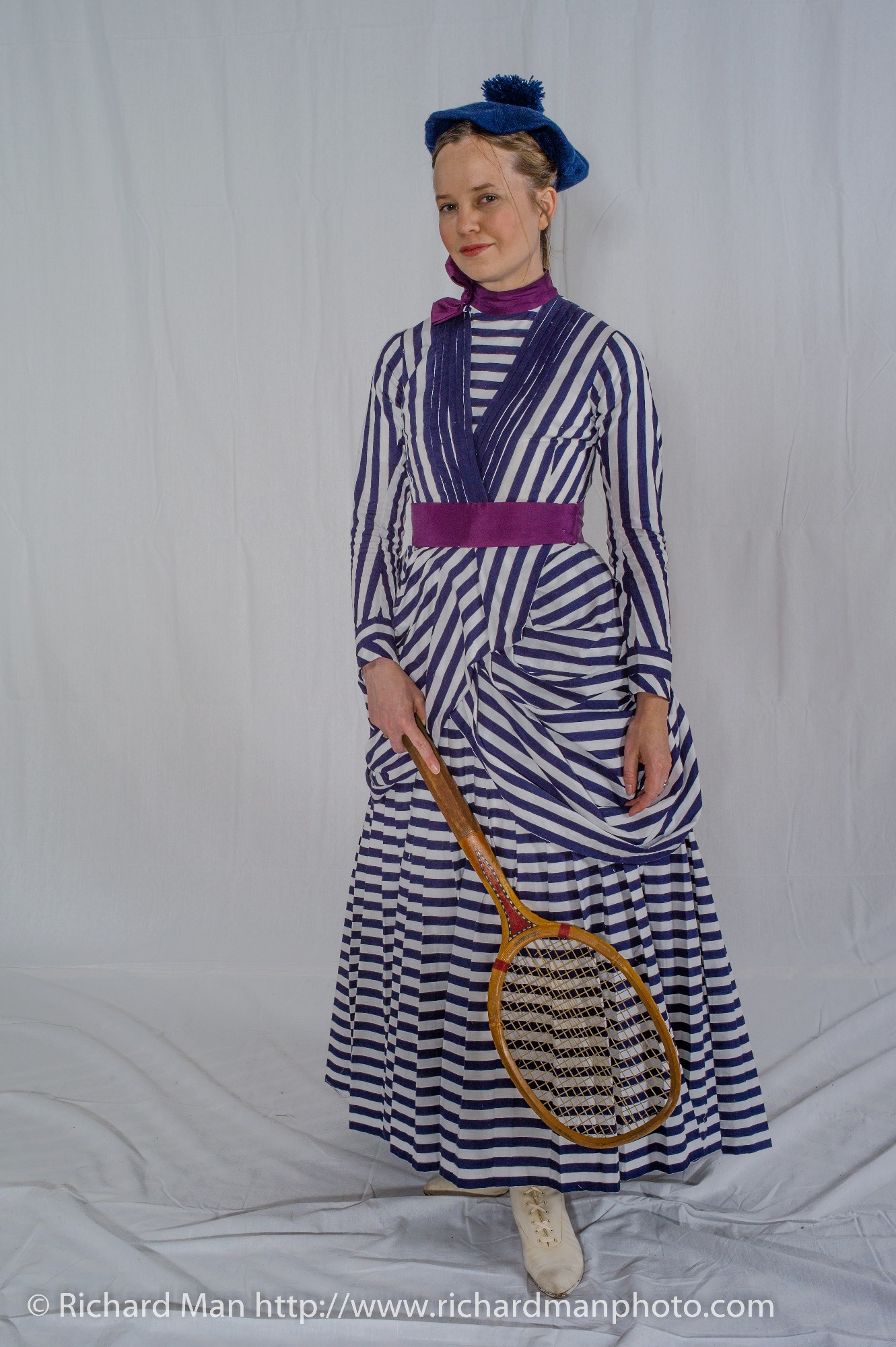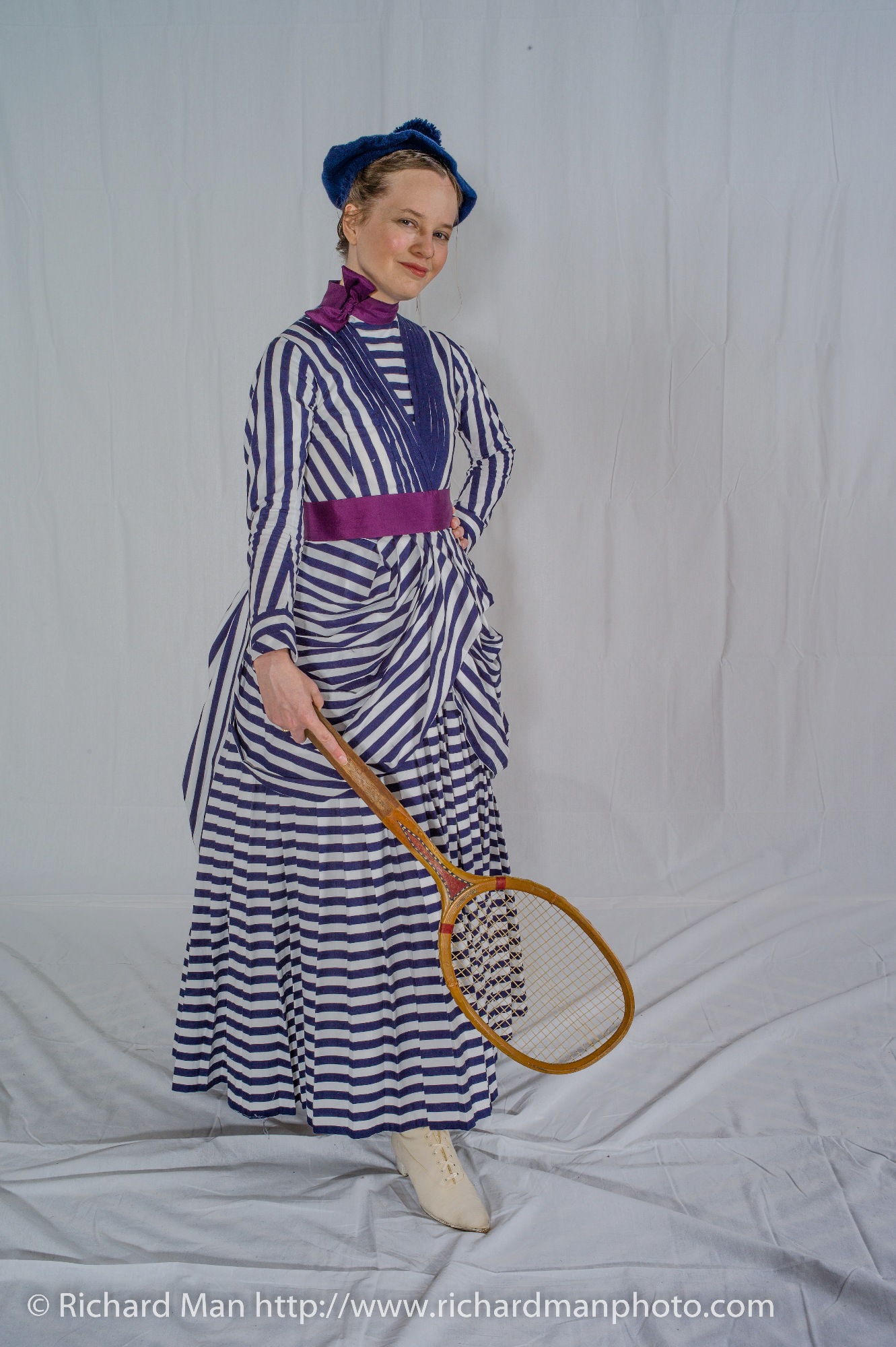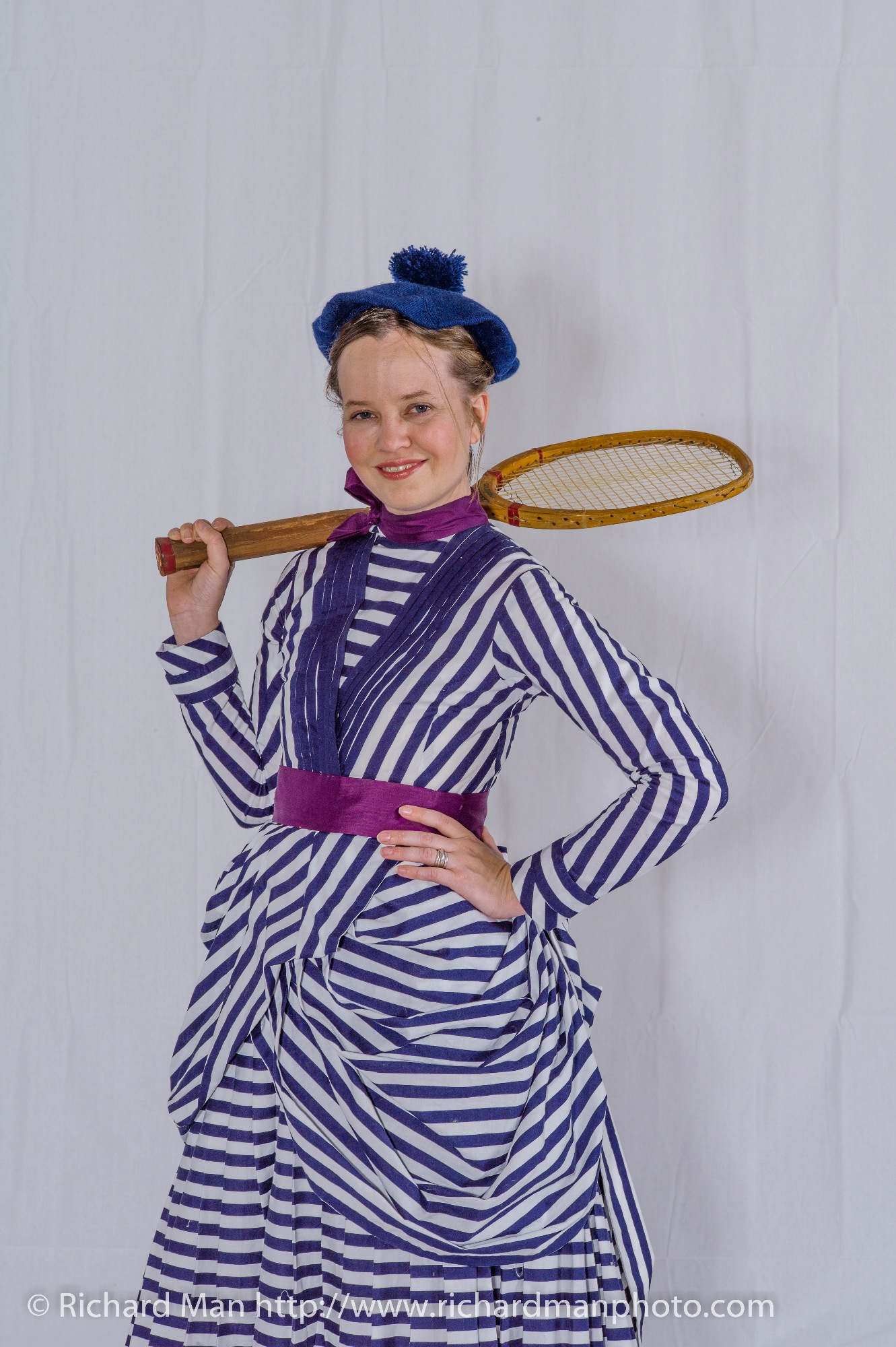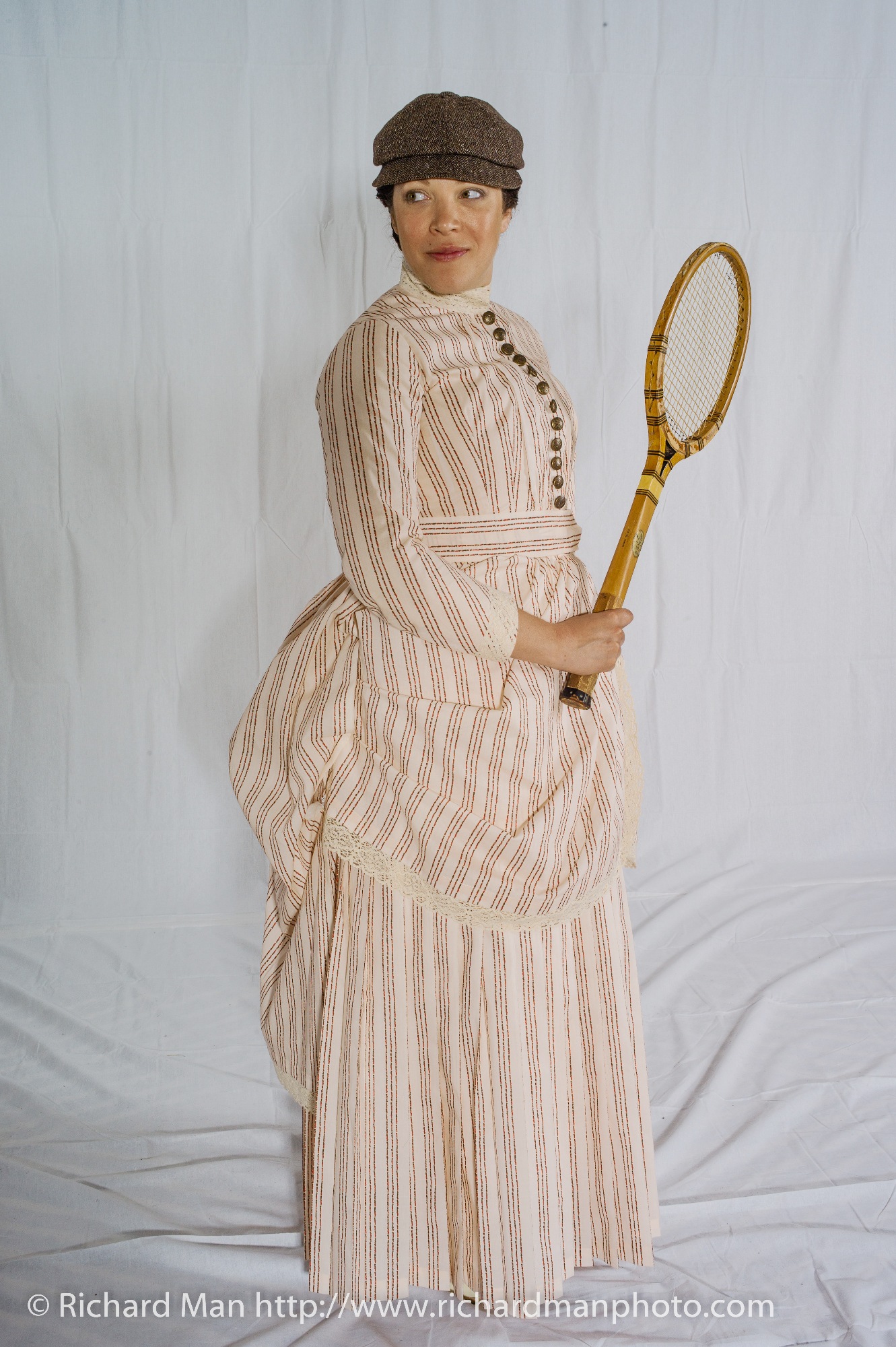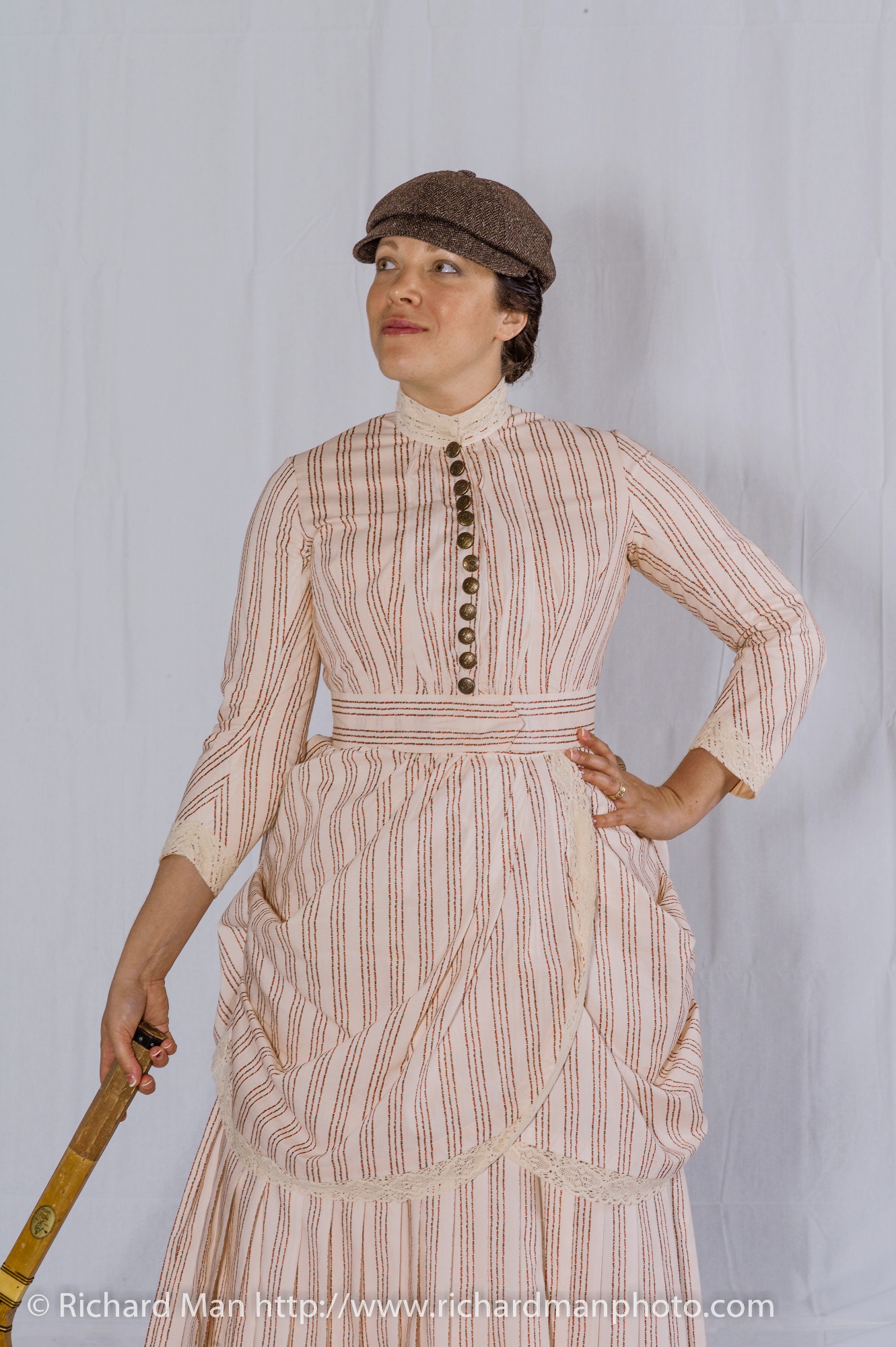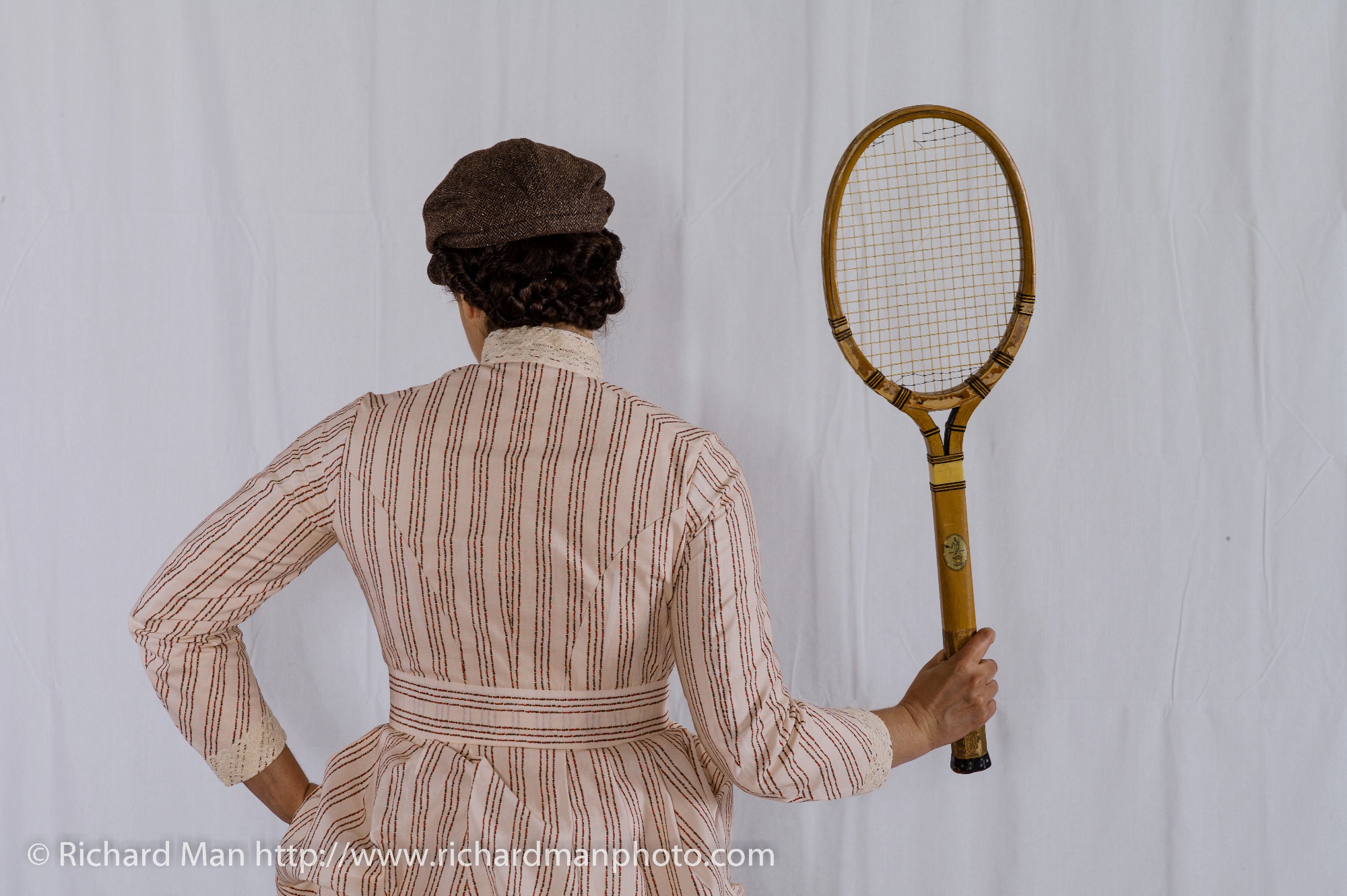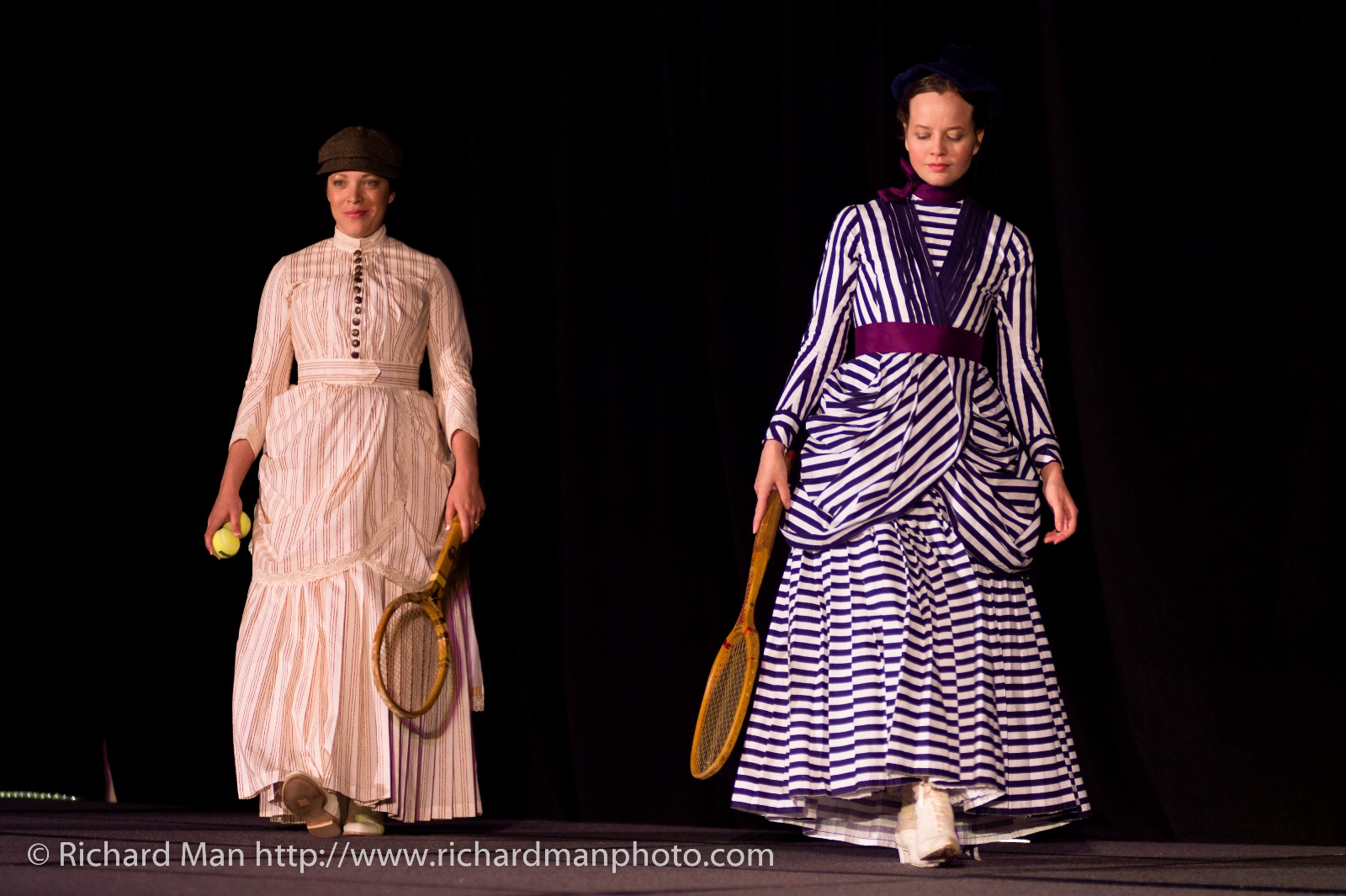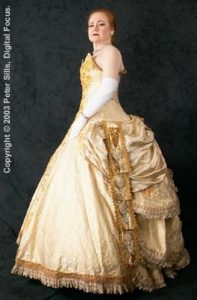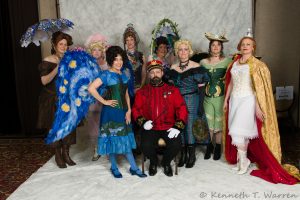Competition Staff & Rules
Staff:
- Director: Frances Burns
- Master of Ceremonies: Cary Riall
- Presentation Judges: Mela Hoyt-Heydon, Rob Himmelsbach and Diane Harris‡
- Judges’ Clerk: Unknown
Rules:
Historical Masquerade
For more information:
Frances Burns, Historical Masquerade Director
Email: [Removed]
The Costume-Con 30 Historical Masquerade recognizes creativity, scholarship, stage presentation and workmanship skills in the context of historical clothing. It celebrates the history of clothing and costume, including all cultures, periods, and types of dress. Historical costume is costume based on clothing that was worn or could have been worn somewhere in the world.
The Historical Masquerade will limit entries to costumes based on clothing that was worn, or could have been worn, through December 31, 1961.
The Historical Masquerade will take place on Sunday of the convention. To enter the CC30 Historical Masquerade you must be a member of CC30, as must any models you may choose to use.
All entries are encouraged to pre-register. There will be at-the-con registration, but also pre-register even if you only think you’ll have a garment completed in time is encouraged.
The Masquerade will follow the International Costumers’ Guild Guidelines for International-Level Masquerades, or Competitions.
Competition Categories
Entries in all categories are eligible for Best in Class and Best in Show. The Historical Masquerade will have three categories:
A. Historical Dress
is for a costume that is intended to look like it came from a particular period of history. This includes costumes copied from a specific artwork or surviving garment, original costumes meant to look as if they were designed and made in a particular period, and everything in between. It is acceptable to use modern approximates for period materials for reasons such as availability, cost, or safety; these approximations should be noted in documentation. Modern Sewing is allowed.
B. Historical Interpretation
Is for a costume that intentionally and visibly departs from the period on which is it based. It ought to be obvious to the viewer that this costume was not intended to be totally authentic. If the judges have to ask what makes your costume an interpretation, it probably belongs in Historical Dress.
The distinction between these two categories is based on the costume’s intent, not its execution.
C. Ethnic Costume or Dress
may be of any period (including the present).
Skill Levels
Skill definitions:
A. Young Fan:
This level is limited to entrants younger than 13 years of age. It includes entries made by a young fan and entries made by an adult that a young fan models.
B. Novice:
The Novice level is to encourage beginners. You may not enter at the Novice level if you have
1. won three awards at the Novice level in a Costume-Con historical masquerade;
2. won Best-in-Class in the Novice category or a Best-in-Show at a Costume-Con historical masquerade;
3. won at a level higher than Novice in a Costume-con historical masquerade;
4. competed at the Master level in Science Fiction and Fantasy masquerades at Costume-Cons or World; Science Fiction Conventions (these are the ICG-recognized international-level competitions);
5. won a SCA costume Laurel or
6. are a professional. Professional is defined as someone who earns a majority of his or her income from fashion or costume, including college or university faculty members.
C. Journeyman:
The Journeyman level is an intermediate level to allow further development of costuming skills. You may not enter at the Journeyman level if, at a Costume-Con historical masquerade you have
1. won three awards at the Journeyman level;
2. won Best-in-Class at the Journeyman level or Best-in-Show;
3. won an award at the Master level;
4. won a SCA costume Laurel, or
5. are a historical costume professional (as defined above).
D. Master:
This is an ‘open’ level. Any one may enter and compete at this level if they wish. You must enter at this level if you are not eligible to enter as a Young Fan or Novice or Journeyman levels.
A contestant may enter at a level higher than the one for which he or she qualifies. However, an entrant who then wins at that level may not subsequently compete at a lower level. If in doubt about the level at which to compete, consult the Masquerade Director.
A group entry will be assigned to a skill level based on its most experienced member.
Awards:
Our judges may present awards in three areas:
- Documentation
- Workmanship
- Stage Presentation
Entries will be judged against what the judges see as the award-winning standard. This means that you will not be competing against anyone else. The judges are not obliged to award Best-in-Class or Best-in-Show if, in their opinion, no entry meets the standards for those awards.
A. DOCUMENTATION
Every entry MUST have some documentation.
All documentation must be turned in at the masquerade registration desk by 10:00 AM Saturday of the convention. If you are arriving at the con later than 10:00 AM, please contact me well in advance.
1. Basic Documentation:
The basic requirements include:
a. Title of costume
b. Name and address of the person responsible for the entry (or spokesperson for a group)
c. Name(s) of designer(s) and maker(s)
d. Brief identifying description of the costumer’s historical period, geographic origin, social class, and so forth.
e. Bibliography of sources
The brief identifying description should include evidence of the historical basis for the costume. This could be as little as one photocopy of a single picture with an identifying caption or it could be more comprehensive. Assume that the judges are not familiar with your costume(s) and time period. You may wish to begin with a brief statement of what you are trying to accomplish and your rationale for choosing the project.
2. Advanced Documentation:
In going beyond the minimal requirements, your documentation might include the following:
a. Pattern sources
b. Photocopies of visual sources, such as artworks, costume drawings, and sketches that you used (no originals, please)
c. Swatches of fabric and trim
d. Your own photograph(s) of original historical garments or accessories
e. Brief descriptions of any special skills or tools you used, such as shoemaking, weaving, or welding.
3. Good Documentation: (Basic or Advanced): Outstanding documentation demonstrates a comprehensive knowledge of the historical source(s) on which a costume is based, with rationales for all elements of the costume, including undergarments, accessories, and minor details, and explanations for deviations from the norm of the period. Excellent documentation also is organized logically and neatly, and presented attractively. Some contestants even go to the length of designing documentation in a style consistent with the costume.
4. Length of Documentation: Outstanding documentation is brief; long enough but no longer than you need to demonstrate the historical basis of the costume. Please be concise. Text (exclusive of bibliography and captions on illustrations) is limited to no more than three sheets of 8 x 11 typed in minimum 10 point easily legible font (examples: Arial, Times New Roman) and double-spaced pages. There is a 10 page limit on captioned photographs and illustrations, fabric swatches or other samples, references, or bibliography. In a group entry each costume can have the same number of pages.
REMEMBER the judges only have a short time to review your documentation!
5. The following will not be accepted as part of documentation;
a) original sources, including books and paintings (make copies),
b) slides,
c) computer files,
d) video (tape/CD/DVD etc).
6. Copies: Submit 3 copies of your documentation – 1 in color and 2 BW Xerox is OK. We have 3 judges and Xerox is your friend.
A general note on documentation – the easier and clearer it is, the more likely the judges will see what you are trying to emphasize. They only have a short time to review your documentation so remember the KISS principle!
B. WORKMANSHIP
This part of the competition is REQUIRED of all Historic Dress entrants, and is OPTIONAL for Historic Interpretation and Ethnic Costume or Dress entrants. Again, all entrants may sign up for Workmanship and Detail judging but are not required to. However, IF YOU OMIT WORKMANSHIP JUDGING, YOU WILL NOT BE ELIGIBLE FOR AN AWARD IN THE WORKMANSHIP CATEGORY.
This is your opportunity to let the judges admire your work up close. Each entry will meet by itself with the panel of judges to show off the costume. Entrants will be expected to show the judges all necessary parts of the costume. If there is an item or element of the costume you want the judges to note especially, be prepared to point it out to them. We recommend that you bring, rather than wear, the costume to the prejudging, so that the judges may handle and examine your work inside and out. However, if you decide to wear the costume to pre-judging, be prepared to have the judges look down your cleavage, under your skirt, or at your underwear.
Pre-judging time will be strictly limited to approximately five minutes and certainly no more than ten minutes per person. The schedule will depend on the number of entries received by close of registration. Contestants will have an opportunity to sign up in advance at masquerade registration for appointments with the judges.
C. STAGE PRESENTATION
ALL ENTRANTS, REGARDLESS OF CATEGORY, MUST APPEAR ON STAGE. Here is your opportunity to complete your illusion before an appreciative audience.
1. Entries with one to six persons will be limited to a maximum of 60 seconds on stage.
2. Entries with seven or more persons will be allowed up to 90 seconds.
Please keep in mind that these are maximum, not minimum, lengths of presentation. Feel free to use less time. If you feel that the maximum allowed will not be enough time to show your presentation, the Masquerade Director will be willing to listen to your argument and possibly allow more time, but that is at my discretion. The Masquerade Director strongly believes in brief presentations-30 seconds normally should be sufficient to present a one-person entry to the judges and the audience.
Other Rules:
1. All the general stage presentation rules for Costume-Con 30 masquerades will apply.
2. Each contestant may appear only once on stage. You may enter another costume, but it must be on another body.
3. There must be some display of skill in creating and executing a design. No flagrant nudity; the masquerade is rated PG-13. The Judges will not award what Mother Nature created. Remember: no costume is no costume.
4. No purchased, rented, or inherited costumes may be shown in competition in the masquerade.
6. Costumes that have won major awards for presentation or workmanship at previous Costume-Con or Worldcon competitions (excluding Honorable Mention) are ineligible to compete for an award, but may appear out of competition.
7. No live animals (other than guide animals) may be used in the masquerade.
8. Your costume may not be made of or trimmed with messy substances (the no Peanut Butter rule). Nor may it use any other substance which could cause harm to another entry in the green room or following you on stage (ex: no handfuls of loose glitter). If it cannot quickly be removed by a stage ninja do not bring it on stage. Check with the Masquerade director if you have questions.
9. No fire, flame, flashes, firecrackers, or explosions will be permitted. – no exceptions.
10. Costumes with electric power requirements must be self-contained – no extension cords.
11. Small children must be under the control of a responsible adult at all times (back stage as well as on stage).
12. Your costume must be completed before you get to the Green Room. No sewing, gluing, soldering, welding, or other construction work may take place in the Green Room except the final assembly of large costumes and props or unexpected repairs.
13. No Live microphone is available for entrants’ use; pre-recorded dialog or a script for the MC is encouraged. Please keep a script for the MC to no more than about 100 words. (Details on card size to come later.) Do not expect to be heard ‘live’ from the stage; you won’t be.
14. The default music format will be announced later.
15. The default lighting will be announced later.
16. Following a presentation, the entrant(s), roadies, or ninjas must remove all props left on stage in a single quick pass.
17. Use of weapons on stage, including caring/wearing weapons, must be approved in advance by the Director. No exceptions. If you intend to use a weapon on stage you must have the Masquerade director’s approval in writing. Unless you have been formally trained in stage weapon work do not expect to get approval.
18. Entrants and their roadies will be required to attend a tech rehearsal. Further information on schedules, including times for rehearsals and presentations, will come in future PRs.
19. The Green Room and back stage area are intended for entrants, roadies, and masquerade staff only. Entrants are asked not to invite other friends or family into the Green Room. Small children must be under the control of a responsible adult at all times (back stage as well as on stage).
20. Surprise the audience, but NEVER surprise the Masquerade Director, MC, or Crew!!! If you are planning something unusual or unique, or if you would like to request an exception to any of the rules above, please contact the Masquerade Director well in advance of the masquerade.
21. If you feel any or all of these rules don’t apply to you, you are wrong. You must convince the Masquerade Director to make an exception long before the masquerade. Offers of cash and/or chocolate will not help here.
22. The Masquerade Director has the full authority to eliminate anyone from the competition on the grounds of bad taste, danger to self and/or others, violation of the above rules, or any other reason deemed sufficient by the Director. There is no appeal. Offers of cash, chocolate, and/or shiny things will not help. Not even sharp pointy objects.
Historical Masquerade – FAQ’s
For more information:
Frances Burns Historical Masquerade Director
Email: [Removed]
Click here for Historical Masquerade Rules
Click here for PDF of Stage Layout
What is a Historical Masquerade?
It is a series of short presentations showing off historical costumes. Usually the presentations are designed to educate and entertain you. They can be anything from modeling the garment while the Master of Ceremonies (MC) reads a description to an elaborate skit with a background set. Most presentations run under a minute, only with very large groups is the time limit over a minute.
After the presentations there is a break while the audience has fun taking pictures of the costume contestants and the judges are frantically debating who gets what award. Once the audience has more than enough time to finish taking pictures and starts wondering – what is taking the judges so long – the judges finally return and announce who has won what award in what category.
What is considered a historical costume?
For the purposes of this event it is anything from before December 31, 1961. Each historical masquerade director sets their own time frame. Since I was exposed to furniture collecting long before costume collecting anything less than 50 years old just doesn’t seem that old to me, c’est la vie.
If I enter what should I expect to happen?
Sign Up
Either at the convention or before you will fill out a masquerade entry form. You can send the form to yours truly (the historical masquerade director) or fill it out at the convention.
Before 10:00 AM Saturday at the Convention you must check in, turn in your entry form (if you haven’t already), turn in your documentation, and sign up for you technical rehearsal spot. If you are going to be late – let me know ahead of time!
The other check-in items are optional:
- drop off your sound track if you have one,
- drop off a script for the MC to read if you have one, and
- sign up for workmanship judging if you chose to.
Tech Rehearsal
The sign-up sheet for technical rehearsal slots will be at masquerade sign-up table. Each technical rehearsal slot will be for at a maximum of 15 minutes. Each group only gets only one rehearsal slot no matter how many people there are in the presentation.
You must be on time and you must go to your rehearsal! If you miss your rehearsal slot, at the masquerade director’s option you can be eliminated from the contestant.
Why am I being such a hard-ass about this point? Your safety and making sure that your costume shows to the greatest advantage.
Your tech rehearsal is when you get a chance to walk the stage, talk with the stage ninjas, check with the lighting crew, talk with the MC, and make sure that they will not be getting any surprises during your presentation.
Remember: Only surprise the audience and the judges, never your stage people, MC, or masquerade director.
FYI – Your MC is really good, if your presentation calls for him to act surprised, he does a great job of it. I have seen him work as a foil or add an extra comedic punch to a presentation and he is really, really good.
If you are planning an especially vigorous performance or on using weapons this is the time to get that cleared. If you do not get them cleared you can again be disqualified at the masquerade director’s discretion
If you included sound that will also be checked at the tech rehearsal
Optional: Workmanship Judging
You can sign-up for workmanship judging when you sign in for the masquerade The time slots are for 15 minutes, but plan on a maximum of 10 minutes to present your information to the judges.
Be on time, but don’t be surprised if the judges are running late. If there is more than one person in your group who is going for workmanship judging, let the masquerade director know so that you have the appropriate number of time slots.
When you go for workmanship judging take the items you want to show the judges. You do not need to be wearing your costume. It is up to you if you start from the skin out or you just bring in a couple of pieces to display.
In judging chamber there will be the three judges and their clerk. Part of the clerk’s duties is to remind the judges of the time, so the clerk is really not being rude when they break in and say how long you have been there.
At workmanship judging you get to point out the things you want the judges to take special note of. Things like you drafted the pattern yourself, you did all that embroidery by hand, you distressed the costume using paint so it would look more authentic, or maybe you made and fired all those beads by hand. You want to point out the things you are proud of and want the judges to notice.
The judges may or may not ask you additional questions. Remember the judges are not mind readers! You are the person showing them what you want them to consider.
The Night of the Masquerade
You report into the green room an hour and a half before time show time. There will be a table where you check in, get you entry number and are assigned a den and den parent.
You should be in your costume and have your make-up on. We do not have dressing rooms or makeup tables. You will have some pictures taken and wait for the show to begin. And then you wait.
Finally you will get up on the stage and give your presentation. Enjoy the audience reaction. And then wait to see what you have won!
The Next Day
You will pick up your documentation and music at a time and place specified by the masquerade director. I am really hoping that your documentation can be displayed where others can appreciate your work.
What are these class things? Novice, Journeyman, Master
Young Fan: Open only to people 13 or younger.
Novice: If you haven’t heard these terms before and you are not an SCA costume laurel or don’t make your living making costumes you are a novice. (Isn’t nice to know that you will not be competing against people who have done this lots of times before?)
Journeyman: You have done this before; in fact you have won three CC historical masquerade awards or 1 best in class as a novice so you have moved up a level! You are not an SCA costume laurel or don’t make your living making costumes.
Master: You have so done this before, you have won three awards as a journeyman or 1 best in class as a journeyman and moved up to Master level or you are an SCA costume laurel or make your living making costumes.
The point of classes is so that people who are on about the same level of experience are competing against their peers. Of course there is no way to weed out the overachievers
Why Documentation?
No matter how good your judges they cannot know everything about every era. Documentation gives you the chance to give the judges the information they need to accurately judge your costumes historical accuracy.
Example: Do you really expect the judges to know off the top of their heads what insignia and uniform a Colonel in the Civil War from in a volunteer unit raised Boston during the second year of the Civil War would have on their dress uniform. (It is not as clear cut as you would expect based on current US military practice.)
Documentation looks very intimidating to put together – I am not sure where to start.
Remember the 5 W’s of writing. Who, what, when, where, and why. OR
- When was this garment in fashion?
- Where was this style of garment worn – including country?
- Who would wear this garment?
- What is the basis for my design?
- reproducing a garment from a picture,
- an extant garment
- by mixing several designs from the period for my own unique creation,
- starting from the period and made significant changes (Historical Interpretation)
- or this is an ethnic costume
Why did I make the design choices I did? This is a good spot to also put in information about fabric substitutions, like – I used rayon velvet instead of silk velvet because of availability and cost.
Find pictures, samples, and other information to back up your research. And document it: think classical bibliography here.
Now that you have all that wonderful information together comes the hard part – getting it down into 3 double spaced typed pages and 10 pages of pictures or less.
Damn – now it sounds even more intimidating!
You can cover the 5 W’s with a page photo copied out of a book, especially if the book has good captions, along with hand writing the bibliography information on the photo copy.
You really don’t have to write a term paper. How much detail you need to go into depends on your costume.
Believe me the judges will appreciate brevity! After all they are reading the documentation and doing the workmanship judging during the convention, and they really would like to get a chance to also see a little of the convention.
Why do you want copies of the documentation, I have never done that before.
I am asking for one original and 2 black and white copies to make it easier for the judges to look at your documentation, after all there are 3 people trying to look at the same material.
I promise that all the judges will get a chance to look at your original documentation so they can appreciate it.
What are the dimensions of the stage?
The sketch of the stage is now out on the website for your perusal. The ceiling is 12 feet tall, the stage height will be at least 1 foot or maybe 2 foot. You will not have to go through any doors between the green room and the stage. I would suggest not planning on a costume that is taller than 8 feet, just so you have a little head room. Keep checking back on the technical details they are still being worked and are subject to change.
What format do you want the sound track in?
TBD – also something that we are still working out with the tech crew.
How important is a sound track?
Although you are not required to have a sound track, I highly recommend having one. A sound track really helps you to remember your cues on stage and pace your presentation so you do not go too fast or too slow.
I want to talk while I am on stage, can I use the microphone?
The microphone will NOT be available to the contestants. If your presentation includes your talking record it onto your master sound track.
Can I use fire, pyrotechnics and or weapons in my performance?
No fire or pyrotechnics are allowed, we want to keep the fire marshal and hotel happy.
Weapons, stage combat and vigorous presentations must be discussed with the Masquerade Director PRIOR to technical rehearsal.
Weapons, stage combat and vigorous presentations must be approved by the Masquerade Director (or their delegate) at the technical rehearsal.
I am not sure my costume will be done before the start of masquerade,
should I still enter?
Yes, if you are not done we can always pull your entry number. You a just following the grand old tradition of not being ready until the last minute. Just be sure you go to your technical rehearsal.
Are there any unwritten rules I should be aware of?
Since this convention was derived from the Science Fiction side of the universe there are two unwritten rules:
- Do not wear your costume as hall costume before the masquerade.
- If you have won with it at a SF World Con you cannot enter it for competition.
Are there any other things you would suggest I do?
Yes – eat something before getting dressed for masquerade. I know a lot of people get really busy the afternoon before masquerade, I certainly do, just don’t forget to take care of yourself. And remember you are in this because it is fun, enjoy the experience and remember your sense of humor.
Who is the CC30 Masquerade Director?
The Masquerade Director is Frances Burns. She is the president of SWCG and usually works either back stage or as the Masquerade Director at local conventions. Frances started sewing more years ago than she cares to remember and got involved with the SF costuming community in the mid ‘80s. And does not do a good job of writing up stuff about herself.
